Andalusia is one of the most breathtaking regions in all of Spain, one of those which will exceed all expectations! White villages against barren landscapes, vibrant cities full of orange blossom scent, rich culture and history, wonderful sunsets on the sea, tapas and tinto de verano… it has something to offer for everyone! And there’s no better way to experience it all than by embarking on a campervan road trip through Andalusia. Keep reading for the ultimate road trip itinerary in Andalusia!
Your home-on-wheels will take you on meandering mountain roads between hilltop castles and some stunning Pueblos Blancos where you’ll get to try mouthwatering tapas along the way. The landscapes are iconic. Picture sweeping olive groves in open valleys, dotted with orange trees overlooking white villages in the distance. Or as you get closer to the coast, white sandy beaches, turquoise sea and Moroccan coastline on the horizon.
From charming villages to historic cities, discover the best places with this ultimate road trip itinerary in Andalusia. Along with the must-dos and best photography spots, I will share with you the itinerary details and some free camper-friendly places to stay at.

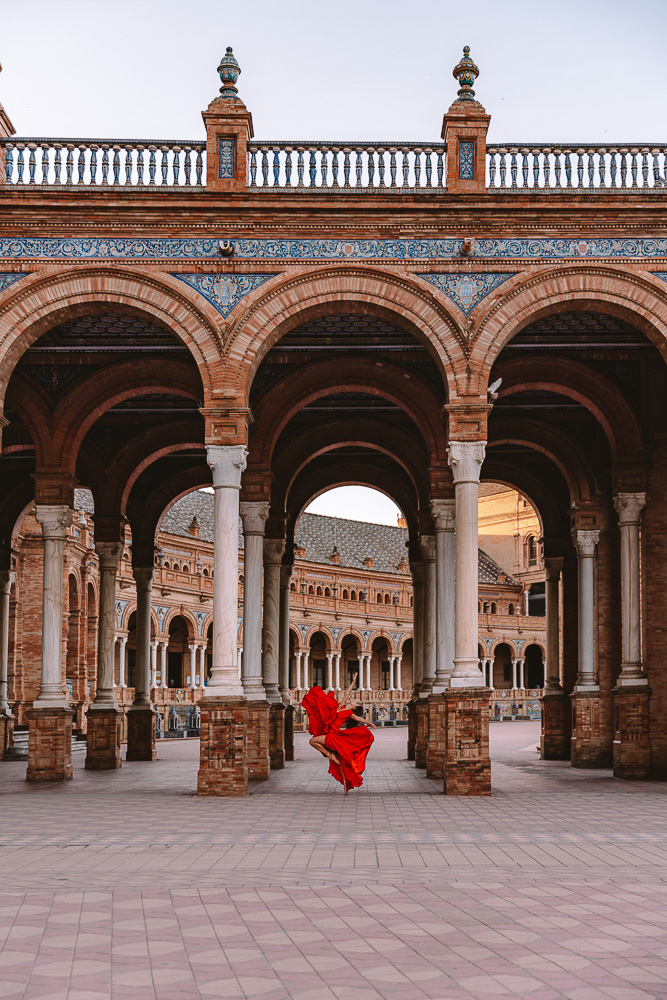

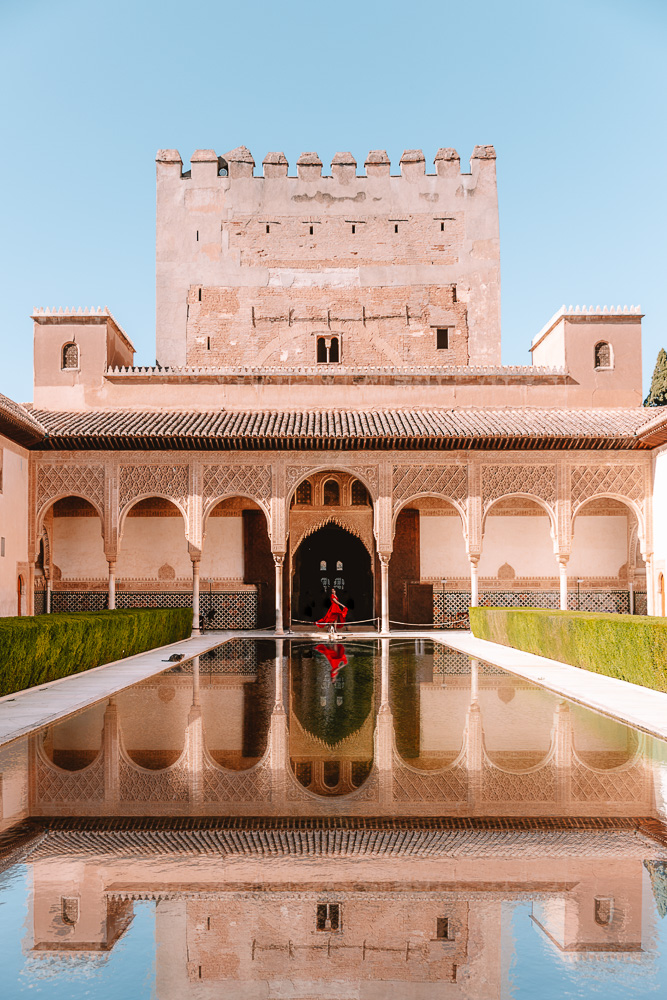

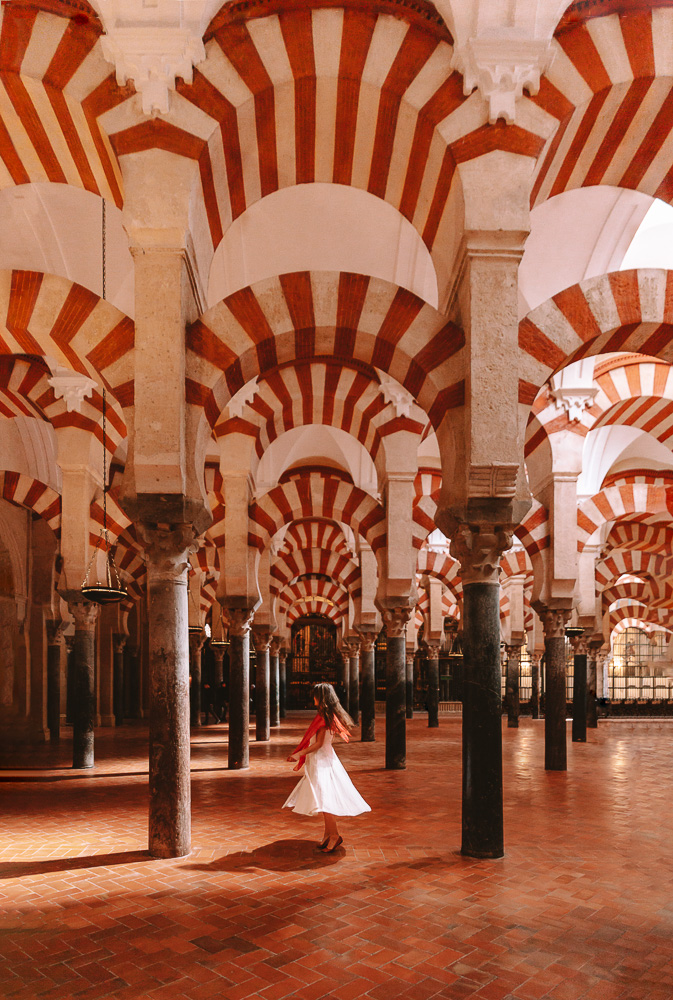
Andalusia: the ultimate 2 weeks road trip itinerary
Andalusia is one of the best places to road trip and/or experience van life. The drives are beautiful, crossing a diverse range of landscapes, there’s plenty of freecamps and stunning campings with the best views, and the region is overall quite cheap. Two weeks is an ideal amount of time to see the most famous cities, the charming white villages and some of the best beaches in Spain. This ultimate road trip itinerary in Andalusia covers it all!
Tip: If you want to shorten up this itinerary, Sevilla, Granada & Córdoba are easy to explore on a weekend each. They make for the perfect weekend trip on their own. They are also well connected by train, like all major cities in Spain (Barcelona, Cádiz, Córdoba, Granada, Madrid or Málaga). This means you can easily travel between them without having to drive or you can arrive by train if traveling from an international airport.
Rent your van through Van Break Malaga for affordable prices and insurance included. I traveled with the Campeo Campervan which is a fully self-contained van of 2m large, 2.5m high and about 5.5m long. I chose to stay in freecamps all the time as we also had a great autonomy. Every parking spot I recommend here are perfect for self-contained big vans/mini motorhome. I’ve put together for you the 10 reasons why you should travel with a campervan on your next trip!
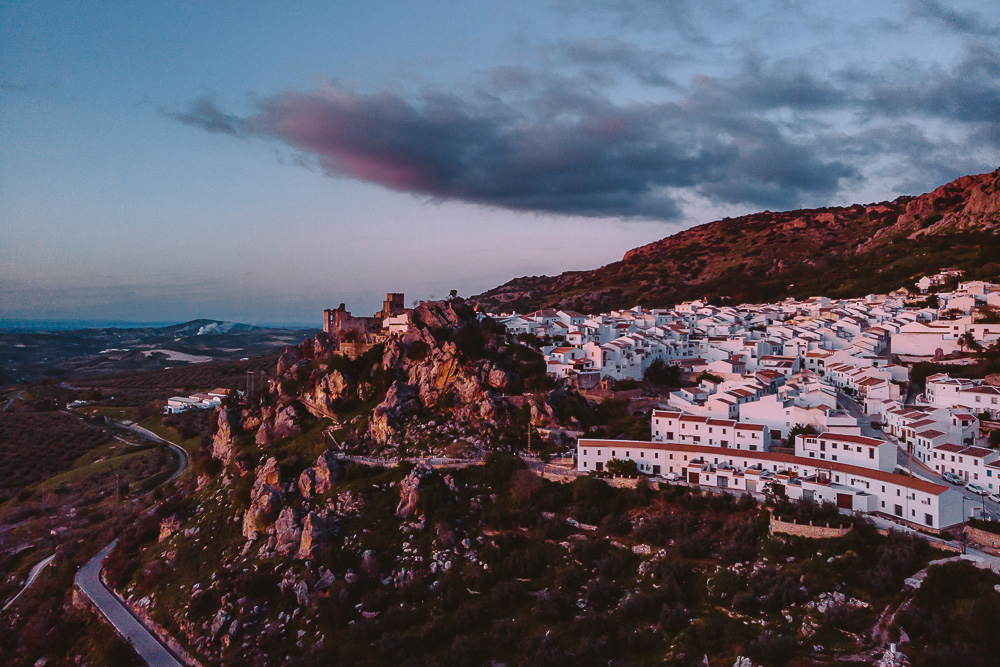
Day 1: Málaga
When exploring Andalusia, you’re most likely going to land in Málaga or Sevilla, two of the biggest airports in the region. I recommend landing in Málaga so the team of Van Break can send you a taxi to wait for you at the airport and drive you to what’s gonna be your home on wheels for the next week(s)!
Málaga is a dynamic beachside city with a picture-perfect old town on the Costa del Sol. Did you know that it is the birthplace of Picasso?! It’s also home to some of the best restaurants and cafes in Andalusia. When there make sure to visit Alcazaba and the Castillo de Gibralfaro. This will be your first glimpse of the Moorish period in Spain, the Islamic reighn that lasted hundreds of years from the 8th until the 15th century. If time allows you, I recommend you taking a guided tour of the Alcazaba, to start getting familiar with this long and fascinating chapter of Spain history. Alternatively, you can take a 3-hour guided walking tour around Málaga that will take you through the Cathedral, the Alcazaba, the Roman Theater and Picasso’s streets.
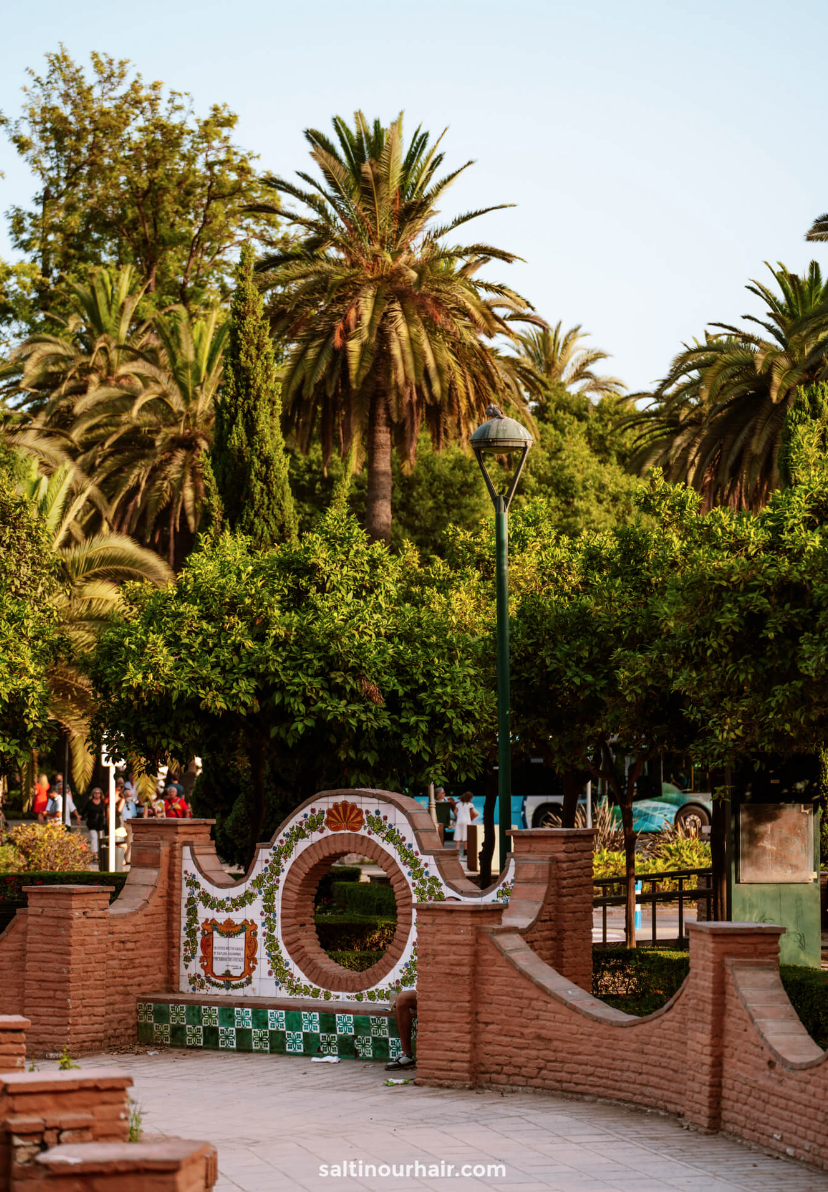
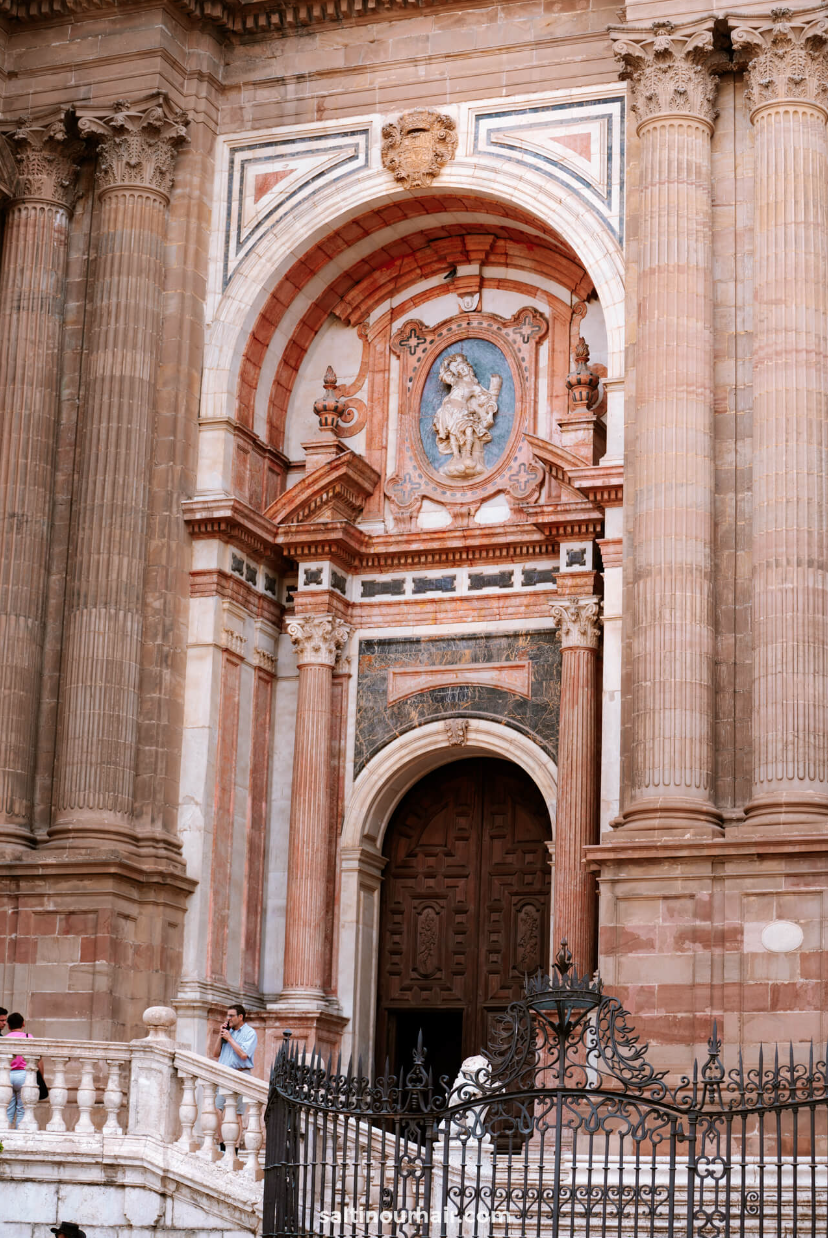

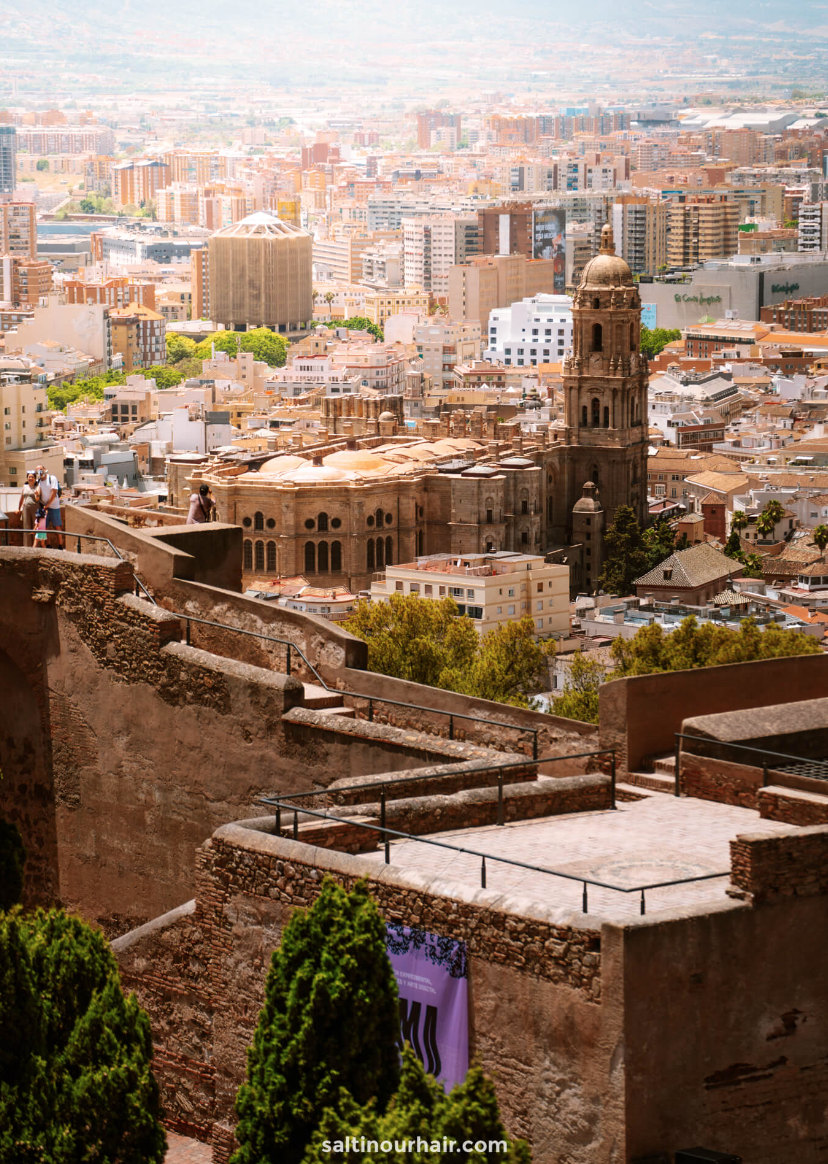
Some of the must-try restaurants recommended by local friends are:
- Uvedoble
- La Deriva
- Antigua Casa de Guardia: best place to try the traditional Spanish drink called Vermut
- El Pimpi: a very typical Andalusian bar for a drink before lunch or dinner
- La Tranca: a very local bar with an amazing atmosphere, perfect bar for after dinner
From Málaga, you can start your Andalusia road trip and make your way to Granada through the coast (2h drive). You can stop near Nerja to spend the night. Nerja sits on a clifftop overlooking the sea and offers fantastic views of the coves and coastline below.
💤 I recommend to check on Park4Night as there are plenty of carparks and freecamps along the coast. Keep in mind that it’s overall quite hard to find a spot close to the sea. As regulations change all the time, you should check them in real time.
Day 2 & 3: Granada
Granada is an incredible city in Spain and definitely a must-do in Andalusia. The ancient city is surrounded by the snow-topped mountains of the Sierra Nevada with a beautiful river trickling down into the town. From wherever you are, you will see the majestic Alhambra Palace, sitting on top of the cliffside and shadowed by the mountains. I’ve curated for you the Ultimate Weekend Itinerary in Granada so you can plan your best time in this wonderful city!
The Alhambra, this colossal fortress, was once the home of the ruler of the Nasrid dynasty, during the Moorish period. Every detail is spectacular and you will need half a day alone just to walk among its opulent buildings and gardens. I highly recommend you to book your ticket way in advance (at least a month) and make sure it includes the Nasrid Palace. You can also book a night visit of the Nasrid Palace which is even more magical than during the day with less people (as there’s only one entry a day with limited spots, from 10:20pm to 11:30pm).

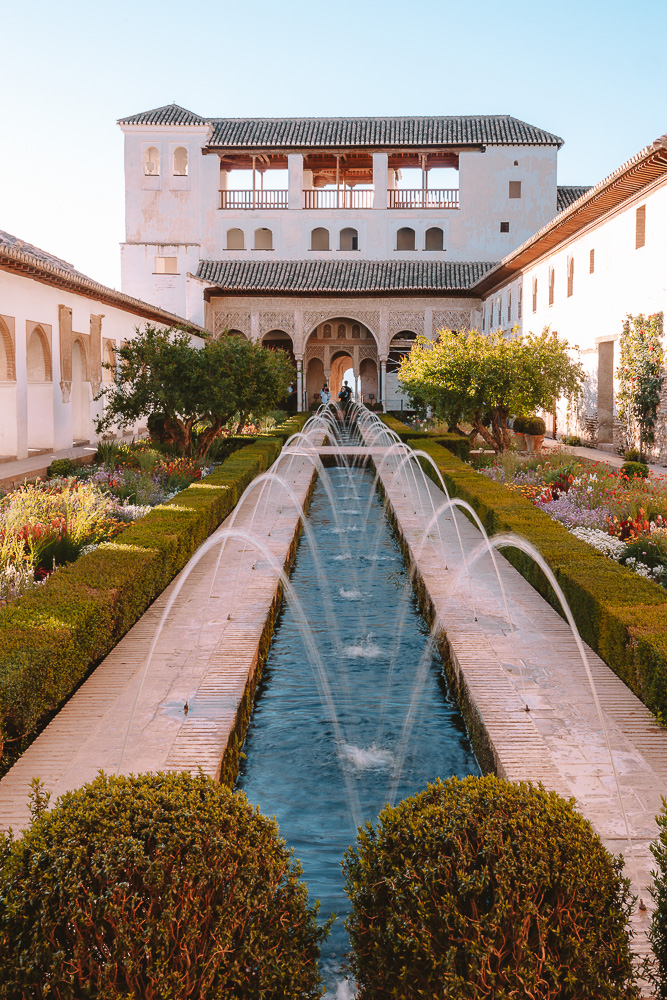
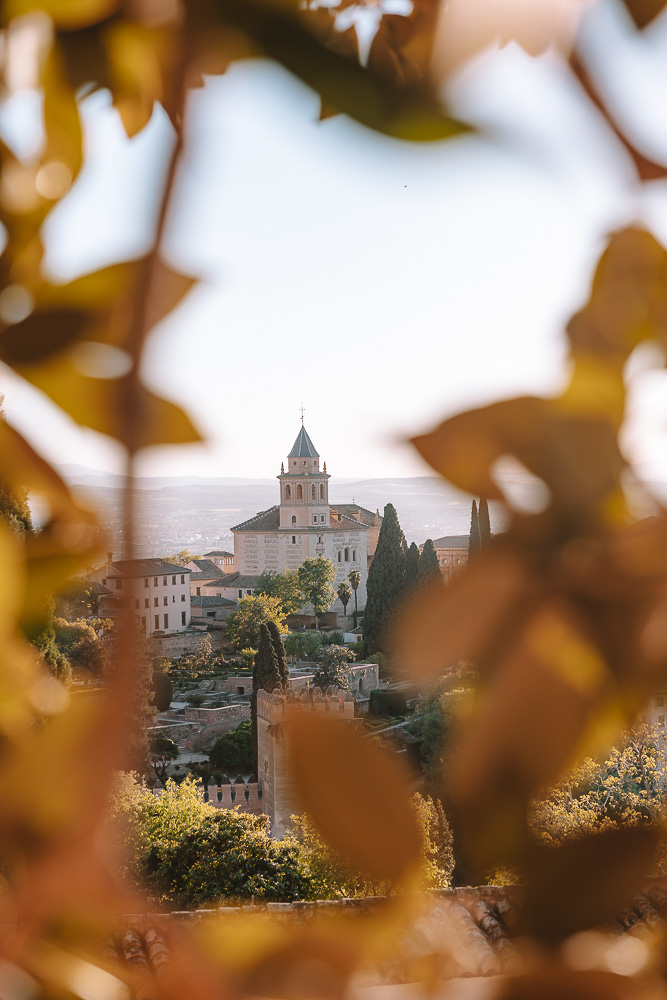
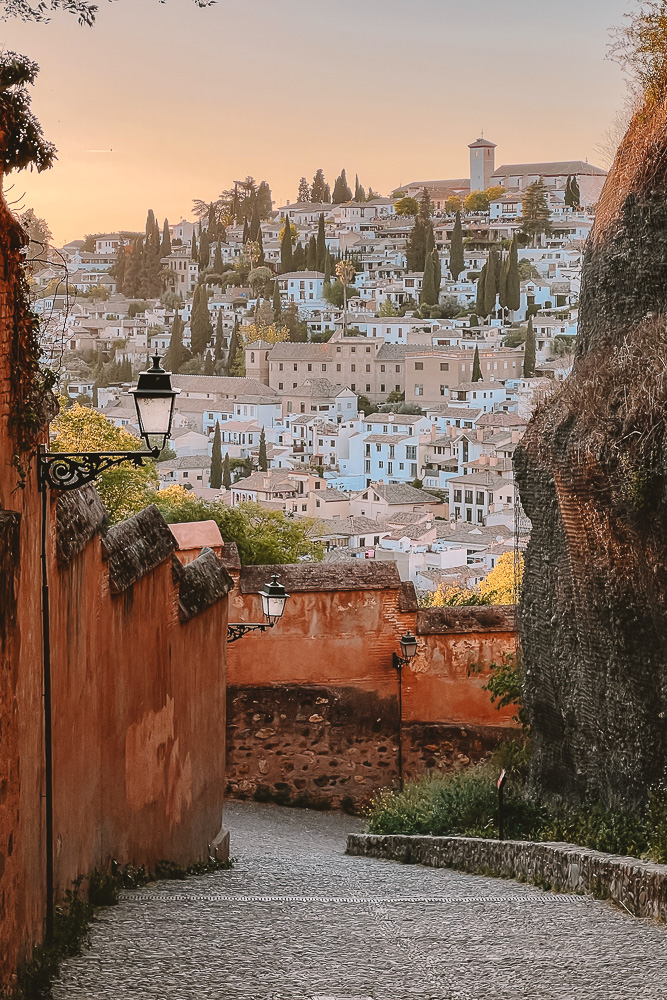
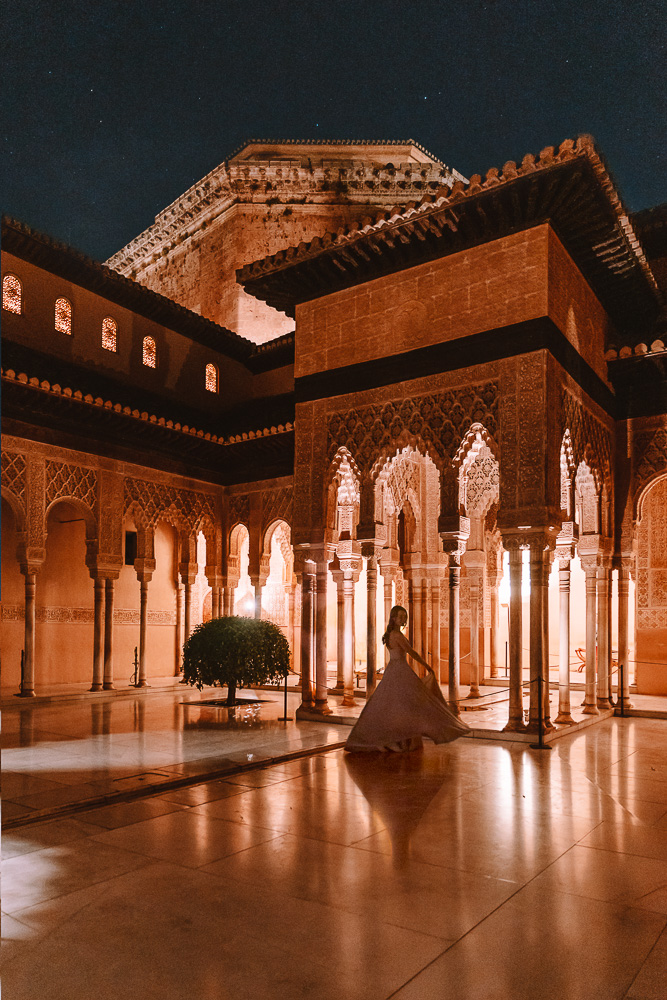
💤 Keep in mind that driving in the old town is difficult and parking there became quite expensive. I’ve parked on this spot close to the Alhambra (only a few spots). From there, you can either take a taxi to the old town or walk through the gardens. The traditional neighborhoods of Albaicín and Sacromonte will be on the opposite side of the Alhambra from you so it’s best to taxi down there.
Day 4: Iznájar & Zuheros
Iznájar
Iznájar is one of the most picturesque villages of Spain and a must see among all the Pueblos Blancos. The Pueblos Blancos are a series of 19 picturesque whitewashed towns in Andalusia. They were mainly built as “frontier villages” so most of them sitting on top of hills. They date back to the secular struggle between Moors and Christians, which explains the profusion of castles and the Muslim influence.
Iznájar sits high up on a hilltop overlooking an open valley and reservoir below. The most stunning place is called Patio de las Comedias, decorated with hundreds of blue flowerpots and bright geraniums. This tiny village is really quiet and is only 1h drive from Granada, making for the ideal half-day trip.
We stayed in this spot and had lunch with a beautiful view over the church (you can also stay for the night here).


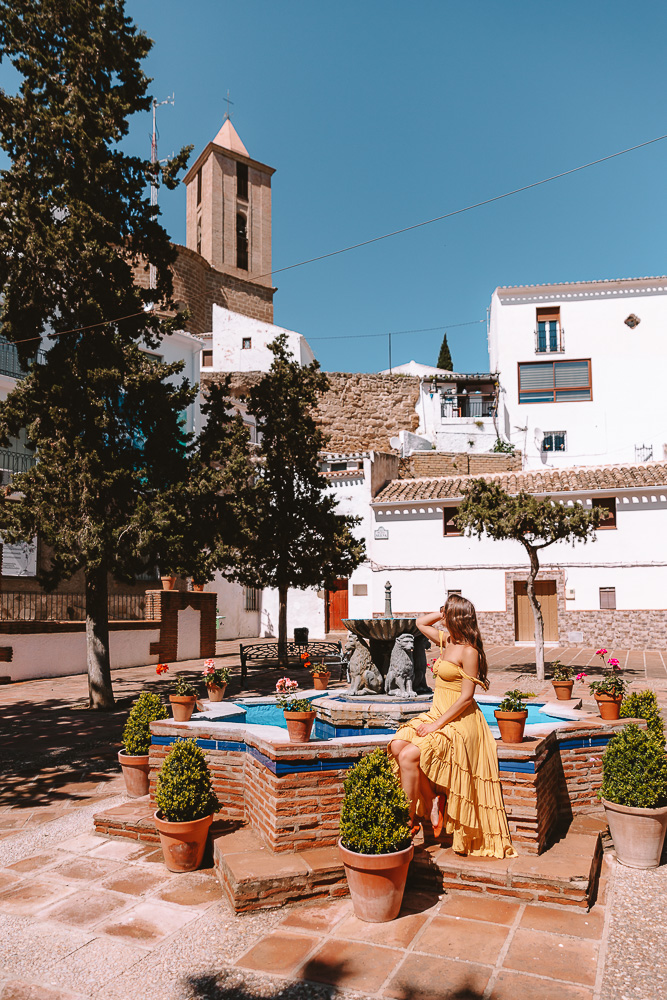
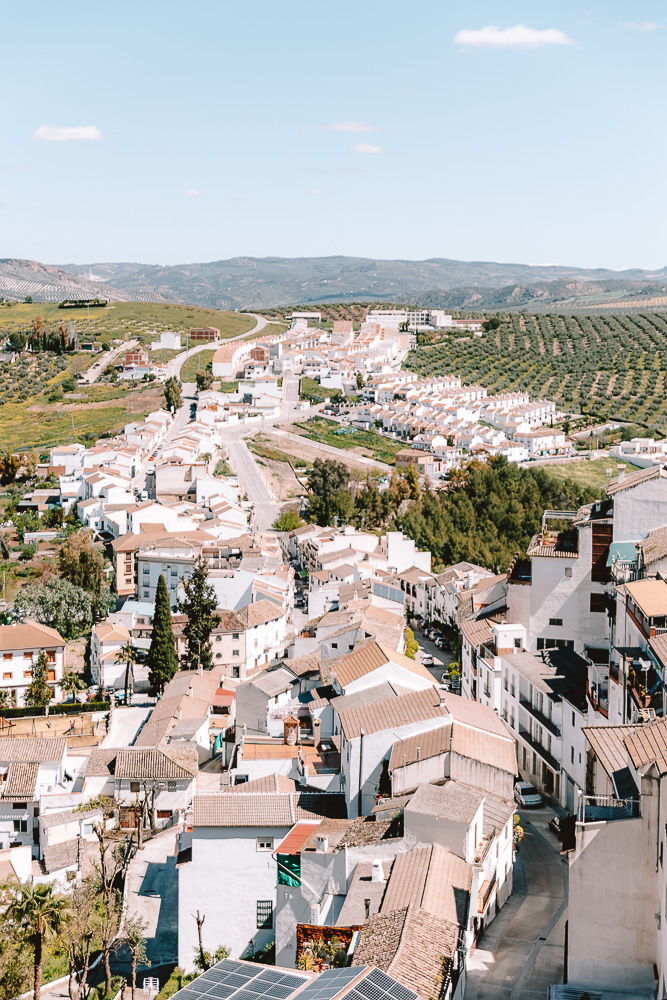
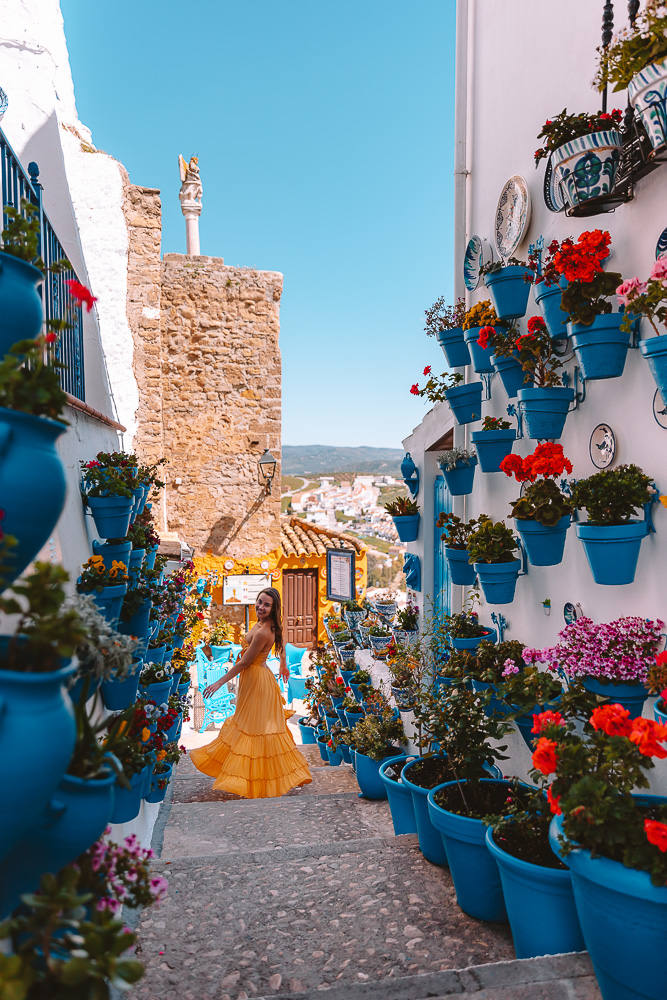
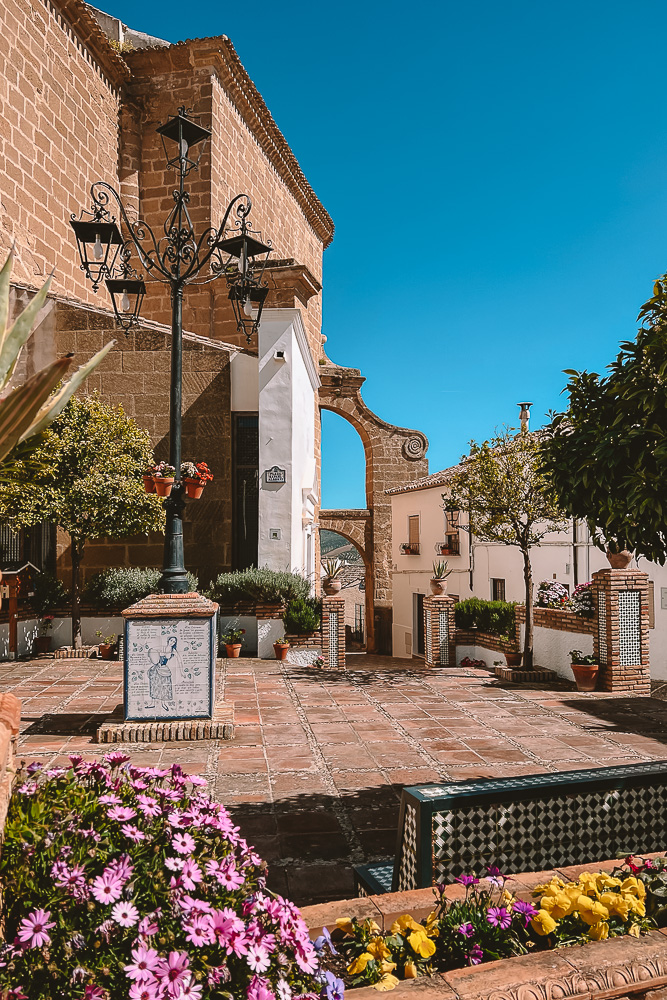
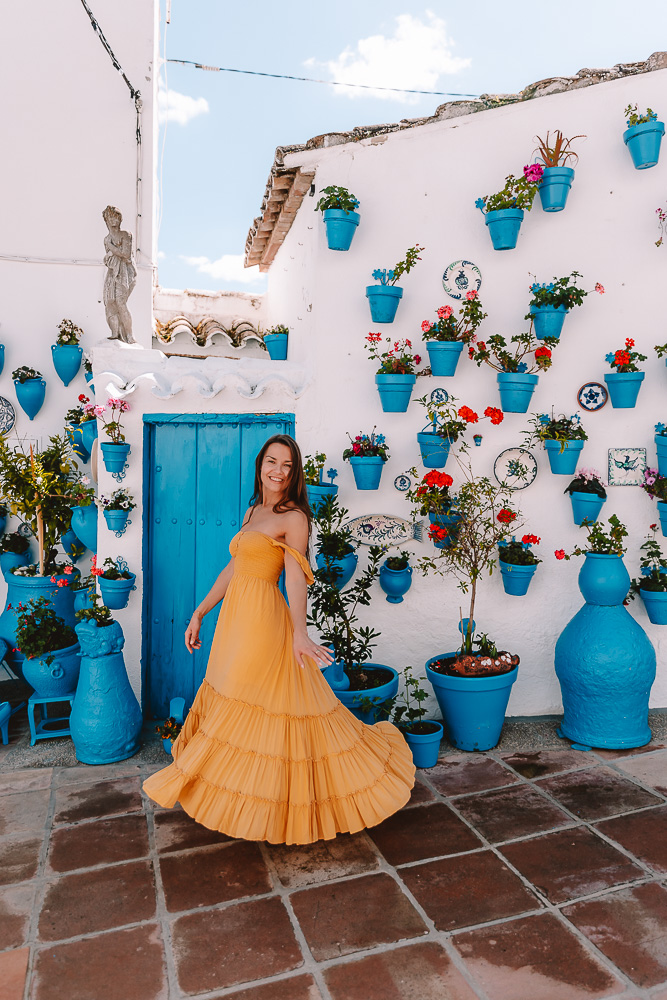
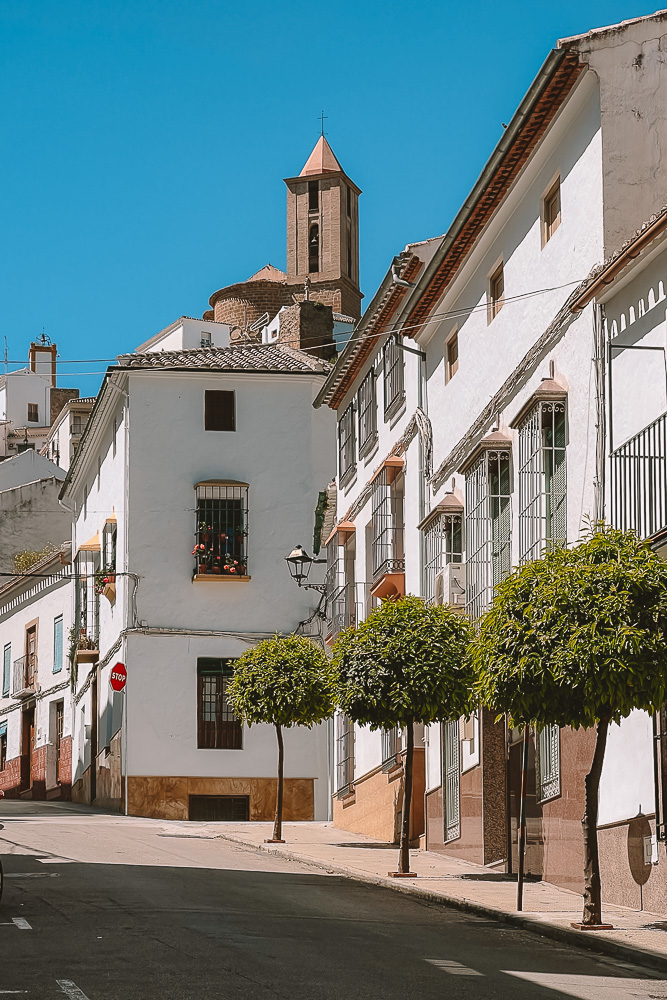
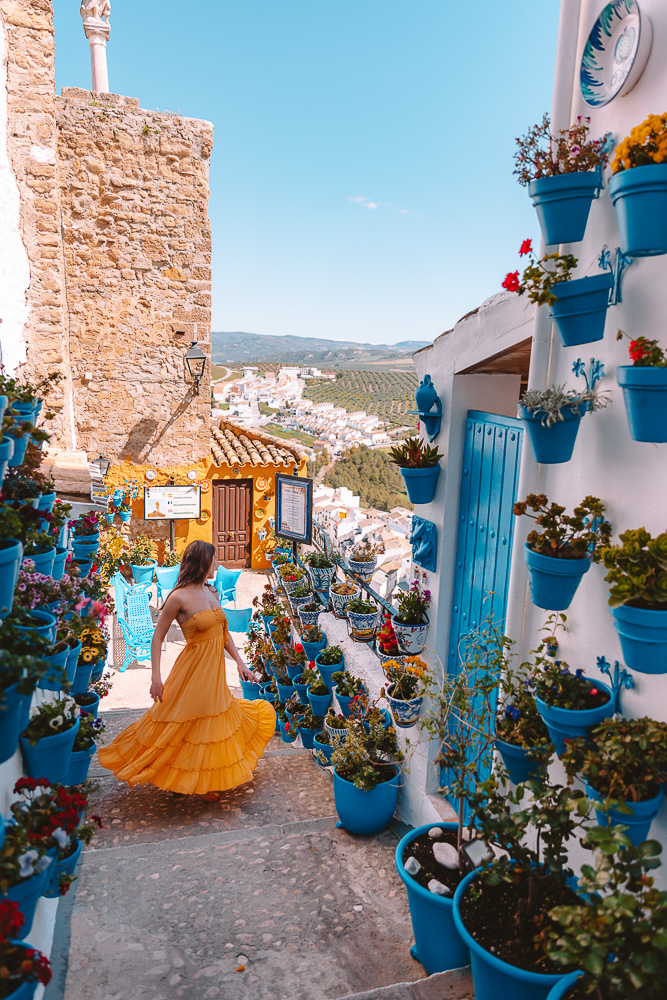
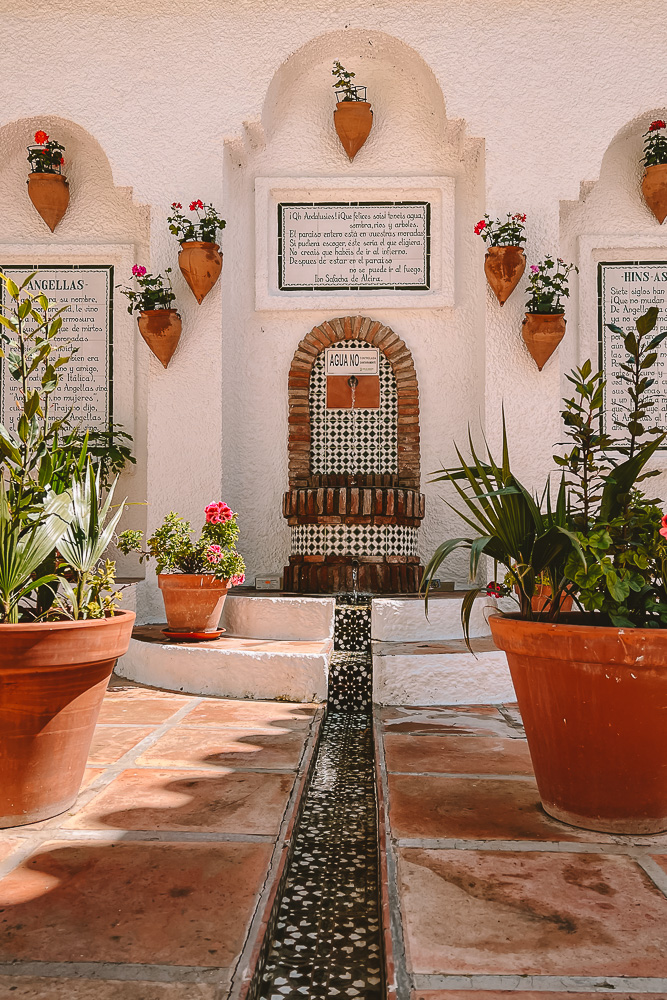
Zuheros
Just an hour away from Iznájar and on your way to Córdoba is Zuheros. Zuheros has been voted one of the 10 most beautiful villages of Spain by National Geographic! Sitting 662m above a sea of olive trees, it is a very authentic and traditional Pueblo Blanco, far from the touristic ones.
Start by wandering in the village up to the fortress, the highest point in the village. A walk down along the river will give you great views and perspective. You can walking up to the opposite hill to get some unparalleled views, the perfect place to watch the sunset. It’s truly one of the most beautiful villages I’ve ever seen in Spain!
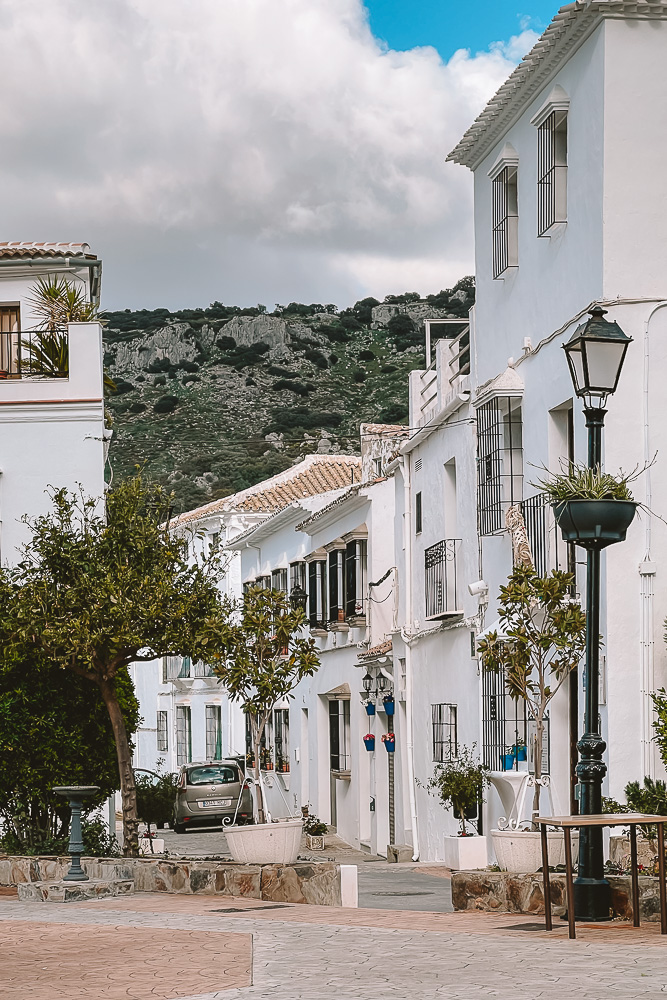
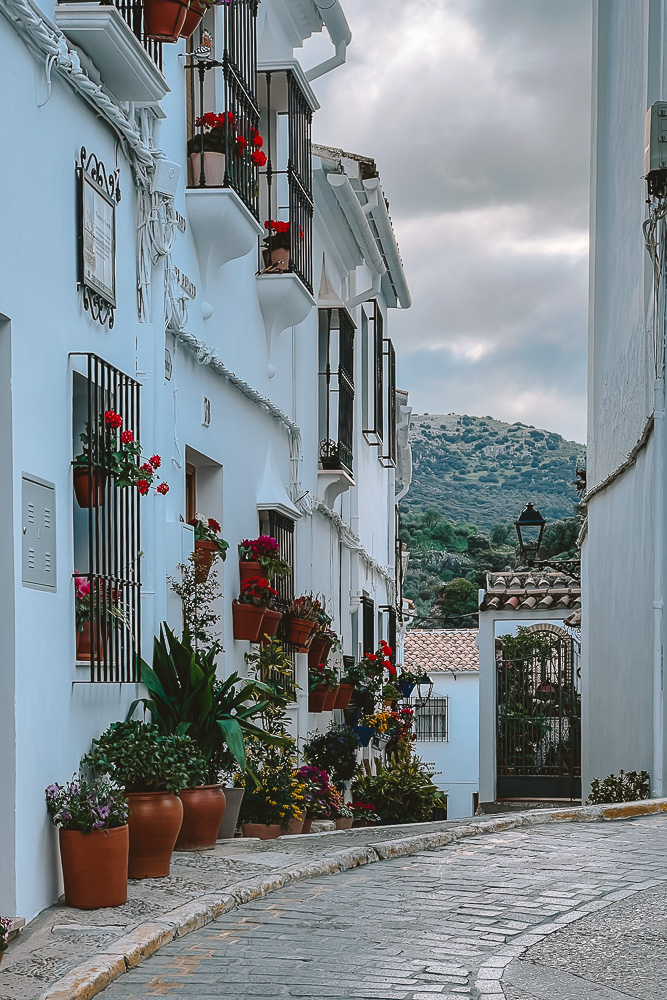
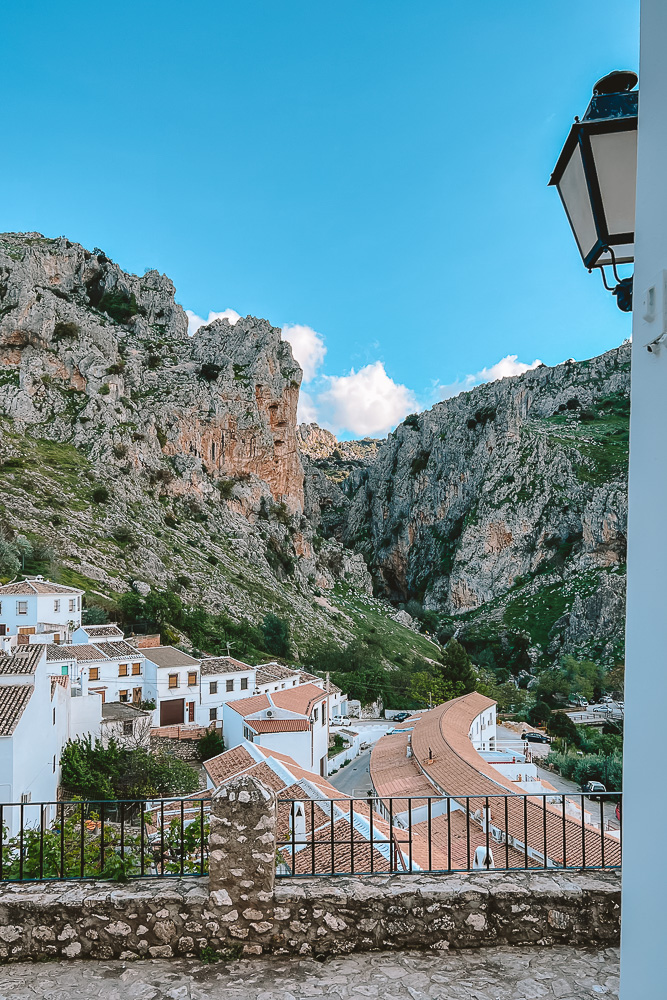





💤 We spent a very quiet night on this parking spot with two other campervans and a view on the waterfall from the back.
Day 5 & 6: Córdoba
Córdoba, the city of flowers! This city might be smaller than Granada or Sevilla but did you know that it used to be the regional capital during the al-Ándalus kingdom? It is also the only city in the world with 4 UNESCO-registered sites!
One day can be enough to wander the beautiful streets and admire the many patios (courtyards) filled with vibrant flowers and blue ceramic pots. However, I would recommend two days just so you can soak it all in and truly enjoy what used to be the capital of Andalusia. By staying two days, you can visit the famous Mezquita-Cathedral twice! I recommend to first take a guided tour of the Mezquita-Catedral de Córdoba (which we did!). It is a must to understand the complex history of this mesmerizing and breathtaking masterpiece. Then the next morning, enjoy a free visit with less crowd to really appreciate it (Monday-Saturday, 8:30am-9:20am).
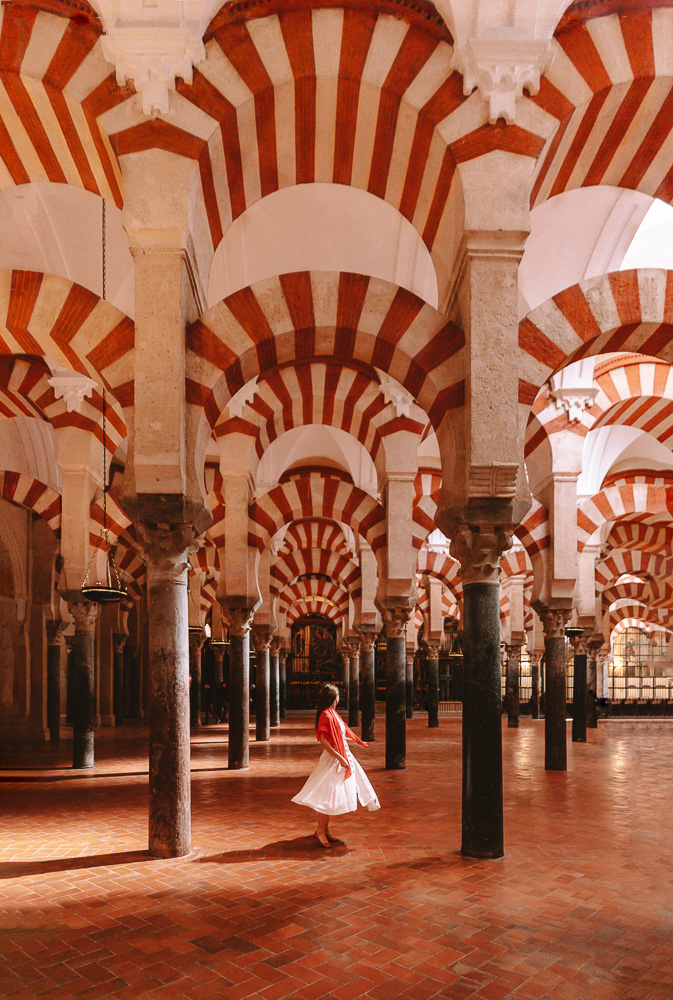
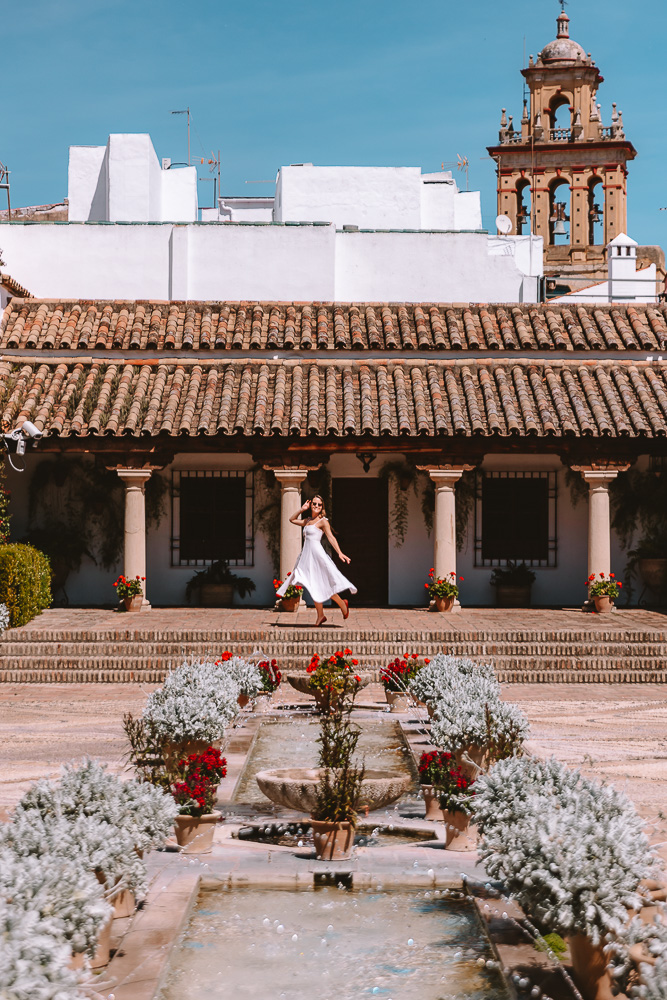

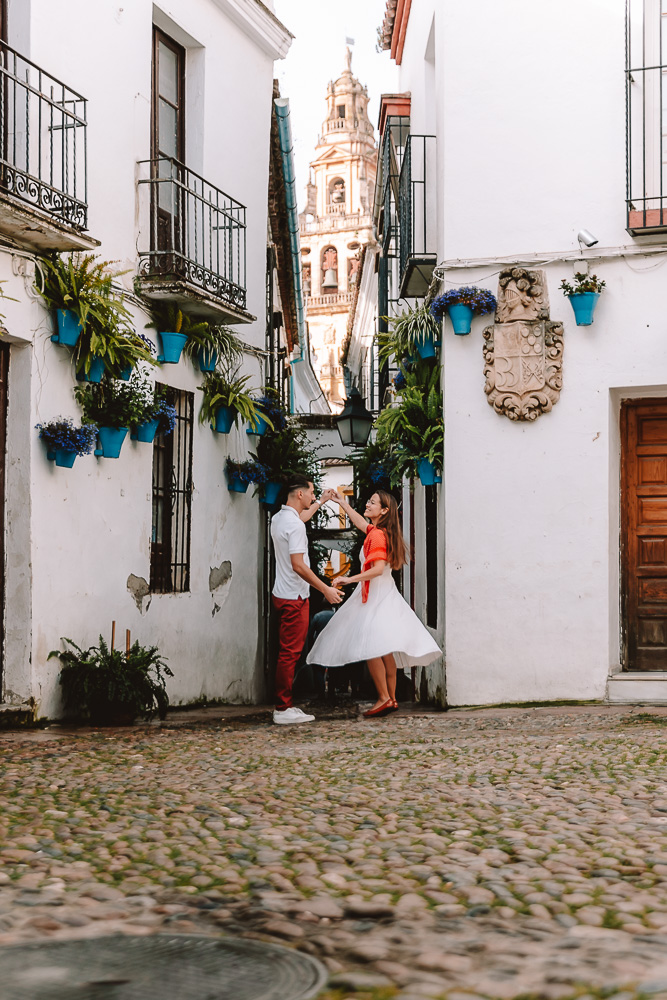
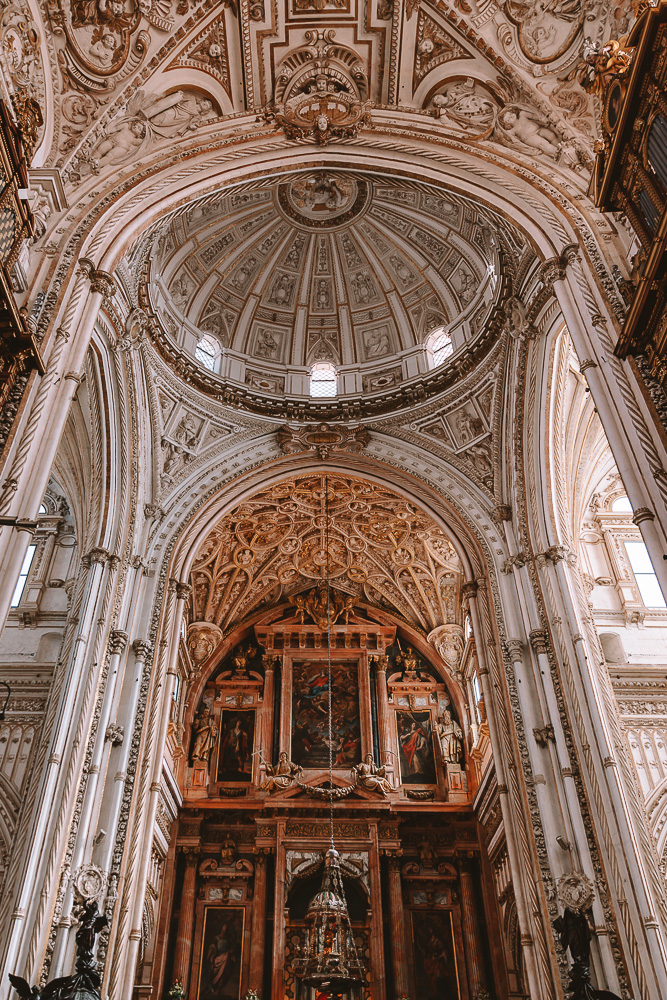
💤 I recommend spending your first night on 1 Plaza Tejar (5€ with gorillas, local guards) right outside the old town. For the second night, escape the city to find some more air and services in Écija (clean water refill, grey & black waters dump, no electricy).
Day 7: Ronda
Ronda might just be the most scenic town of all Spain. It is famous throughout the country for its iconic bridge Puente Nuevo hanging over the 100-meter-deep El Tajo gorge. The town itself is a picturesque maze of whitewashed buildings sitting high up on a rock plateau and carved down the middle by the dramatic El Tajo gorge. It almost looks like it is balancing precariously on top of the canyon. The Puente Nuevo and the town provide some of the most incredible views over the mesmerizing Andalusian landscapes.
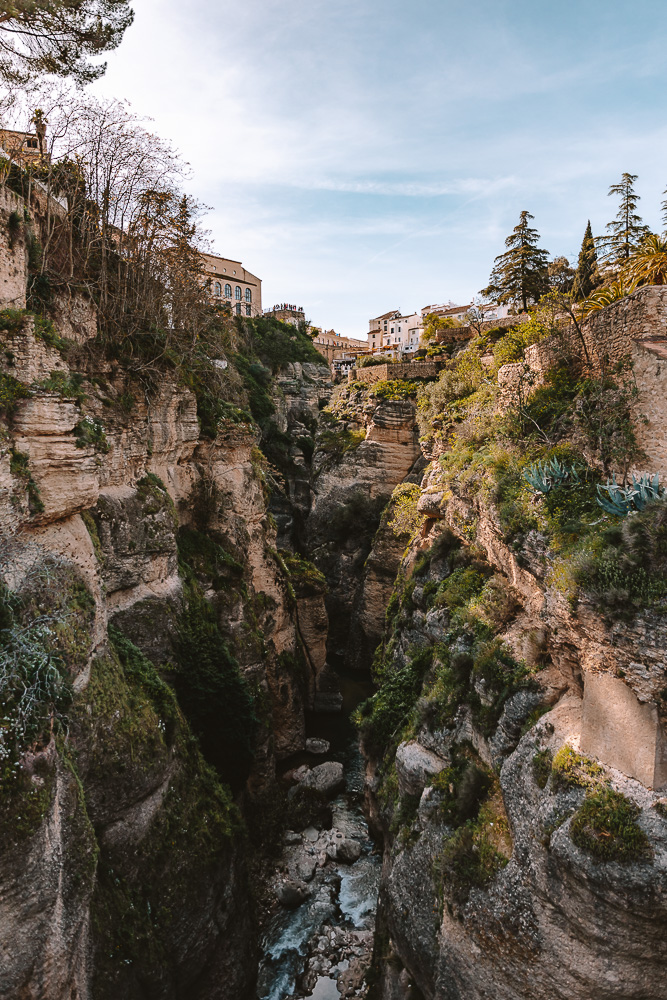

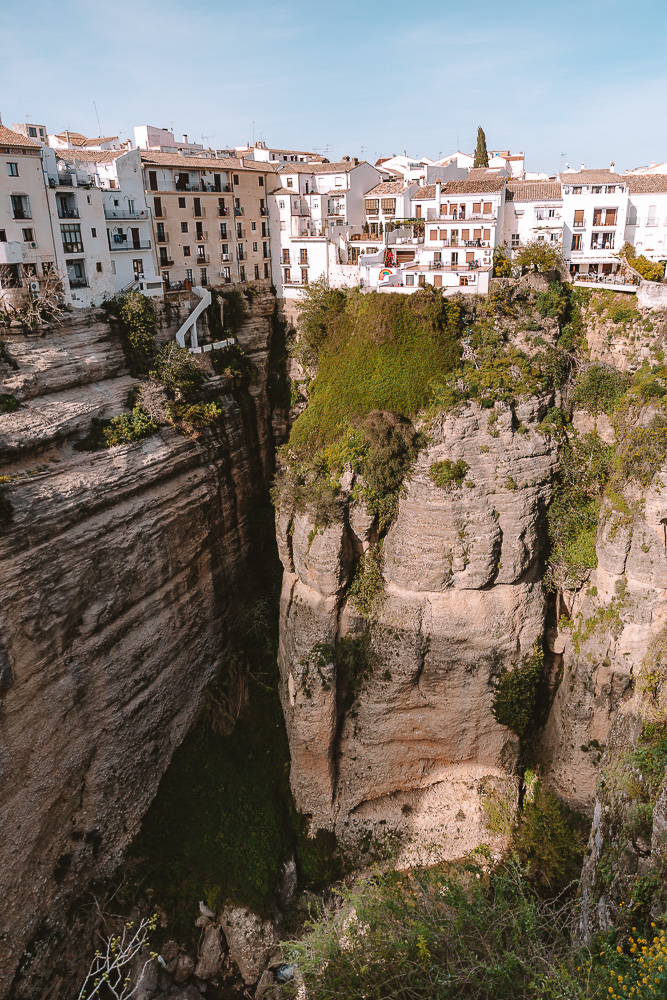
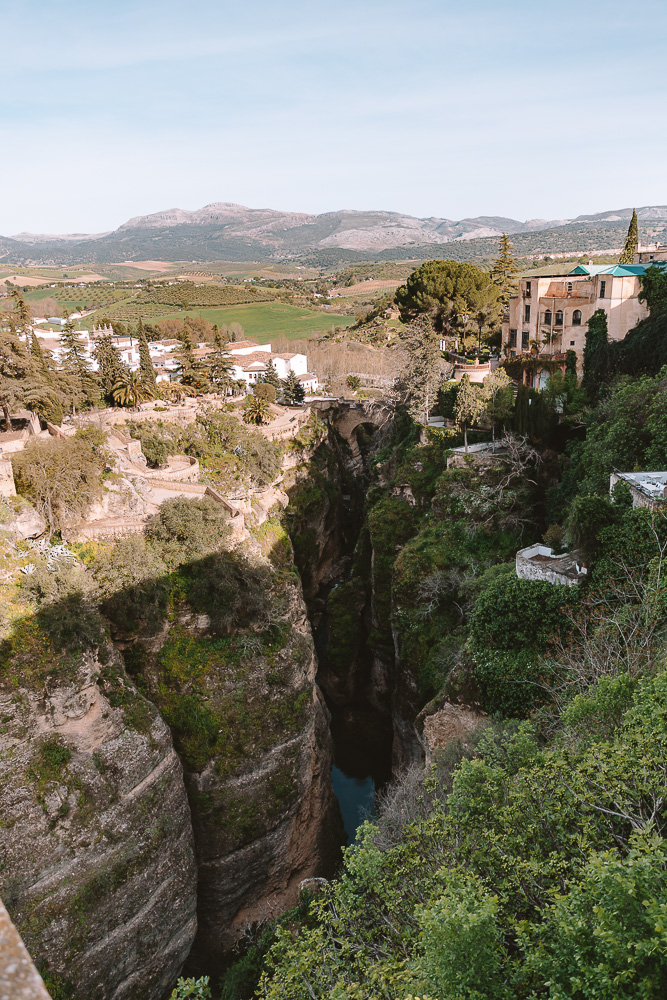
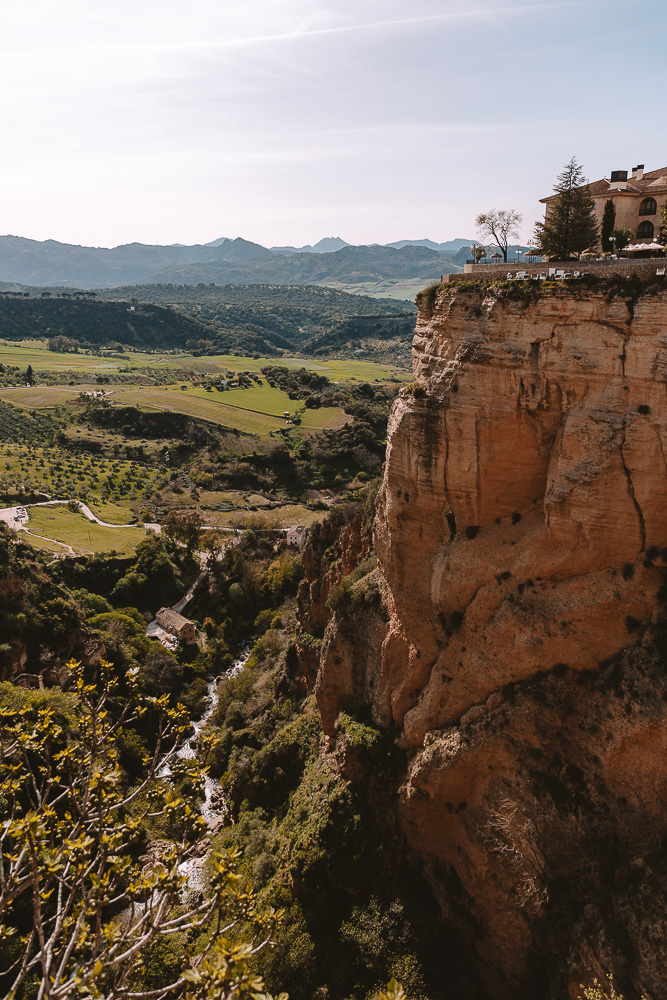
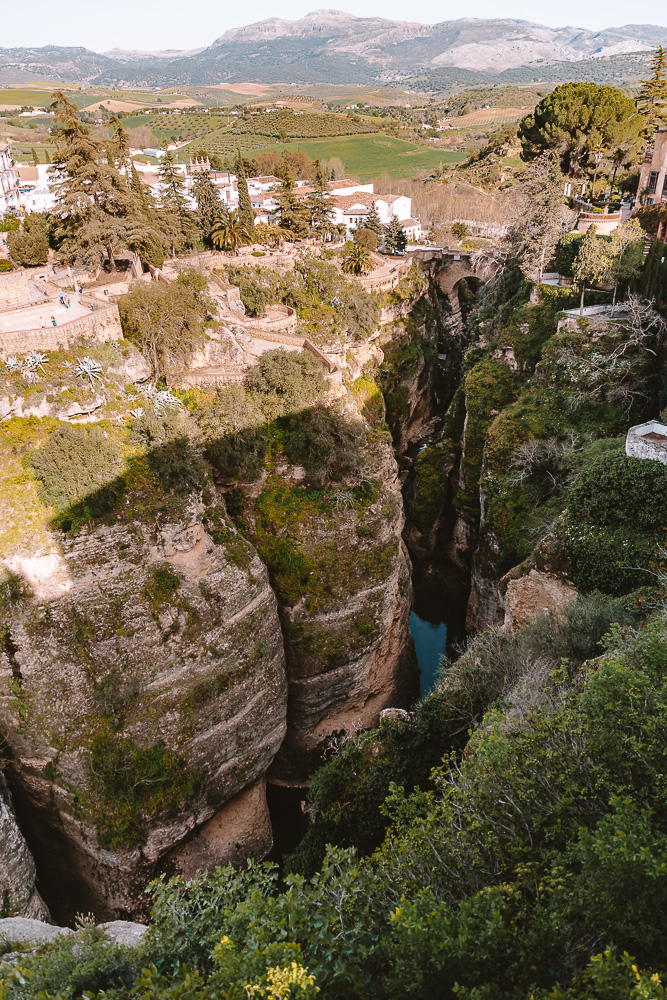
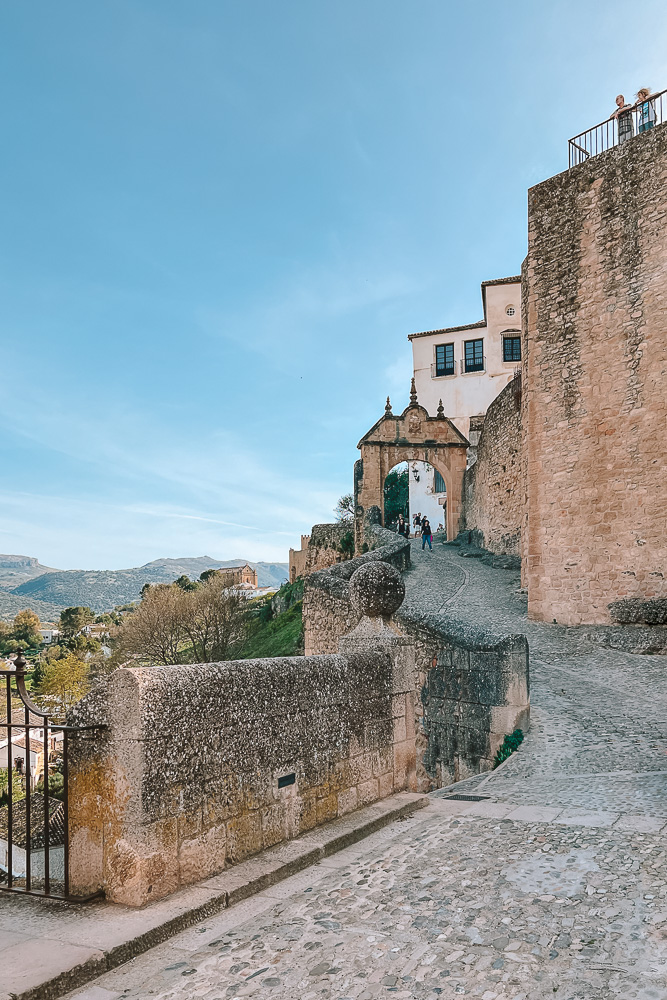
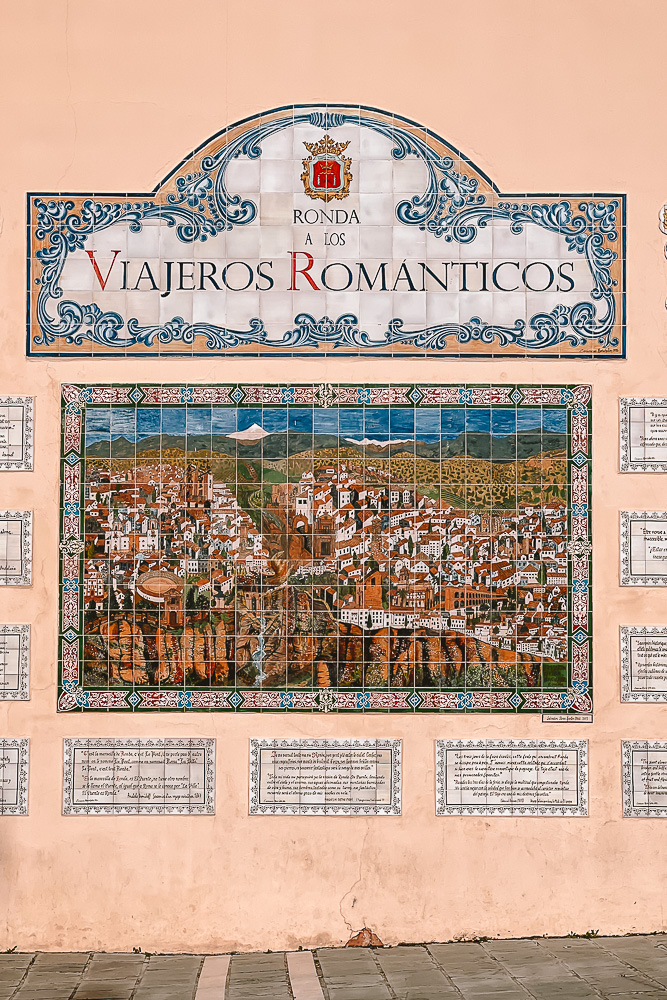
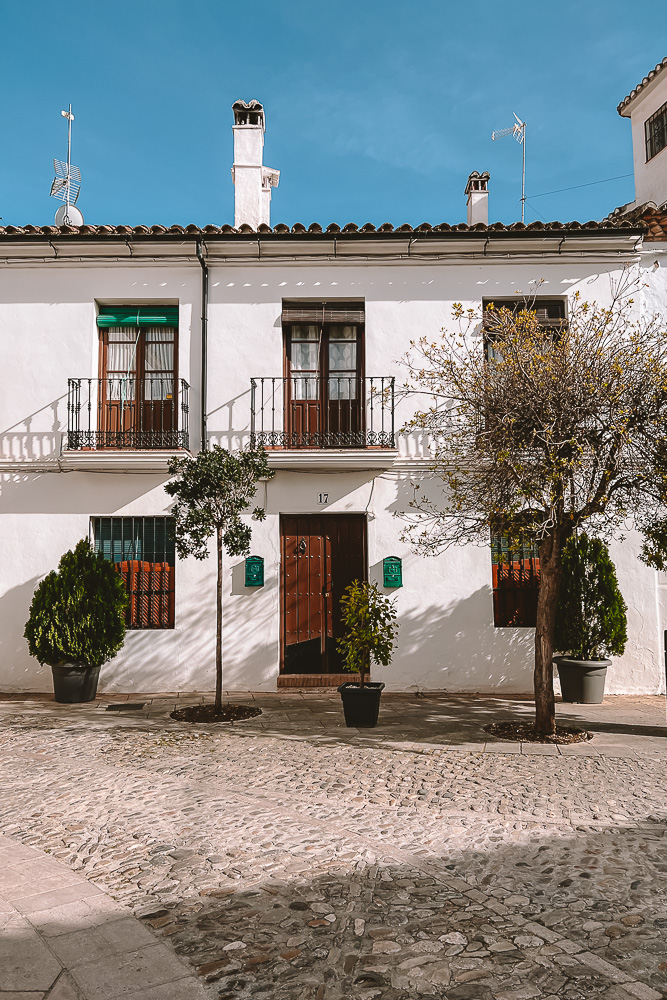
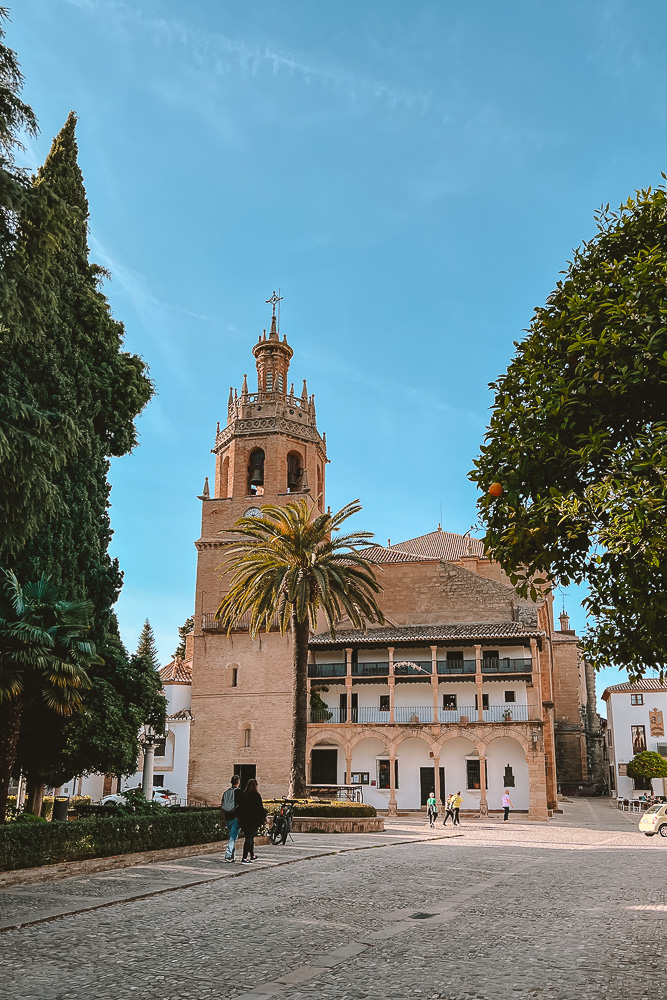
You’ll get the best views over the bridge from the Arabic Arch viewpoint. At the time of my visit, in April 2024, it was only accessible by walking down the street Carretera de los Molinos to the Mirador la Hoya del Tajo. You can also drive there but it is steep and slippery. I would recommend only for cars or small and sturdy campervans, not for motor homes. From the mirador, walk up a steep sandy path to the Arabic Arch viewpoint. You can also hike closer to the waterfall and bridge, although right now the path is quite narrow and requires a certain fitness level.

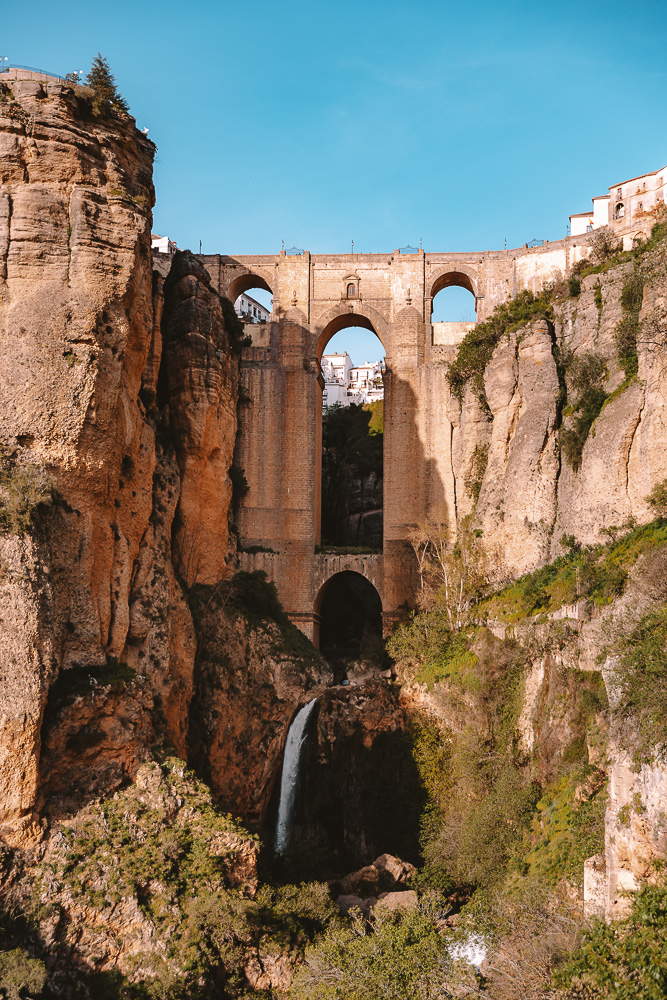

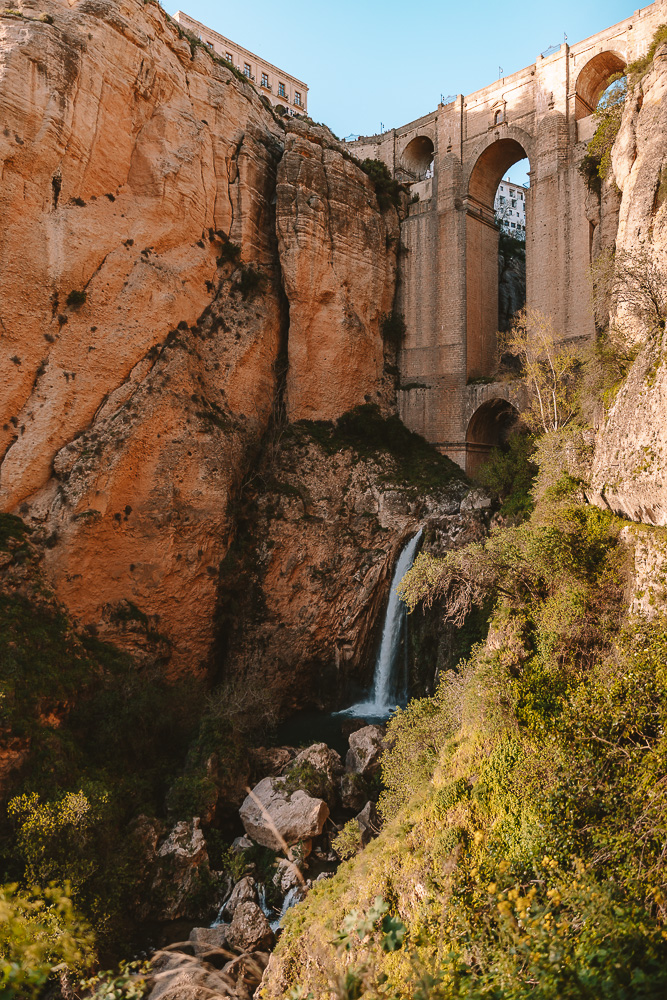
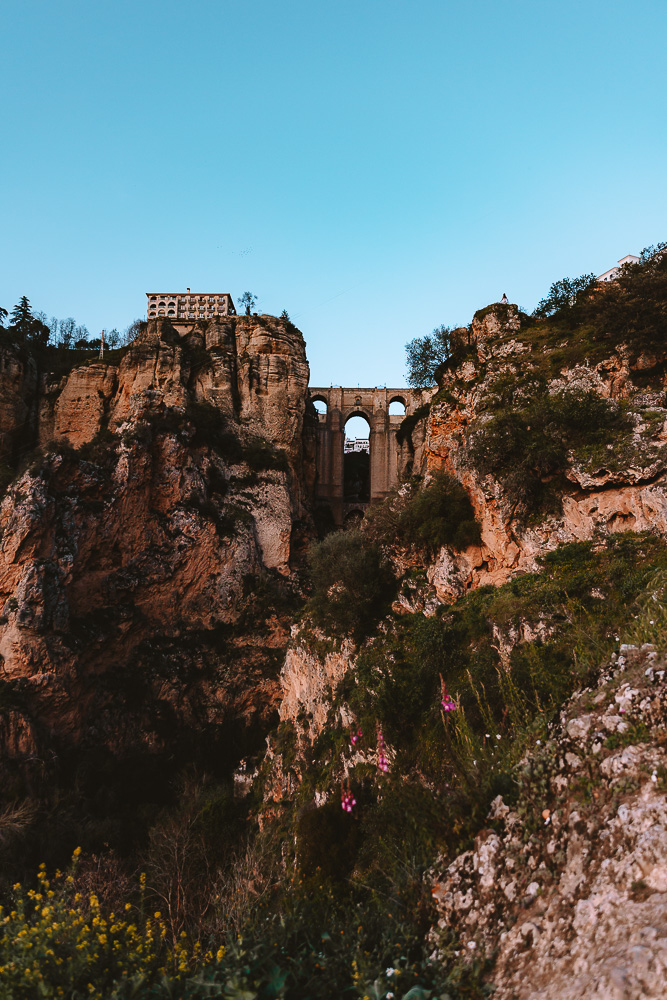
💤 We stayed a little up this street where it was flat and slept like babies. If you’re lucky you can even get a spot with a view over the town!
Day 8: Setenil de las Bodegas, Olvera & Zahara de la Sierra
Setenil de las Bodegas
Setenil de las Bodegas is one of the most uniques of all the Pueblos Blancos of Andalusia. This beautiful town is built as troglodytes caves, with houses looking like they’re growing out of the stone itself. Bodegas means “wineries” and it got its name from a once-thriving wine trade. Although the wineries are fewer these days, you can still try some of their local wines and delicious olive oil.
The main streets are Calle Cuevas del Sol (caves of the sun) and Calle Cuevas de la Sombra (caves of the shade), which are home to many cave restaurants. It’s a very touristic place and it was so busy when we got here (10:30am) that it wasn’t as enjoyable as I wish it was. So come early to enjoy it, definitely before shops and restaurants open at 10am.
You can walk the Calle Cuevas del Sol further uphill into the village to reach the Mirador del Carmen. On the opposite side, continue the Calle Cuevas de la Sombra till you reach the Cueva Alta. It is the deepest cave in the village and also a great spot out of the touristy places to grab a glass of local wine & something to eat! From there it is easy to walk up towards the Calle San Sebastian, where we found an easy parking spot for our campervan.
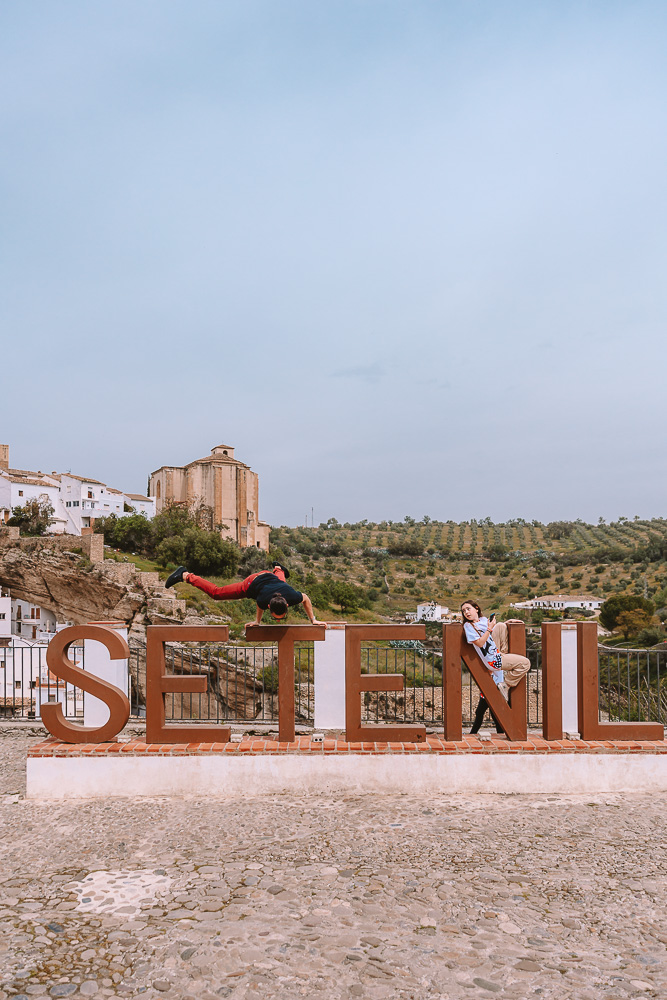
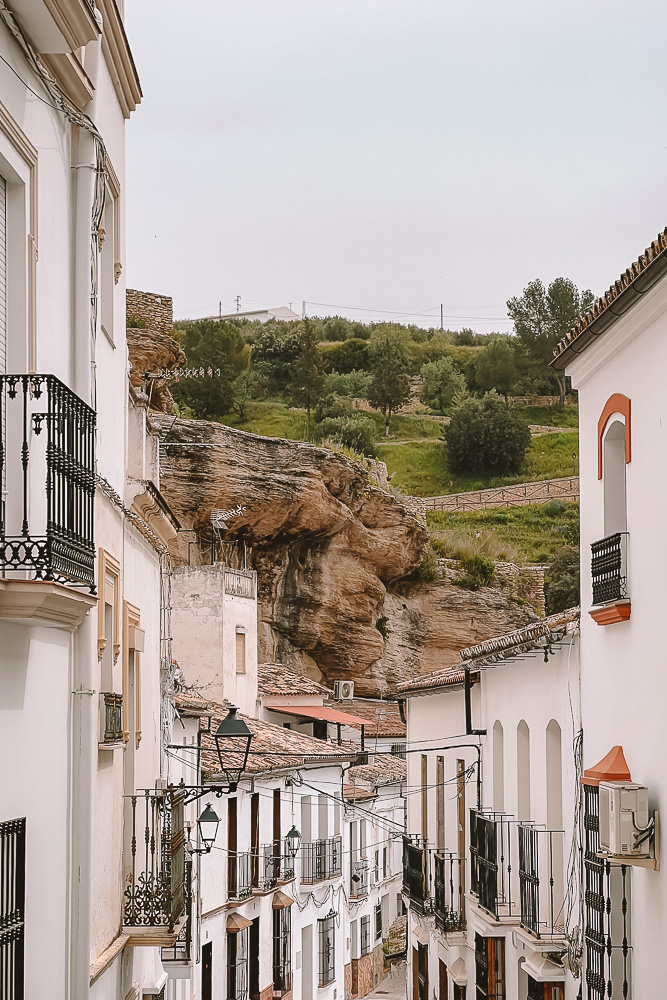
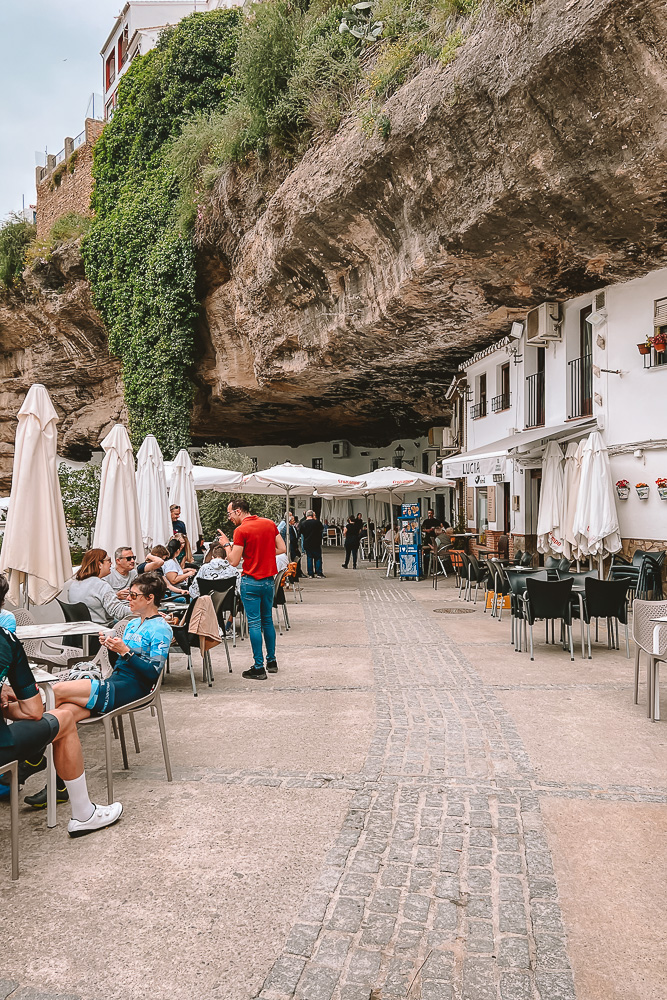
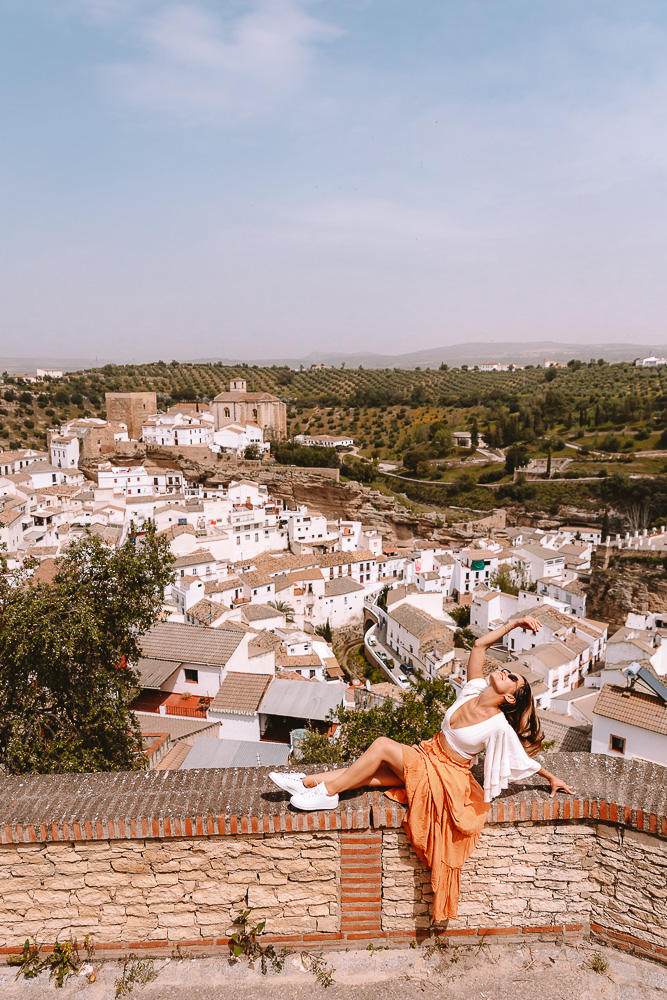


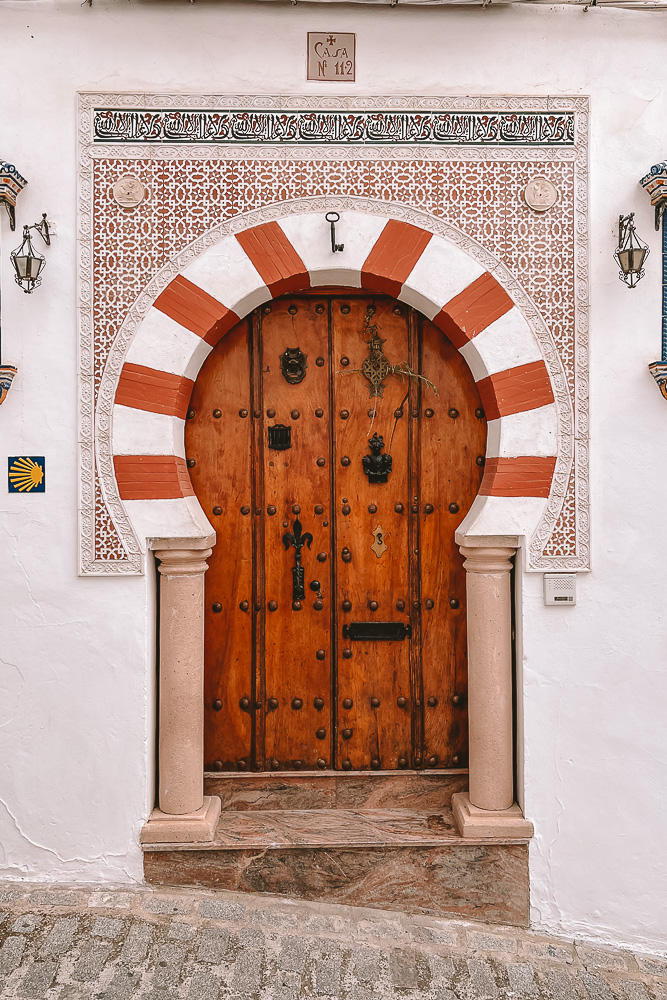
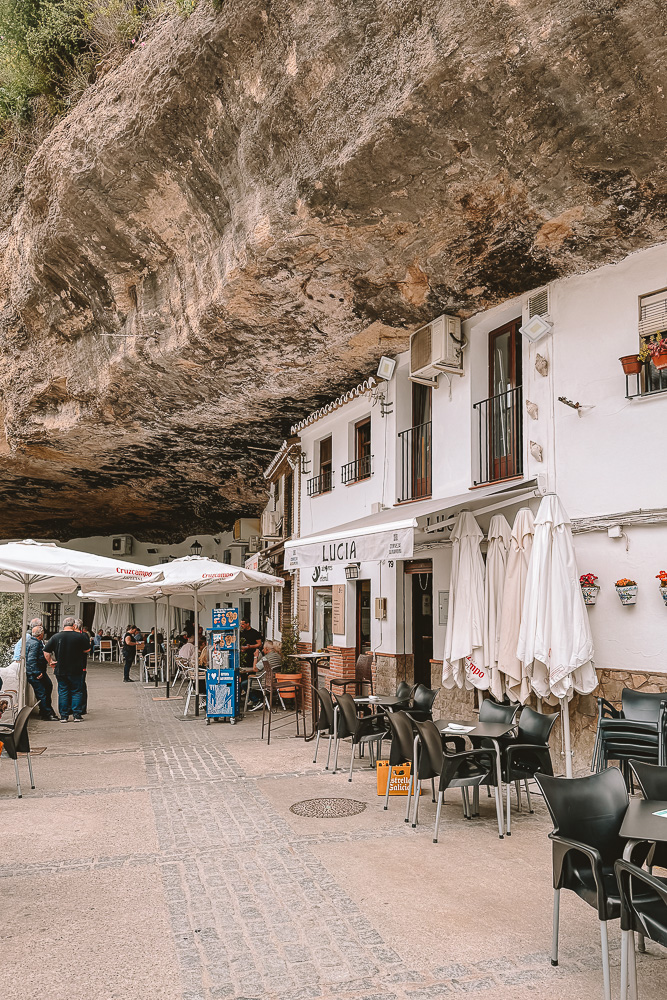
Olvera
From Setenil, take one of the most beautiful drives through sweeping valleys of olive trees and wildflowers to the stunning village of Olvera. This road is one of the best roads ever, so beautiful that it is alone worth the trip.
The main sight of Olvera, its castle, was built at the end of the 12th century. It was part of the defensive system of the Nasrid kingdom of Granada. Rising on a 623m rock, at the highest point of the town, it offers you a stunning 360° view over the Andalusian landscapes.
There is a free easy parking between the Tourism Center and the cemetery. From there you can walk to the Tourism Center and get your tickets for the castle (only 2€).
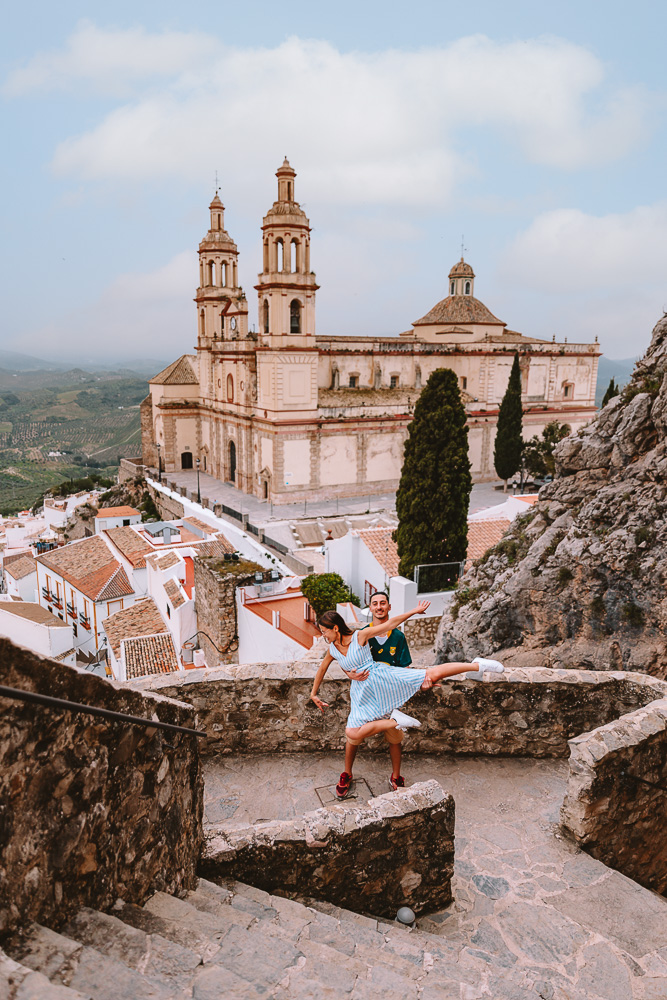
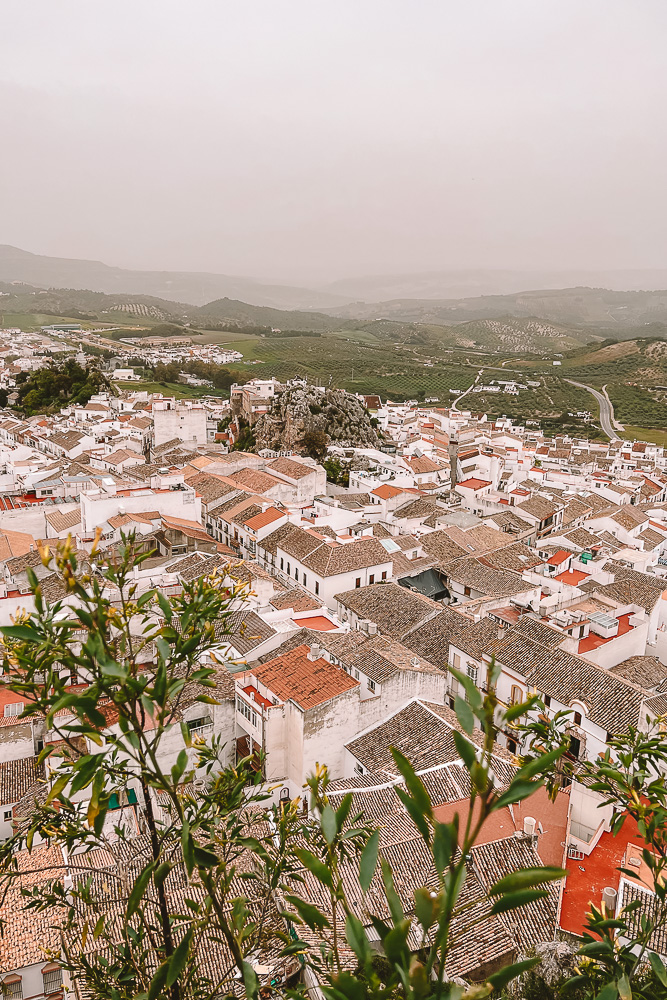
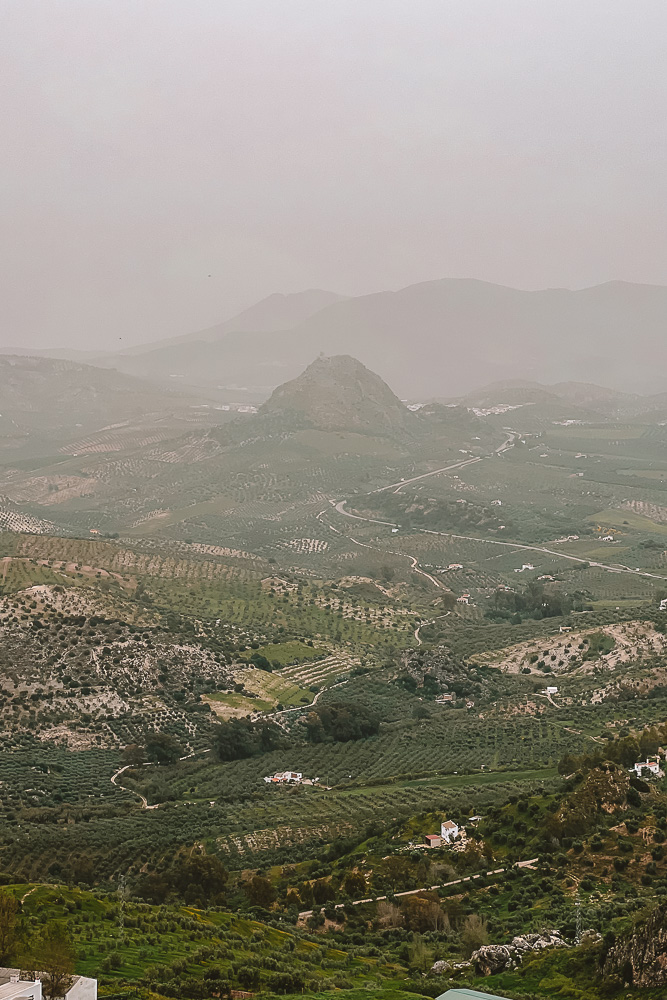
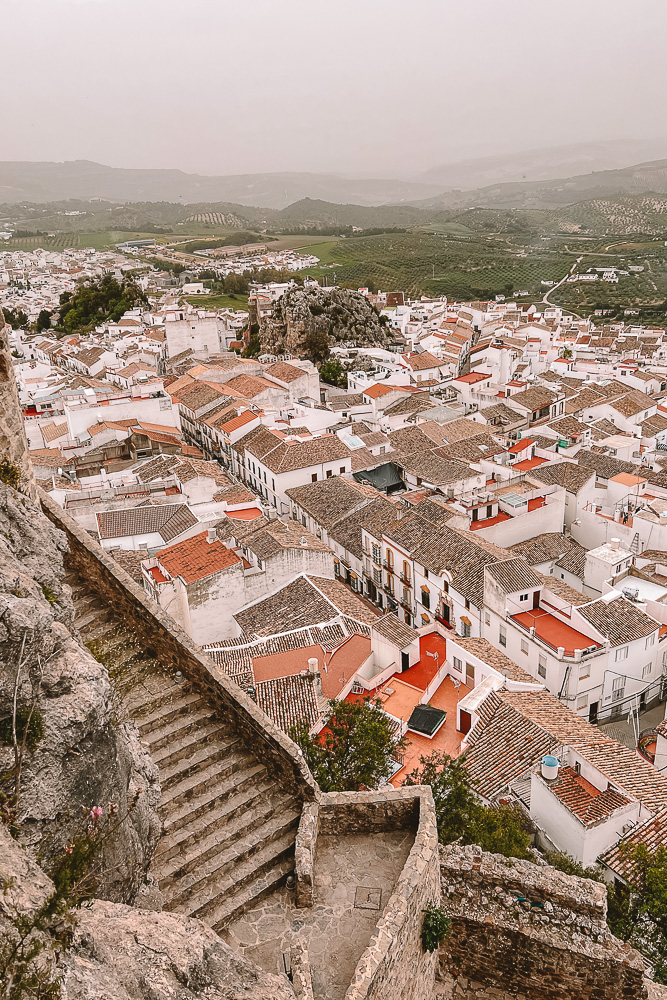
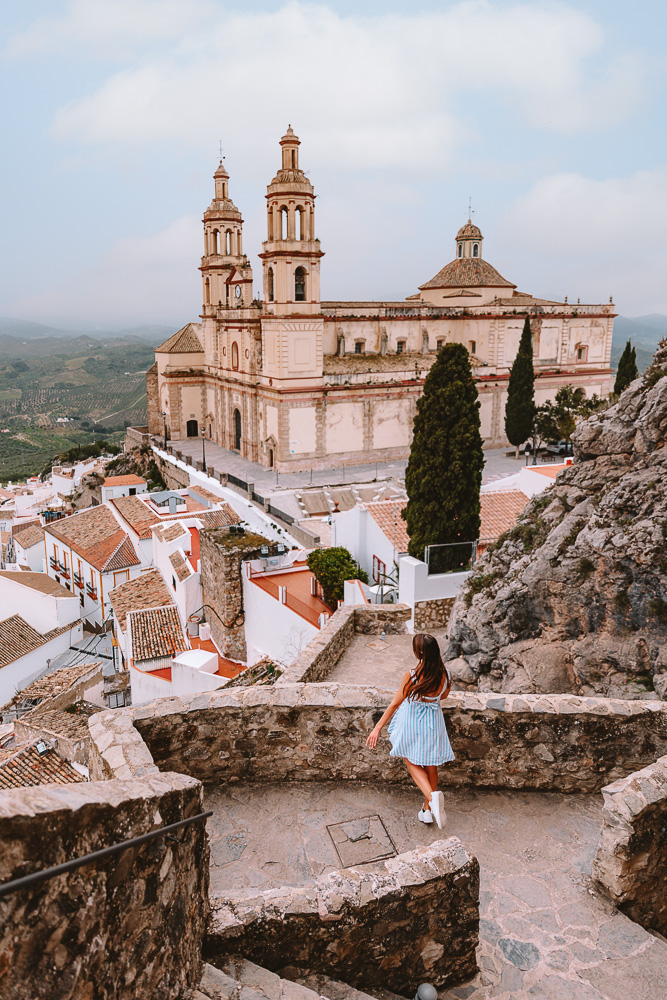
Zahara de la Sierra
If you have some time, drive to Zahara de la Sierra for some more spectacular views in your Andalusia road trip. It used to be one of the most important fortresses in the area, sitting high up on the mountaintop and providing incredible views over the bright blue reservoir lake below.
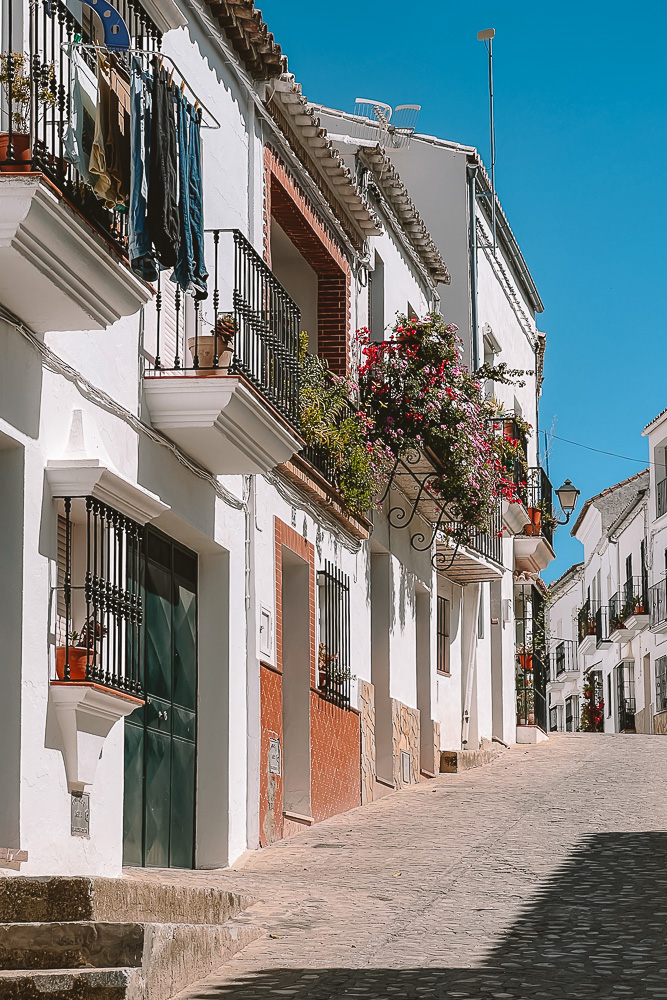
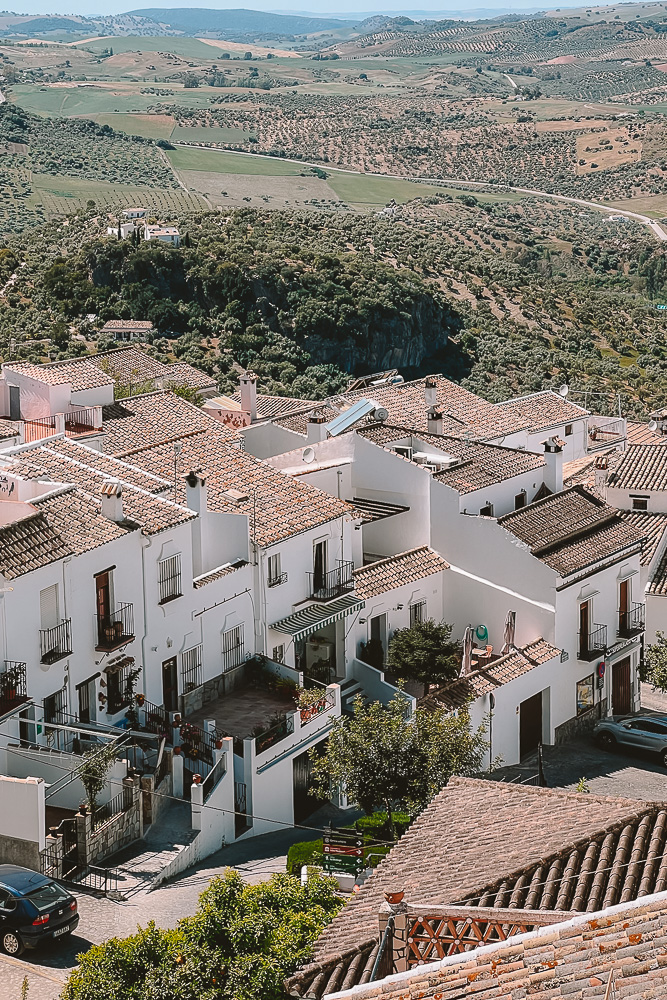
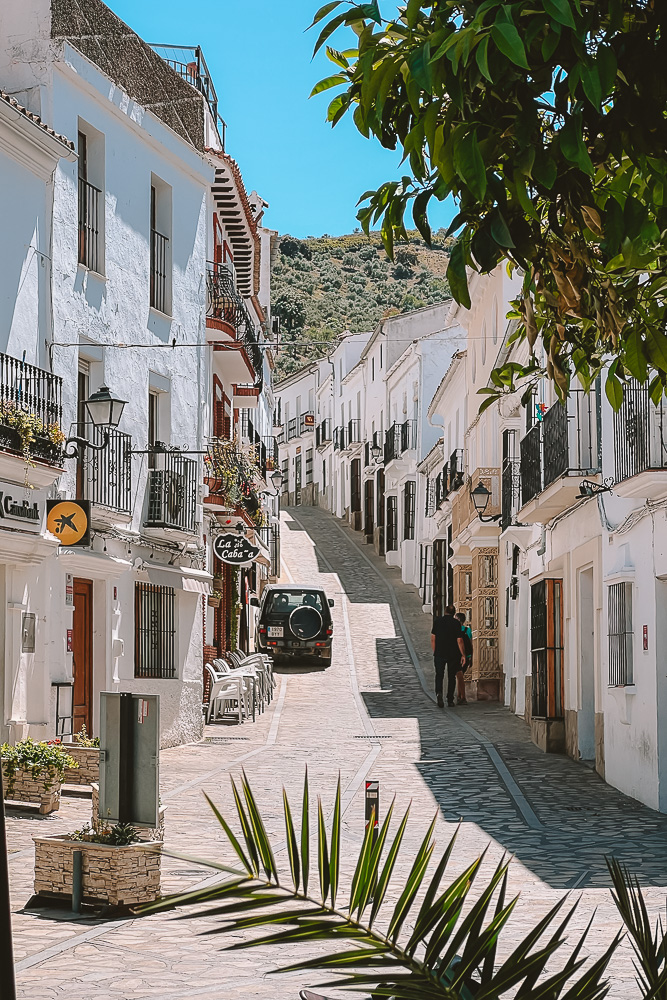
💤 If you are driving to Sevilla, I recommend staying half-way, in this campervan parking in El Coronil with all the services you will need to fill up water and empty grey & black water tanks.
💤 If you want to spend the night in Zahara, you can park and stay here or on Avenida Andalucia. We decided to get a bit of nature time and headed for the little village of Bornos, with a quiet and very nice big park right next to the lake.
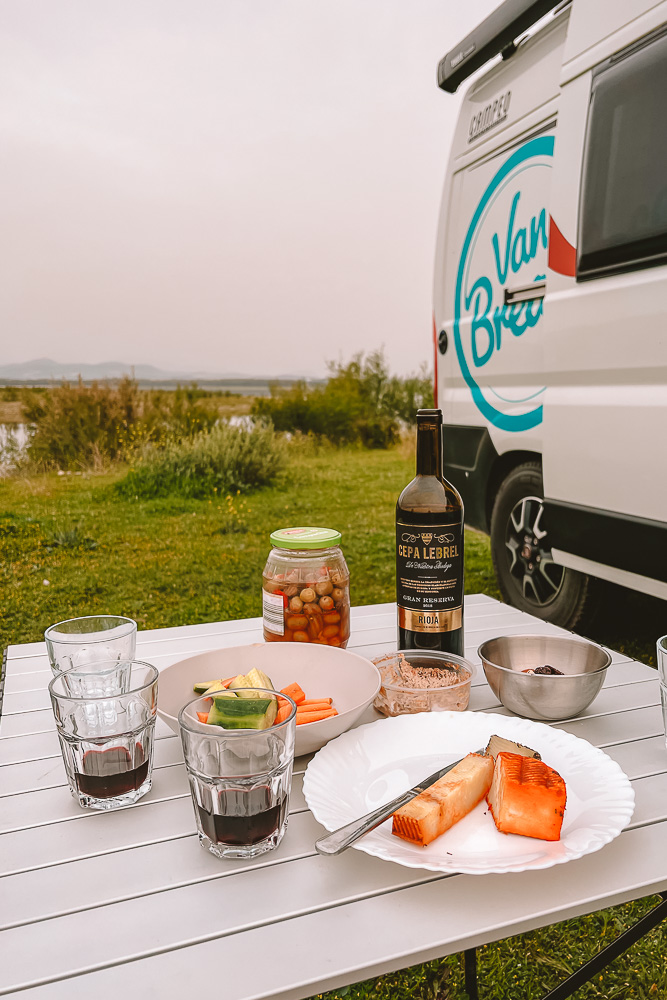
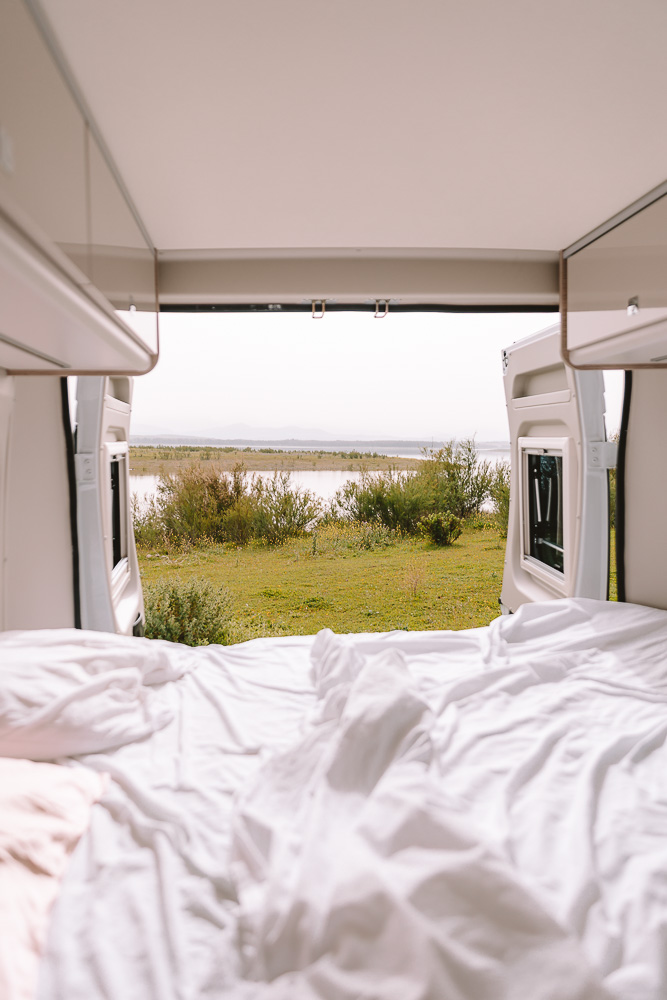
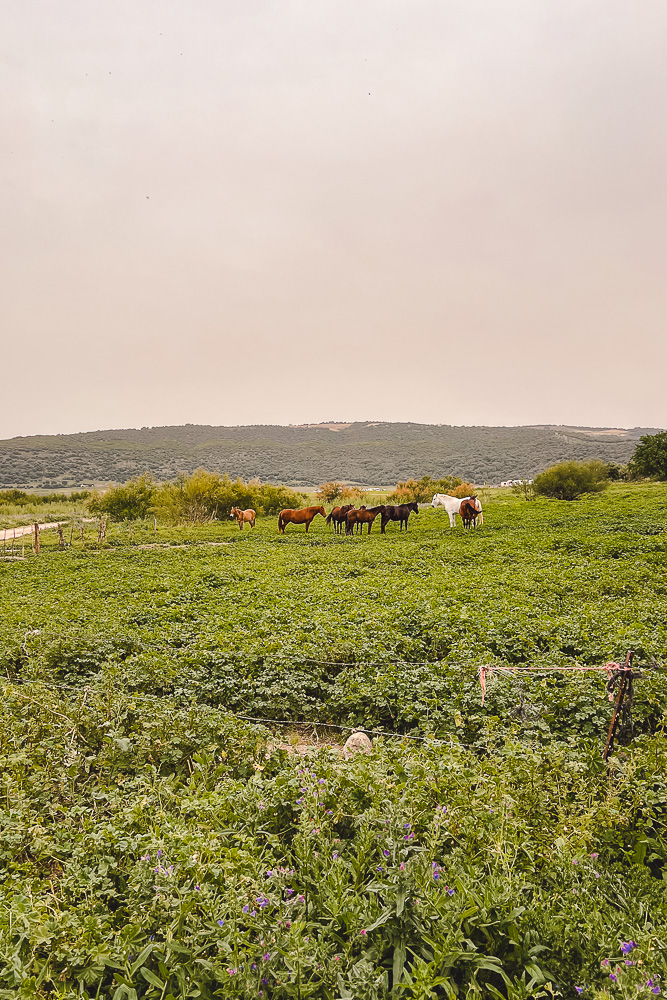
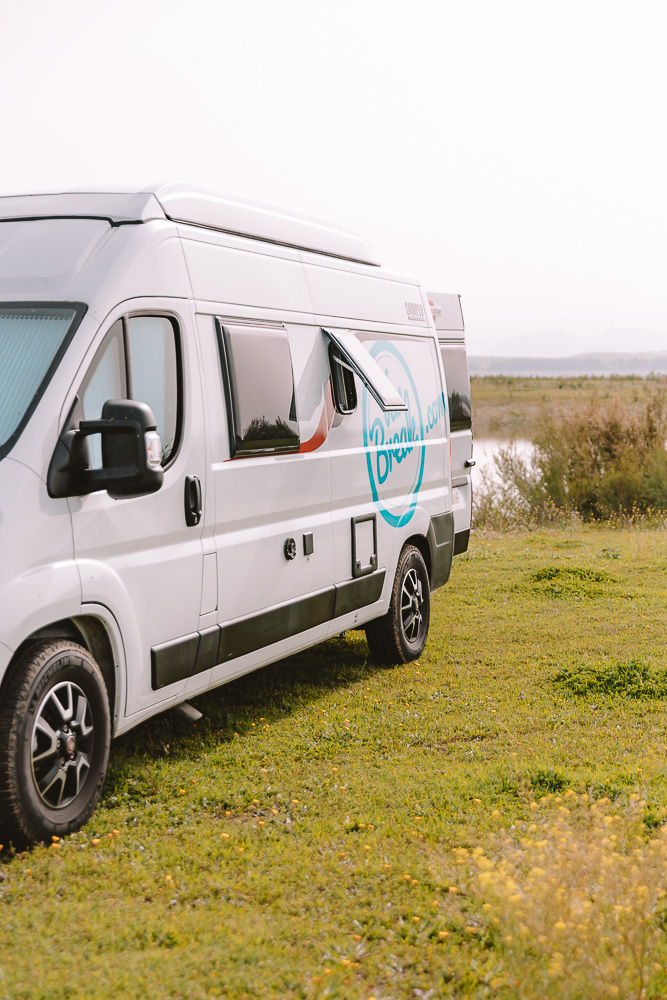

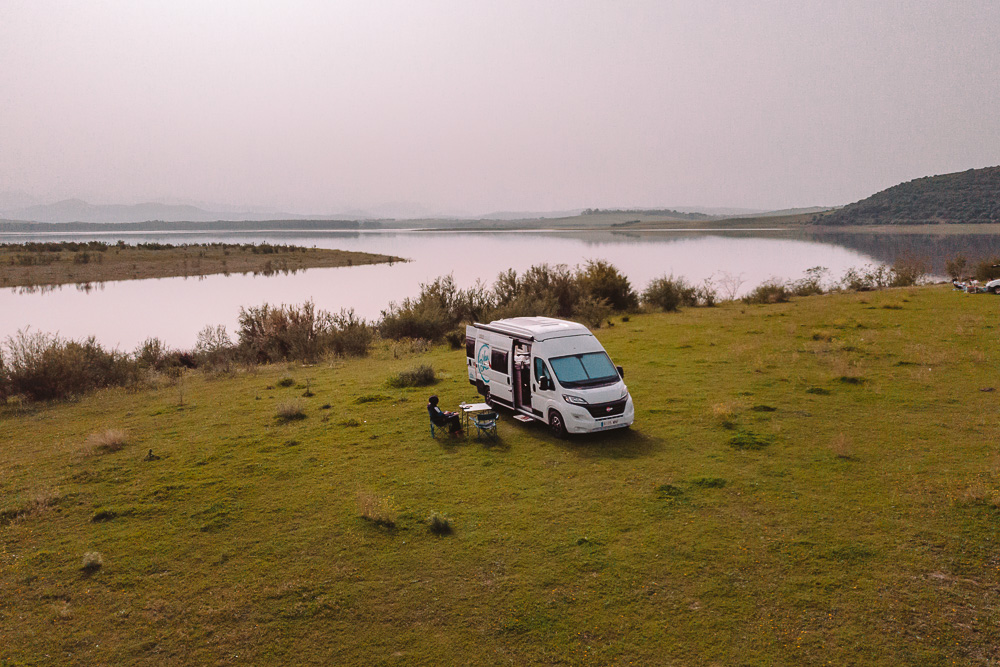
Day 9 & 10: Sevilla
Sevilla is undoubtedly the most stunning city in Spain. Famous for the Real Alcázar, the oldest royal palace still in use in Europe, and the magnificent Plaza de España, the capital of Andalusia is full of culture, history and artistic energy. Many civilizations have left their mark on Seville, now being a beautiful blend of Islamic, Gothic and Renaissance architectures.
Those two days will be your final glimpse of the Moorish history in Spain, but perhaps the most unique one, completely different from other cities. Aside from learning about the rich history of Seville, you will also want to wander and explore around the maze of cobbled narrow streets.
I recommend taking the time to explore the stunning Plaza de España and the Real Alcázar. For the Palace, make sure to book your tickets in advance as you don’t want to queue for hours outside! I’ve curated for you the Ultimate Itinerary for a Weekend in Seville so make sure to read it so you can plan your best trip there!

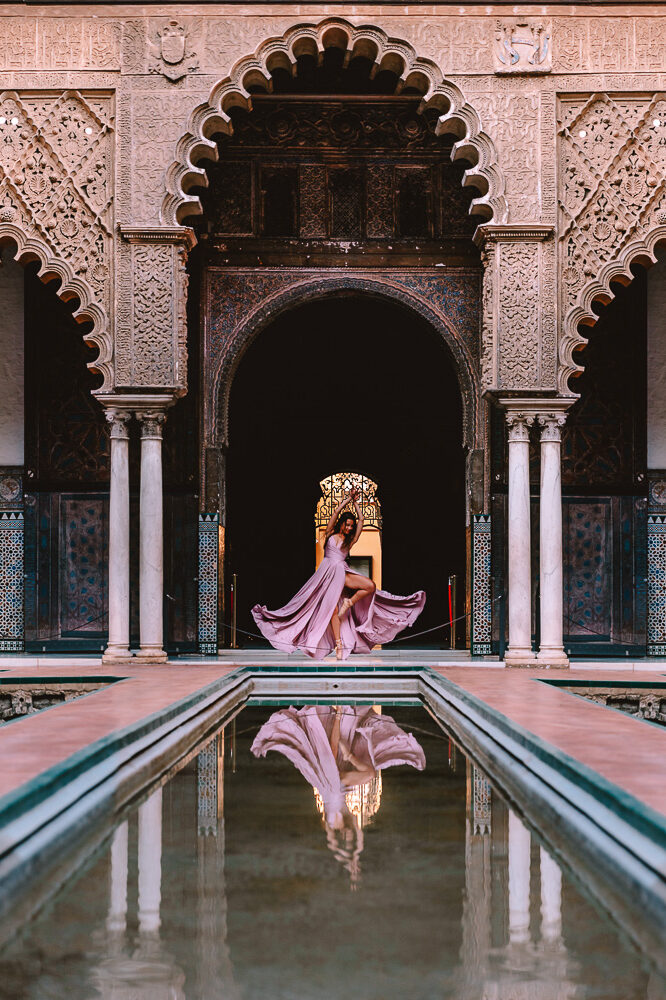
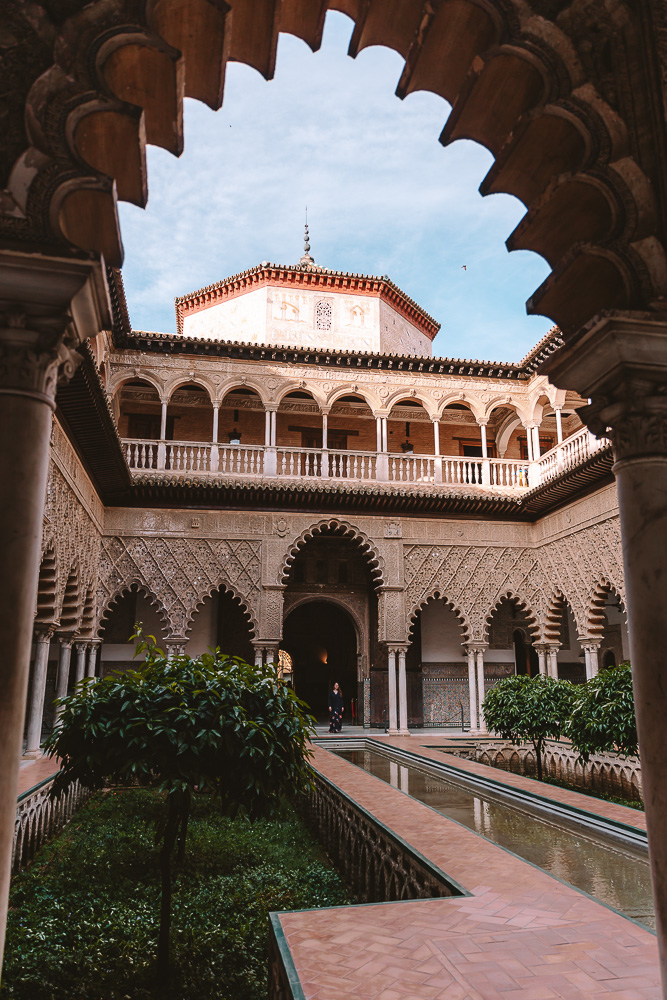

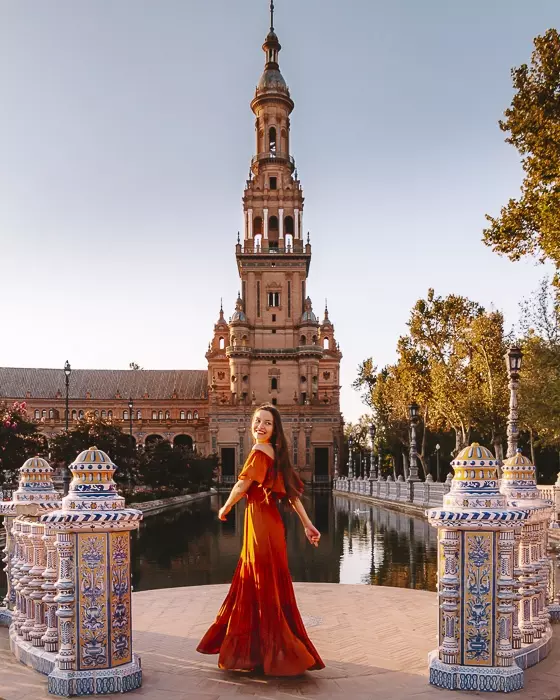
💤 It won’t be your best night spot but it’s always nice to be able to explore the city from your doorstep. As always, I recommend checking the Park4Night app, but my top 3 will be:
– Avenida de la Guardia Civil (37.3694, -5.9867)
– Calle Inca Garcilaso (37.3950, -6.0099)
– Avenida de Chile (37.3775, -5.9920)
N.B.: Alternatively, Sevilla can also be the perfect start of your Andalusian road trip, depending on where you land.
Day 11: Cádiz
The southernmost city of Cádiz has a really different energy compared to other Spanish cities. Founded in 1104 B.C. as a trading post, Cádiz is one of the oldest continuously inhabited cities in Europe. In the 18th century, the Port of Cádiz was the main harbour of mainland Spain.
Located on a narrow peninsula surrounded by the sea, it is a typical Andalusian city with a very traditional atmosphere: most restaurants only serve the traditional tapas menu and drinks. Its coastline has long sandy beaches, with plenty of wind for watersports, while the city itself is a maze of beautiful buildings.
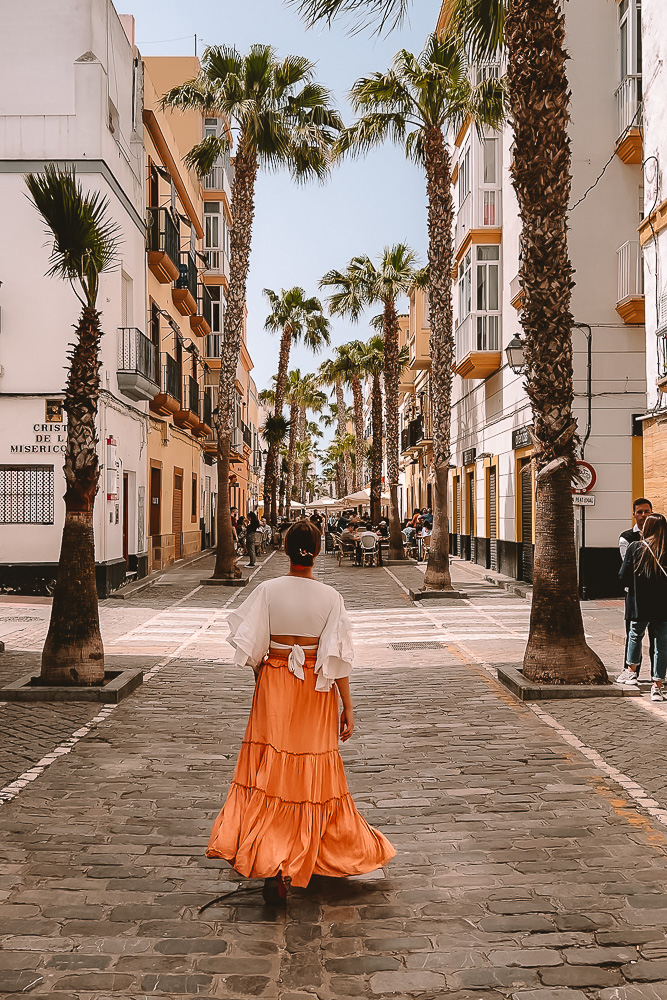
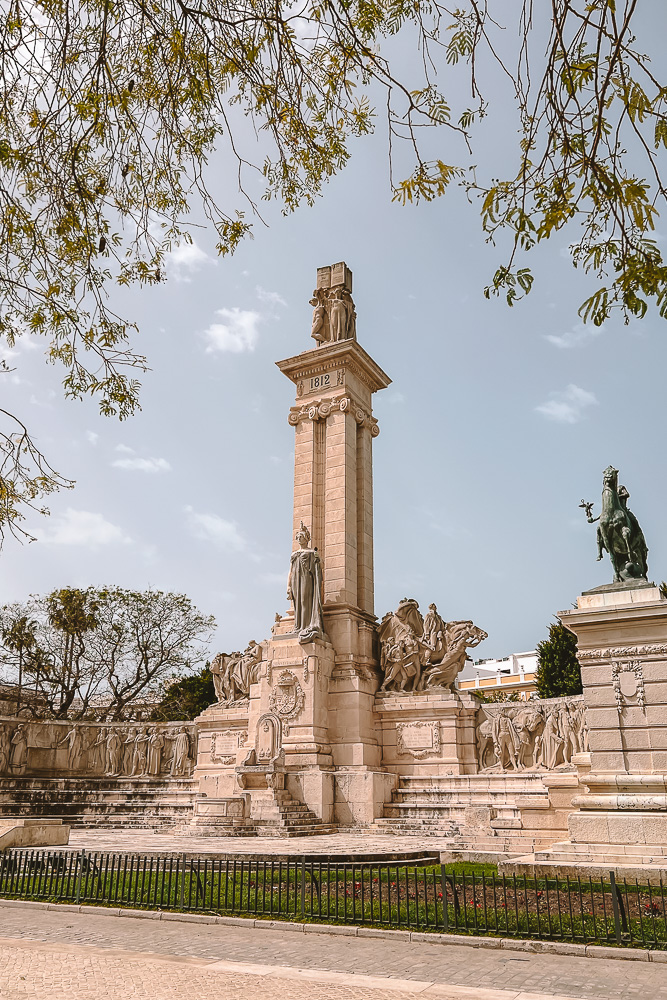
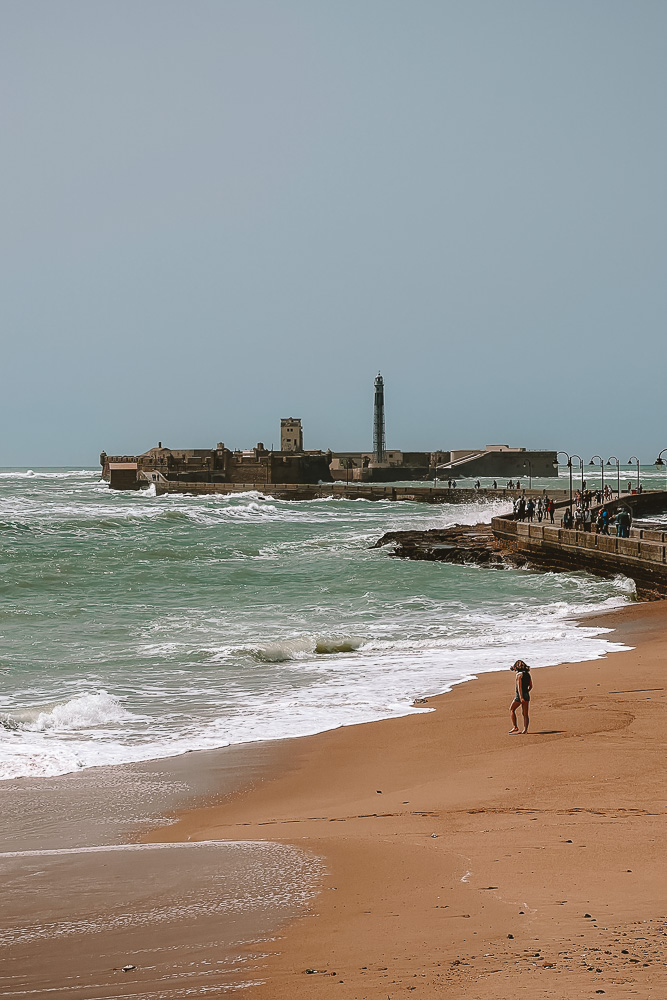
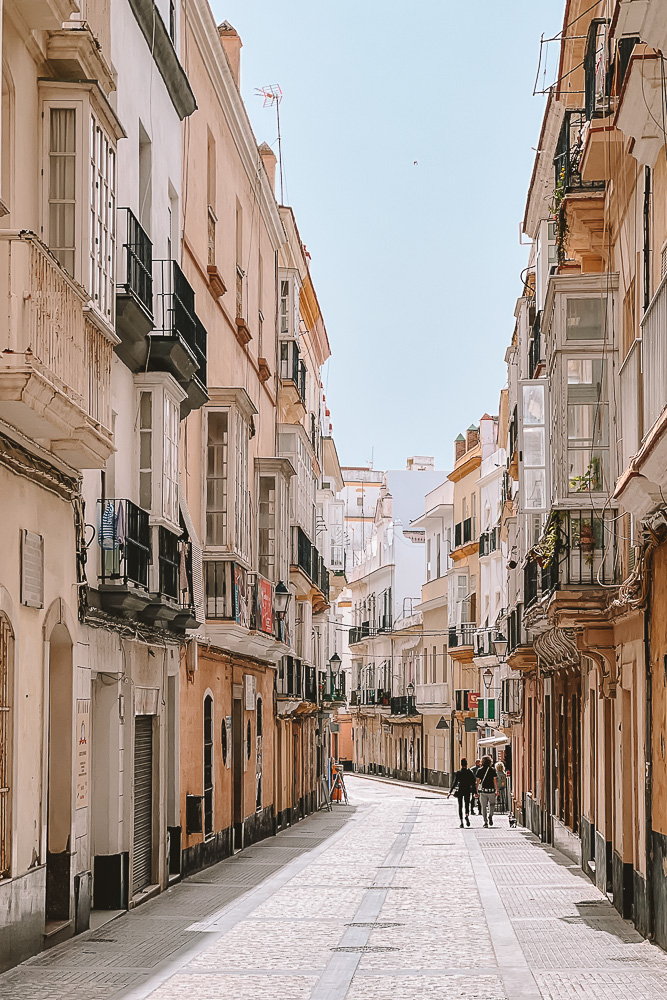

The Catedral is the main sight of Cádiz with a unique architecture. It dates back to the 18th century and took over 100 years to build. Climb the cathedral tower for incredible views, enjoy the nearby beaches and make sure to enjoy the Mercado Centrale for some of the best food specialties and good prices. Make sure to try pescaito frito (fried fish), the local dish best served simple-style with a squeeze of lemon.

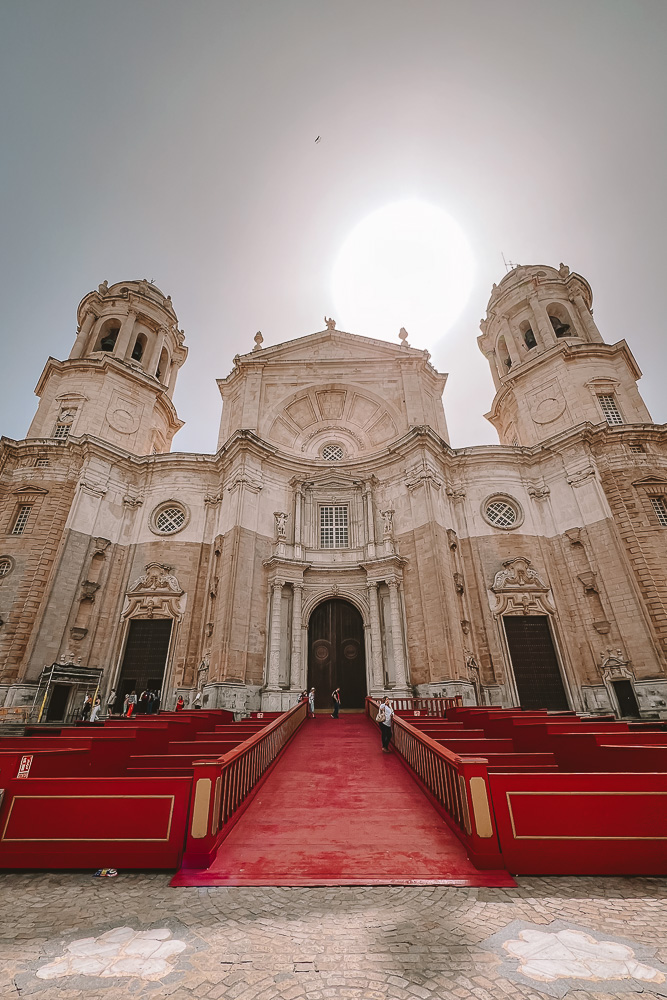
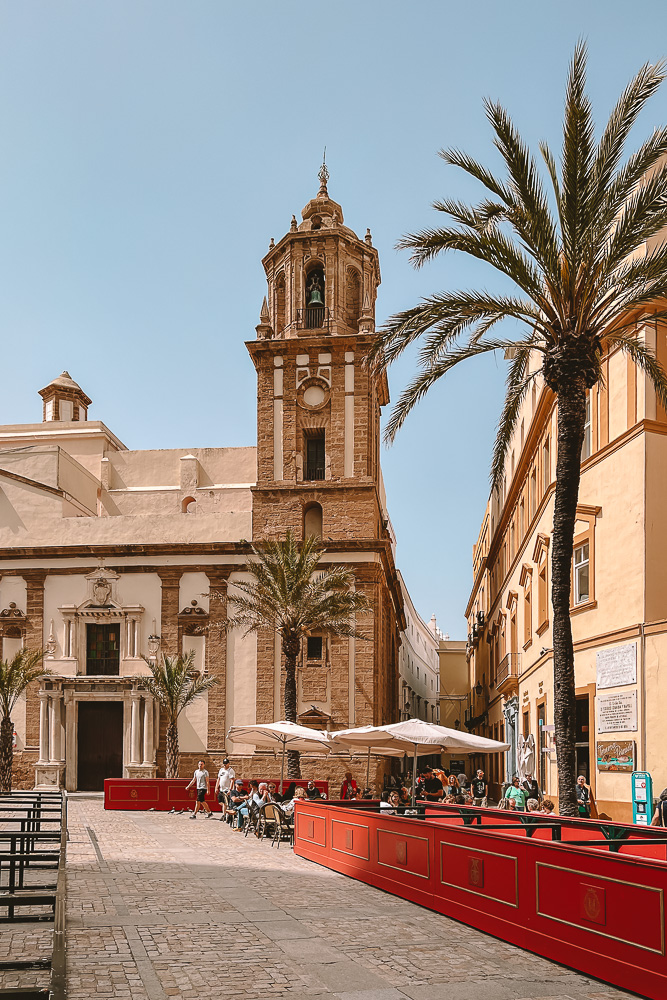
💤 There’s a few parking space around the port that are ok for the day but quite expensive if you wish to spend the night. But if you’re willing to drive 20min, you’ll find the little town of San Fernando with this quiet carpark in front of the beach (almost). It was perfect to spend the night!
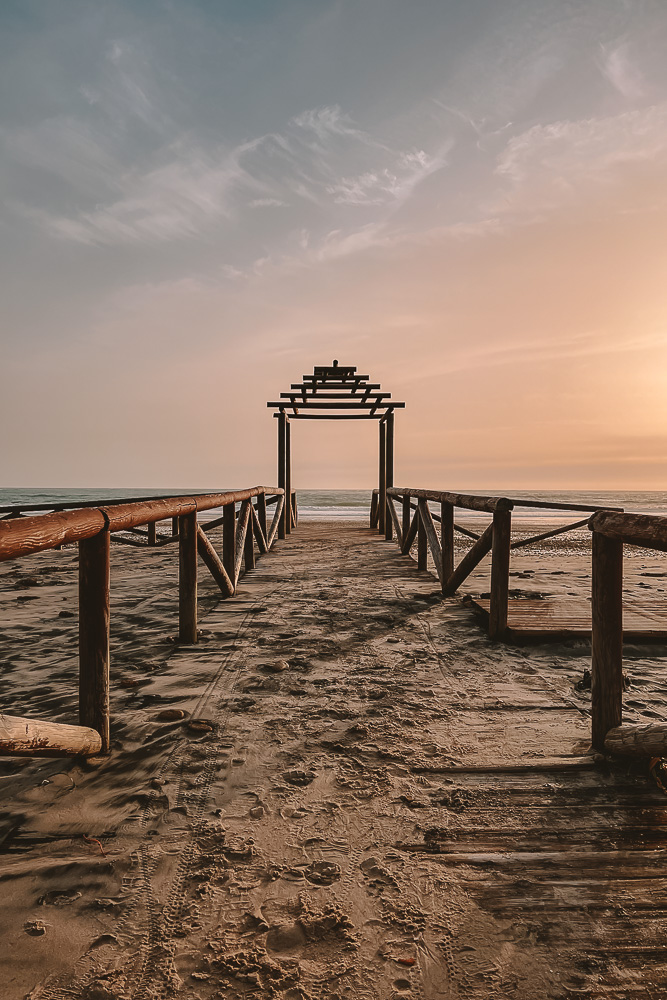

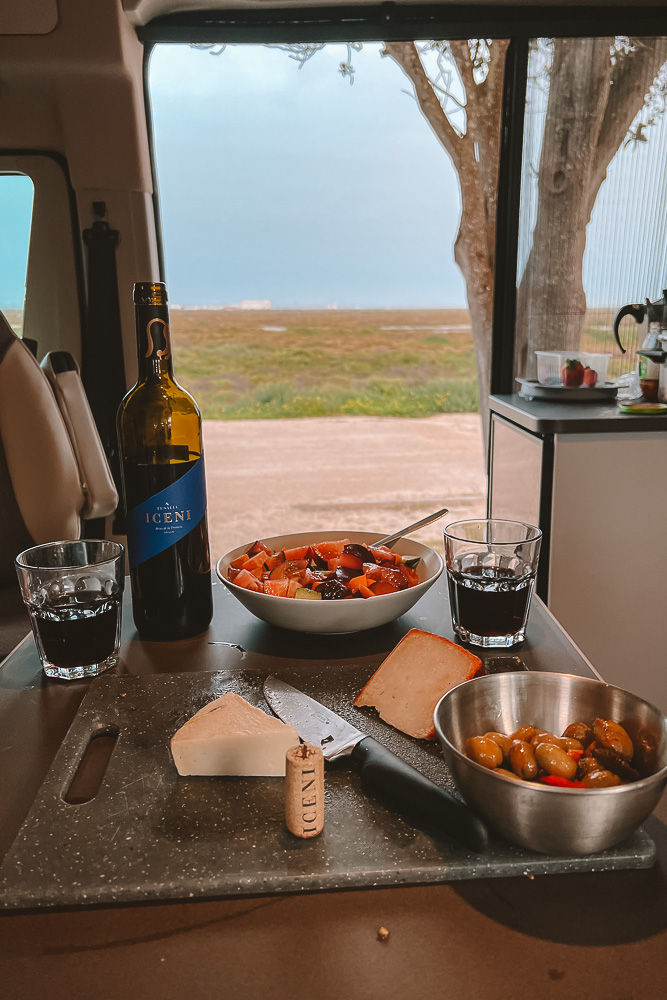
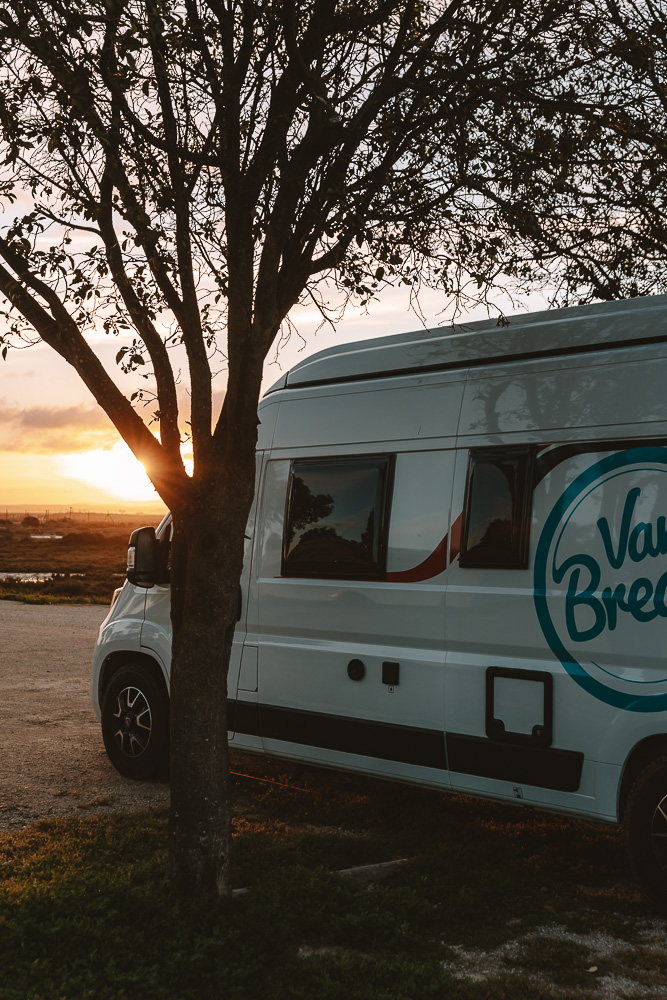

Day 12: Bolonia & Dunas de Valdevaqueros
A bit south of Cádiz is the stunning sand dune of Bolonia. With over 30m high and 200m wide, this sand dune was declared Natural Monument in 2001. It is one of the most unspoilt areas of the Cádiz coast, a vital natural habitat with stunning scenery. There are outstanding underwater karst formations making it the perfect spot for scuba diving.
However, all the carparks have a 2.2m height-limit… So we decided to drive up a bit to the Mirador Camarinal to get some better views over the dune and the beach. It was the perfect spot for coffee!
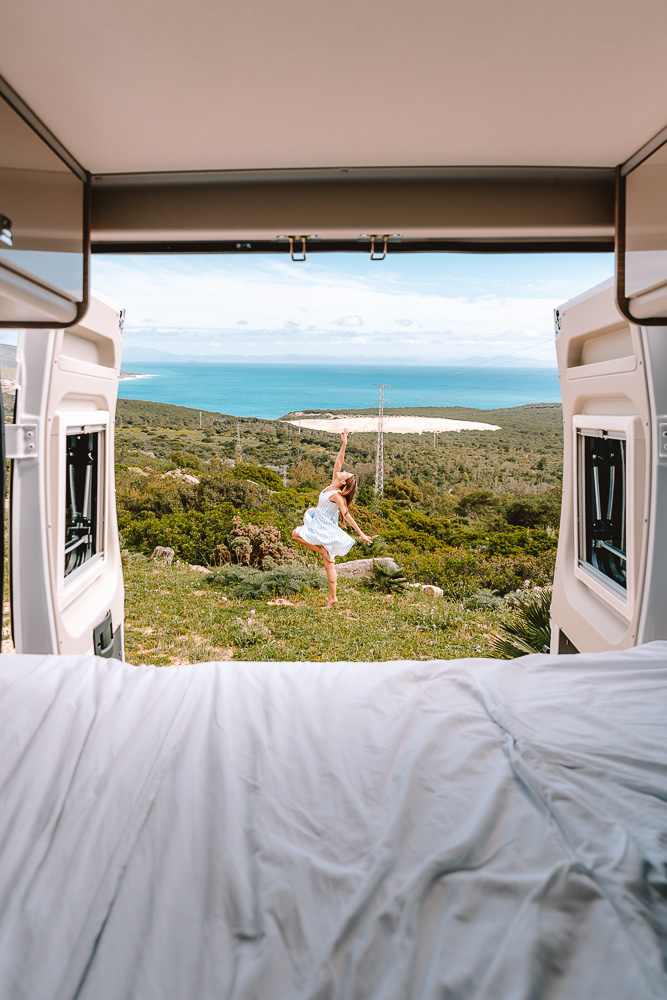
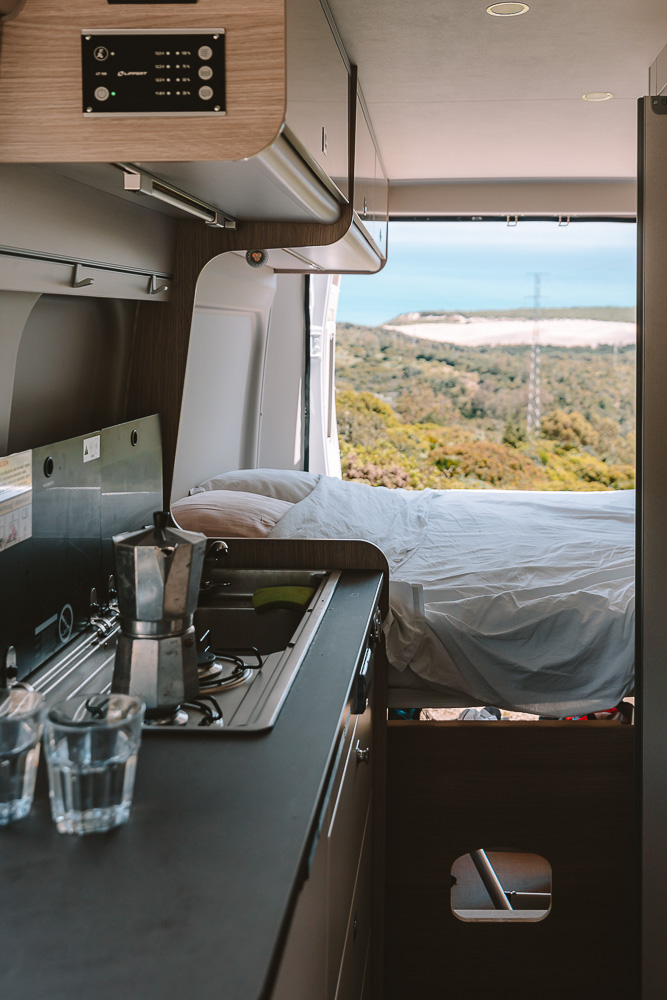
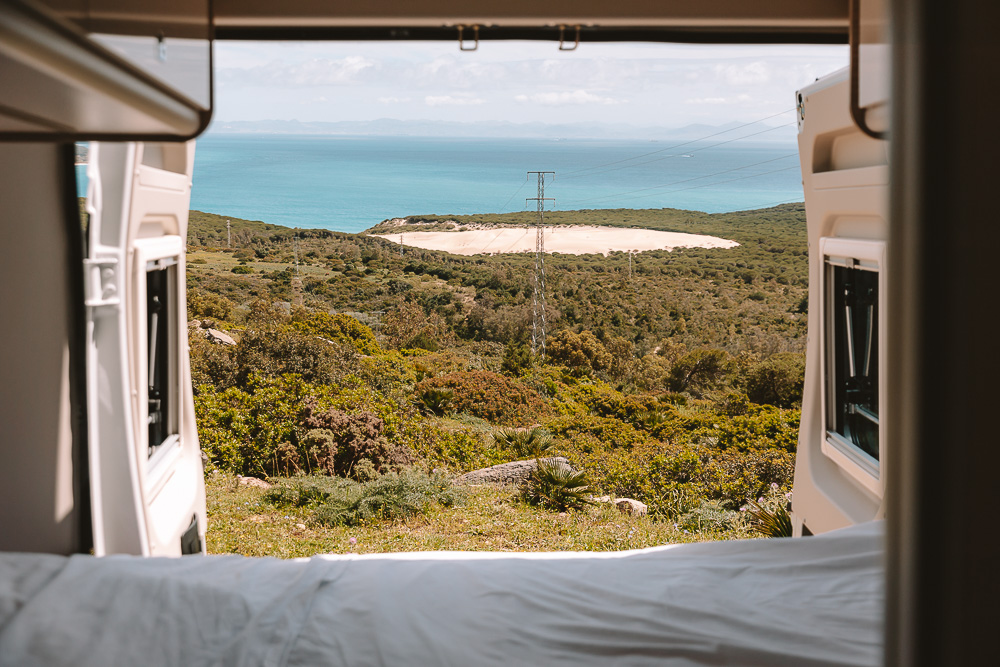
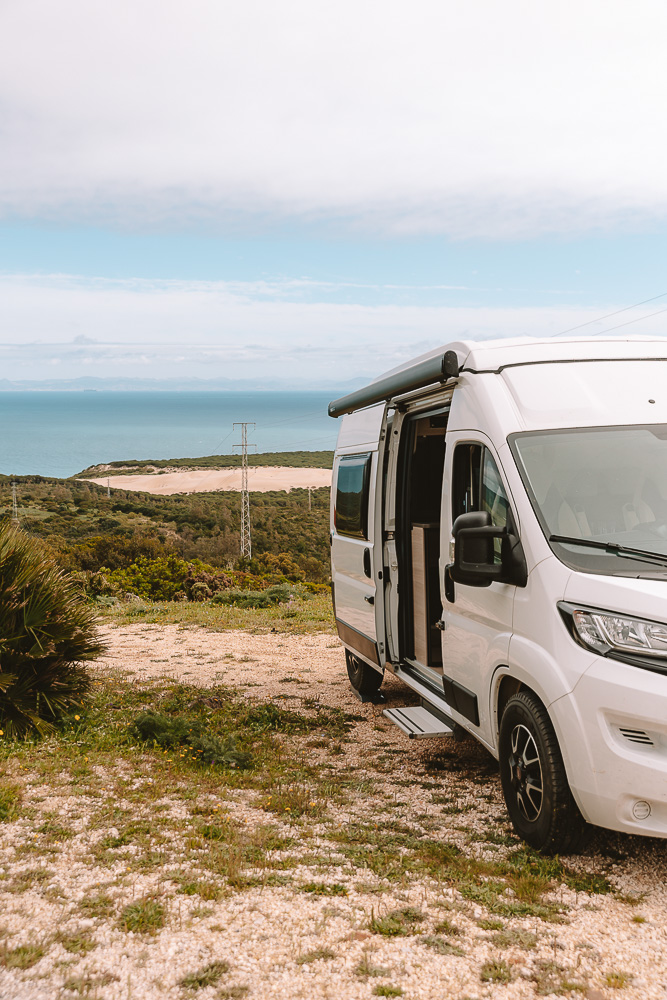

Heading south towards Tarifa, you will find the Dunas de Valdevaqueros. Valdevaqueros stretches 5km from a small headland all the way to Punta Paloma. It is famous for its windy beach, a paradise for kite-surfers, and is a must for anyone looking for a beautiful beach. You’ll also get stunning views over the Moroccan coastline. The sea here is Atlantic, so a bit cooler than the Costa del Sol, and it gets deep very quickly, making it easy to dip in and out. However it can get very very very busy in summer. The main car parks have a height limit of 2.2m but there’s this one which is quite small but perfect for higher campervans.
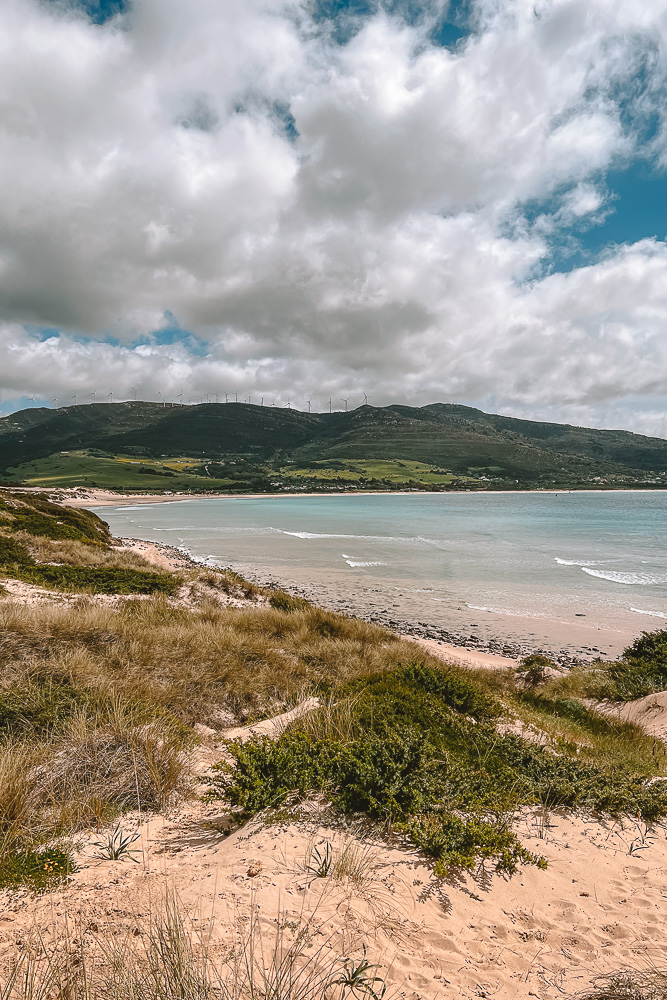
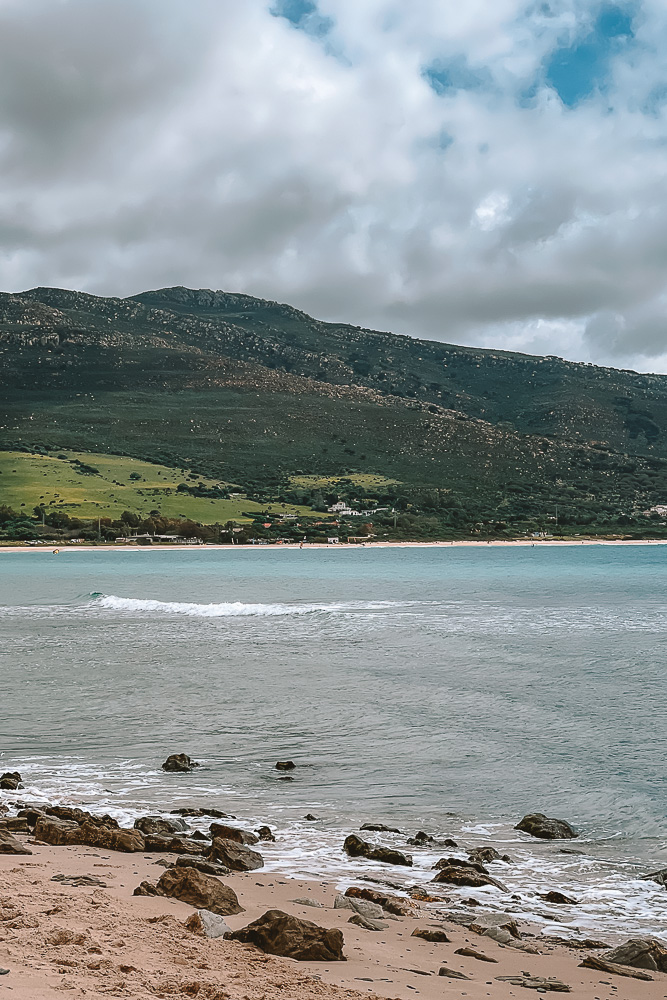
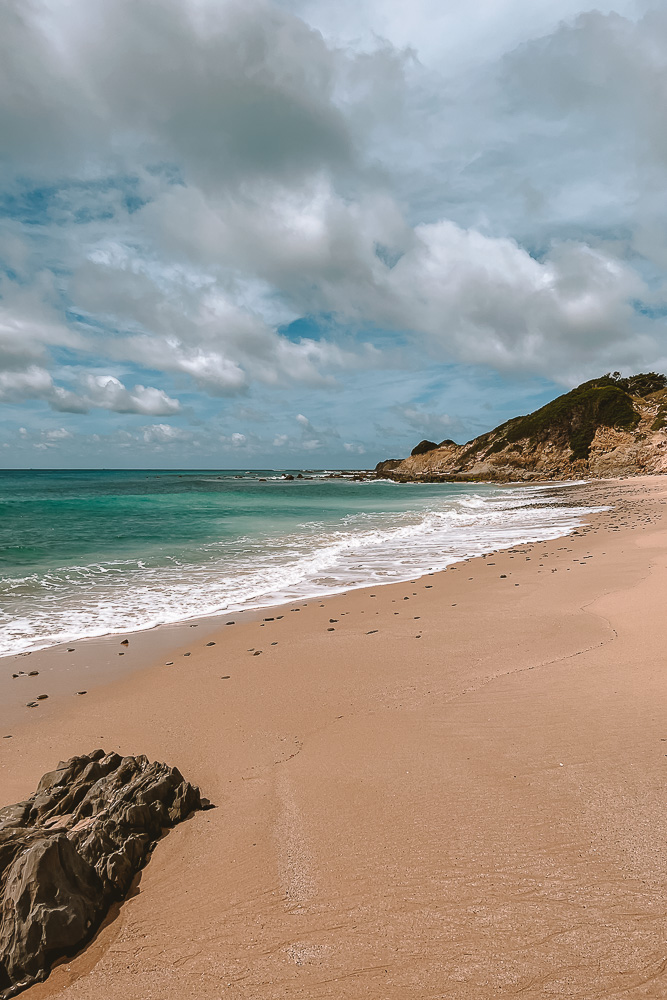
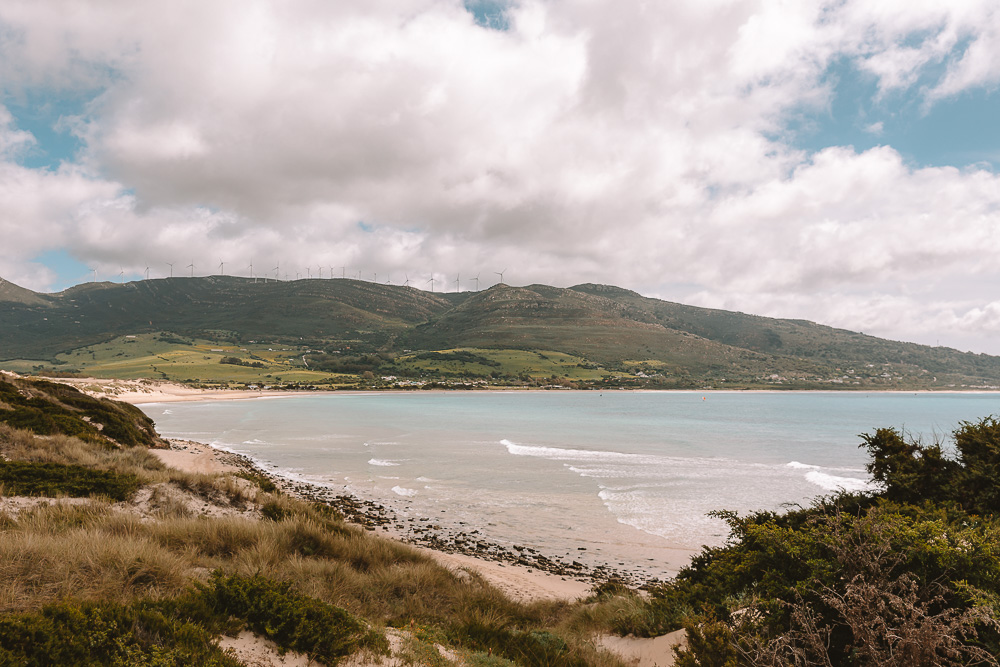
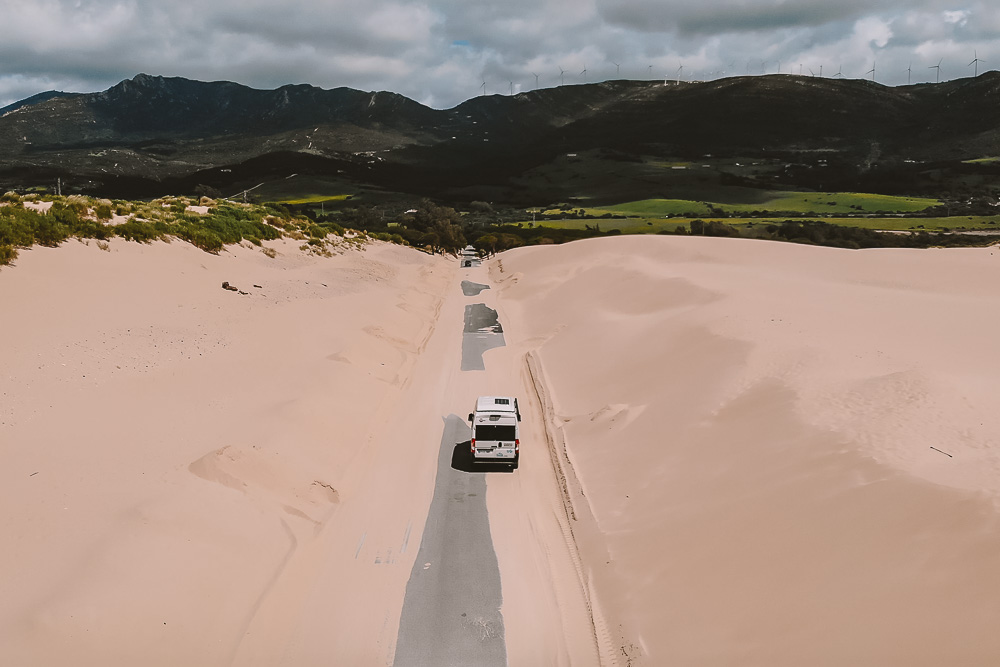
💤 To be honest, this was our most difficult place to find. After trying to find a spot in Valdevaqueros, we came back to Bolonia in a last attempt to find something and ended up very lucky with a last spot remaining after the river. In high season, I would definitely recommend staying in a proper campground with direct access to the beach. There is plenty along the coast!
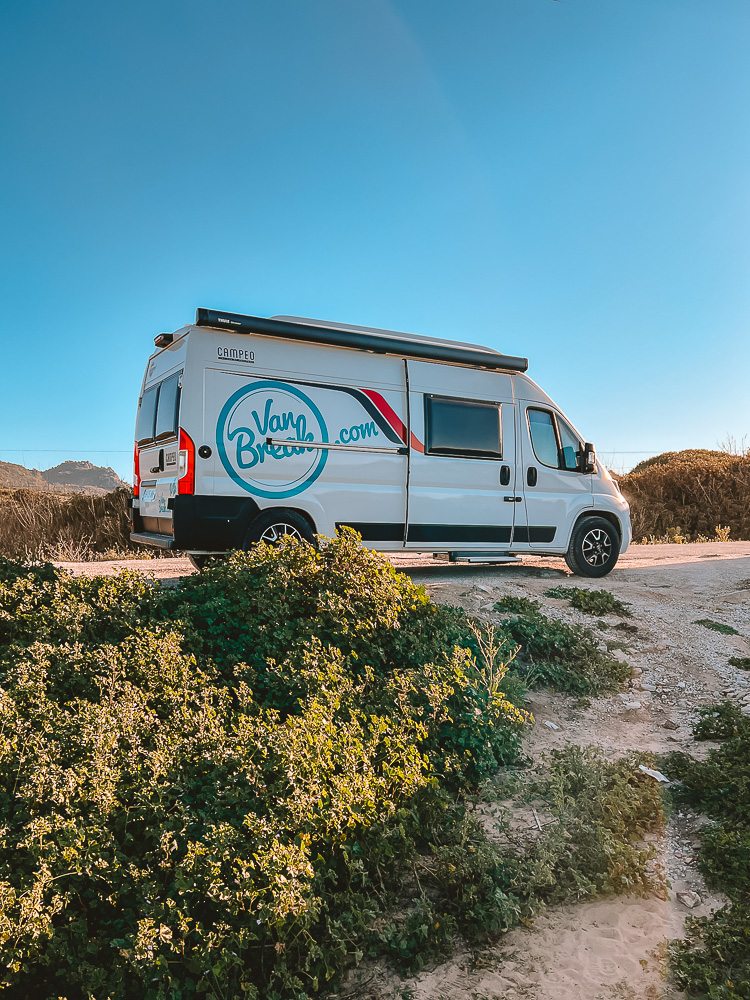


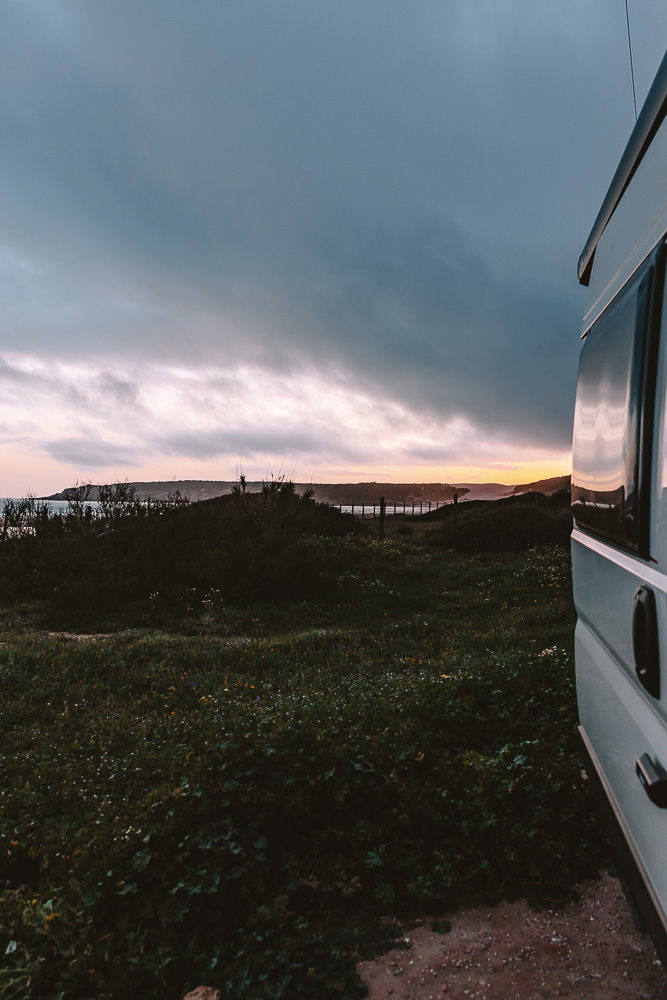
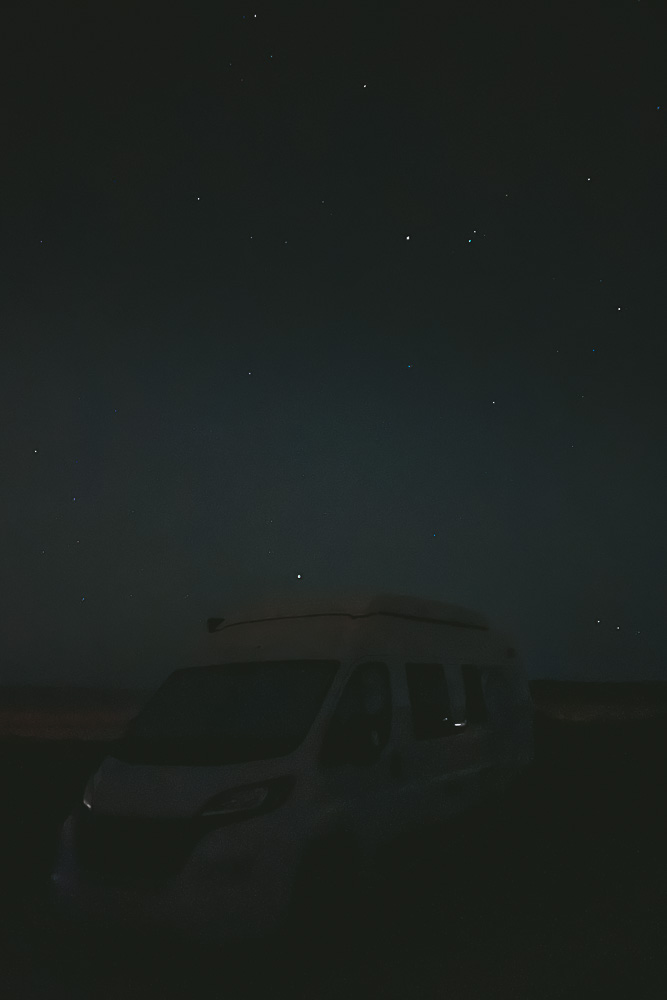


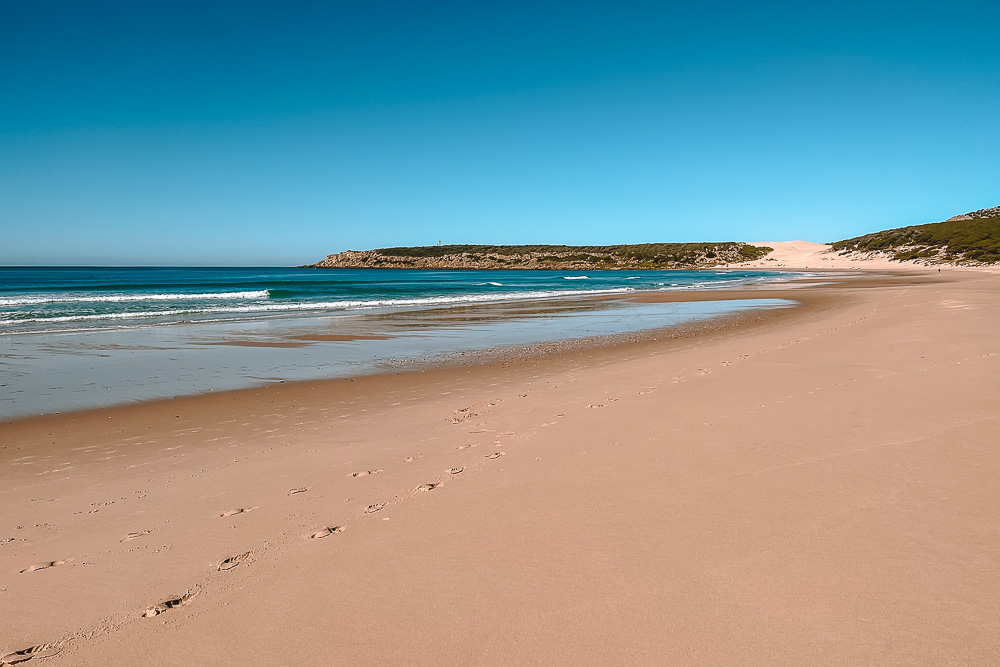
Day 13: Marbella & Castillo de Colomares
On your way back to Málaga, the unofficially capital of the Costa del Sol Marbella, makes for the perfect pit stop. It has much more to offer than just night life and pretty beaches. The Casco Antiguo is a very picture-perfect Andalusian historical center, that kept its traditional fisherman village atmosphere in a mix of Roman and Arab history.
Just 30min away is the impressive Castillo de Colomares. This building was built by Dr Esteban Martín y Martín from 1987 – 1994 and is dedicated to Christopher Columbus and his arrival in the New World. It is a mixture of several styles, made of brickwork, concrete, natural stone, wood and other materials.
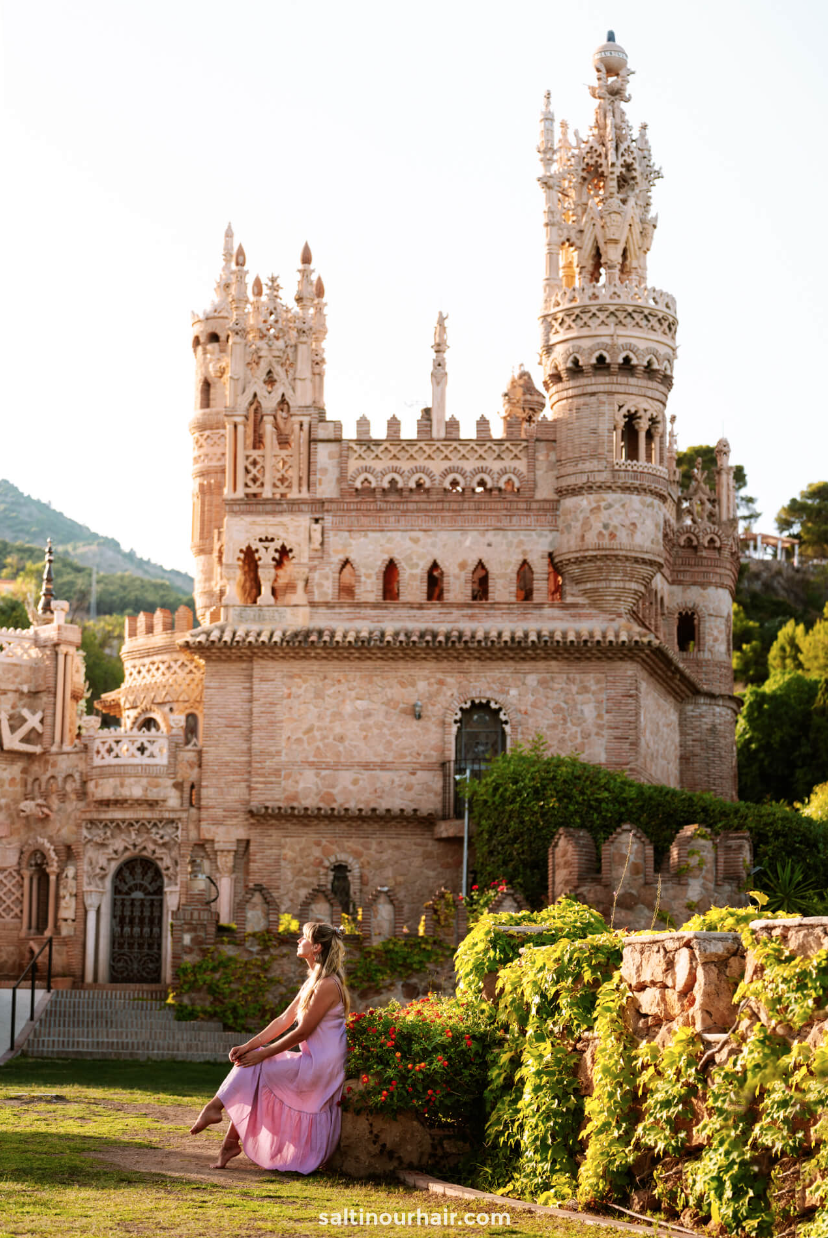
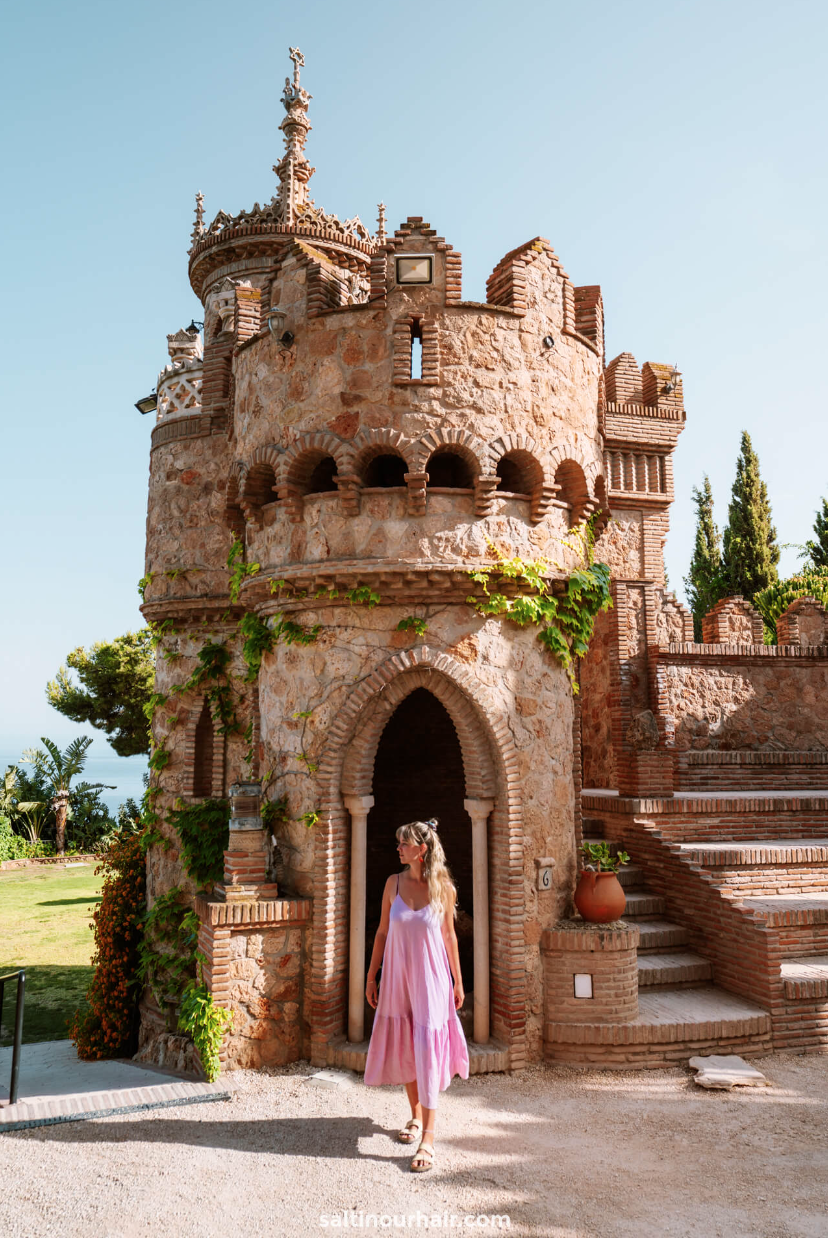
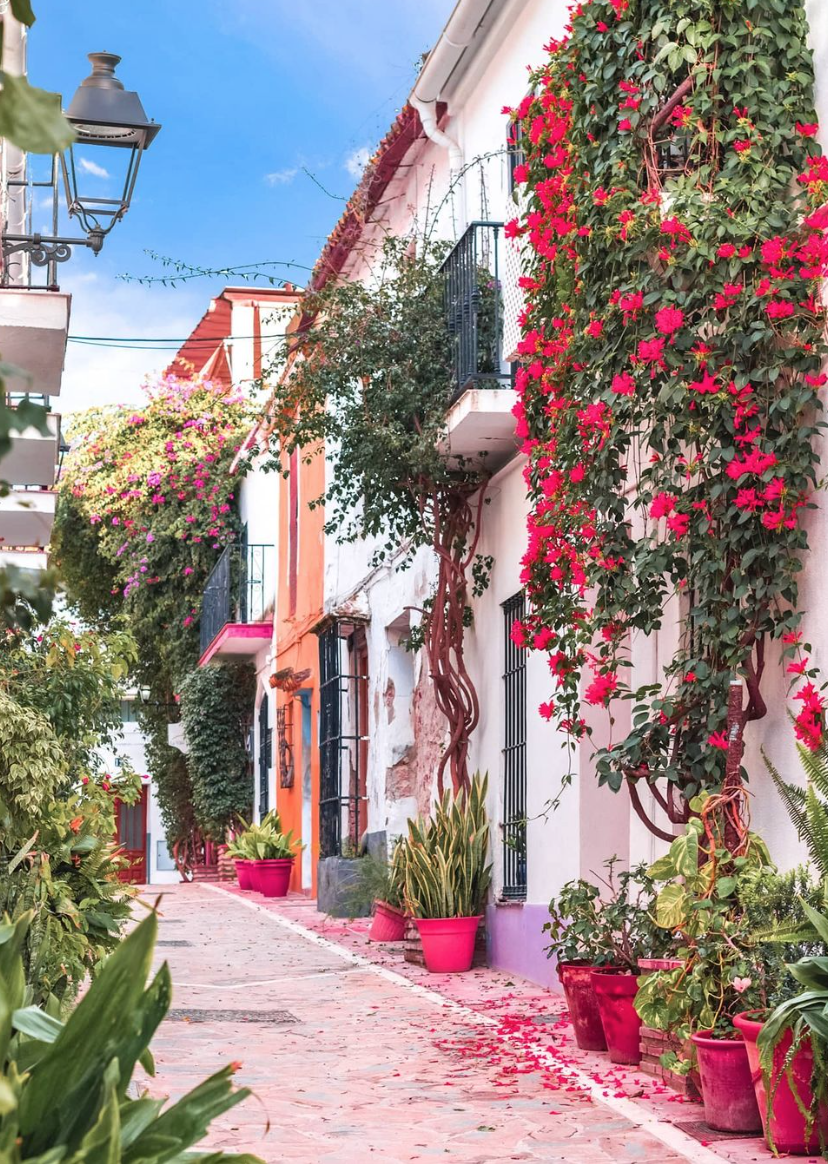
More Options
Andalusia is a massive region in southern Spain with countless things to do. From beautiful villages, hikes and cities to explore, you can easily spend a month or more slowly working your way around. If you have more time, I suggest you to consider adding those few spots along the way.
- Caminito del Rey: this is one of Spain’s most thrilling hike. You need to book your ticket at least a month in advance as it is very popular.
- El Torcal de Antequera: a unique limestone rock landscape that has often been used in movies.
- Desierto de Tabernas: where many western movies has been filmed
- Montefrío, Arcos de la Frontera or Conil de la Frontera: for some more Pueblos Blancos if you didn’t get enough!

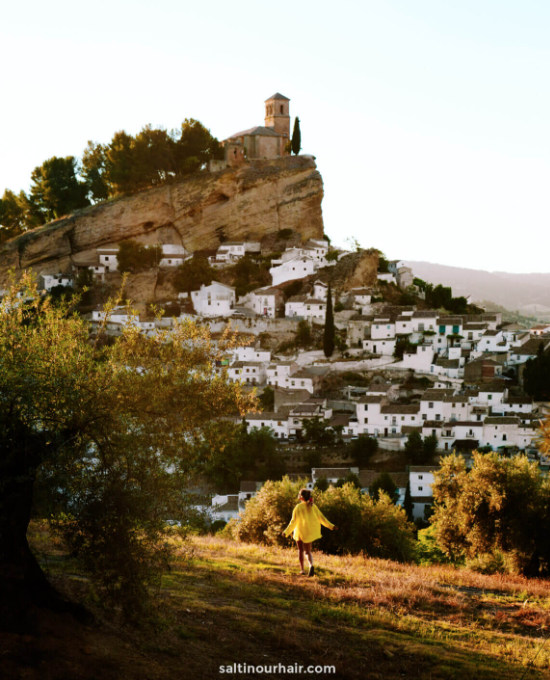
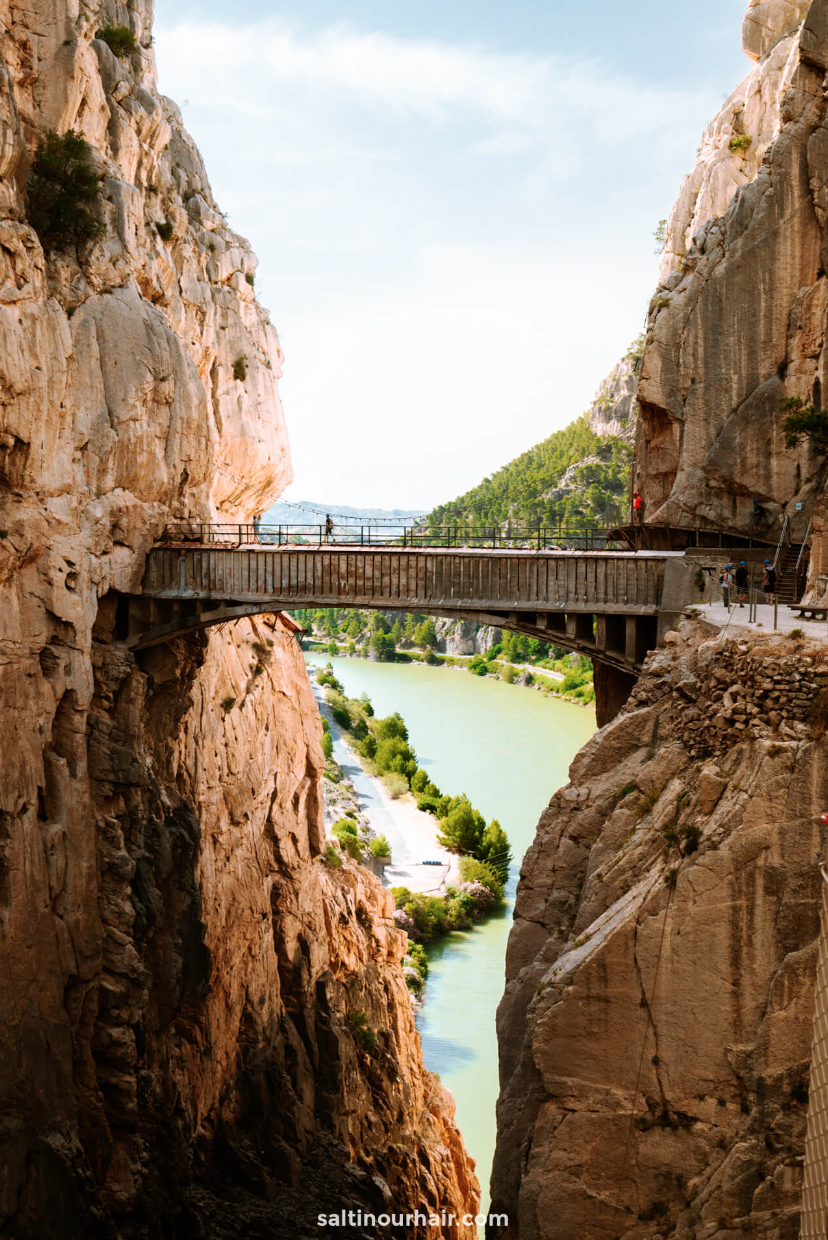
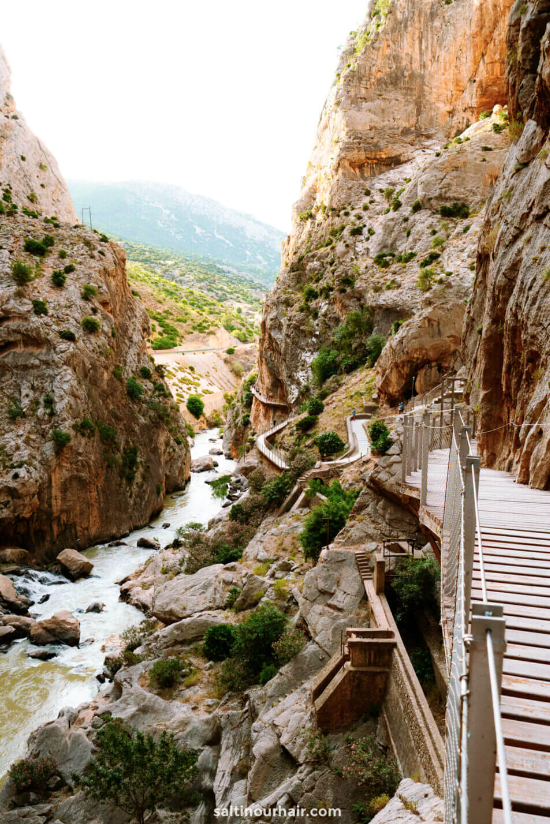
General Infos
Language
Most of the time, people speaks very good English. It is especially true in the main cities like Seville, Granada, Cádiz etc. However we did find that in some more rural areas and lesser known White Villages, speaking a few words of Spanish would help a lot. And anyway, it’s always polite to learn a few words, like gracias (thank you).
Best time to visit
Andalusia is one of the warmer regions in Spain. Sunny all year round, it has an average day temperature of 23°C (73,4°F) and 6 days of rain from November to April. It is one of the warmest places in Europe in winter and make for the perfect sunny getaway. While you’re likely to get good weather no matter when you go, here are some things to consider:
- High season: March through June (13° – 25°C / 55° – 77°F). Great temperatures and lots of local festivities*, but more crowds.
- Shoulder season #1: September through November (14° – 26°C / 57° – 78°F). Perfect temperatures and fewer crowds; a great time to visit.
- Shoulder season #2: December through February (6° – 18°C / 43° – 64°F). Colder weather (but still not too cold), few crowds, and perfect for getting some winter sun.
- Low season: July and August (temperatures often exceed 36°C / 96°F). The least amount of crowds but very hot & humid weather that can be unpleasant.
*The Semana Santa and Feria de Abril festival dates vary from year to year – check them here.
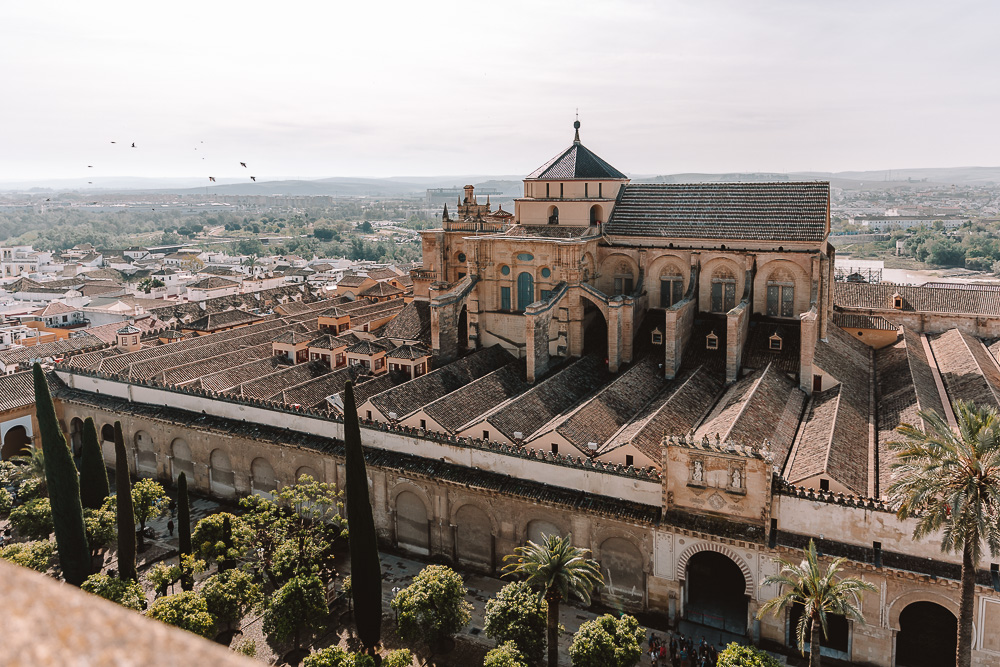
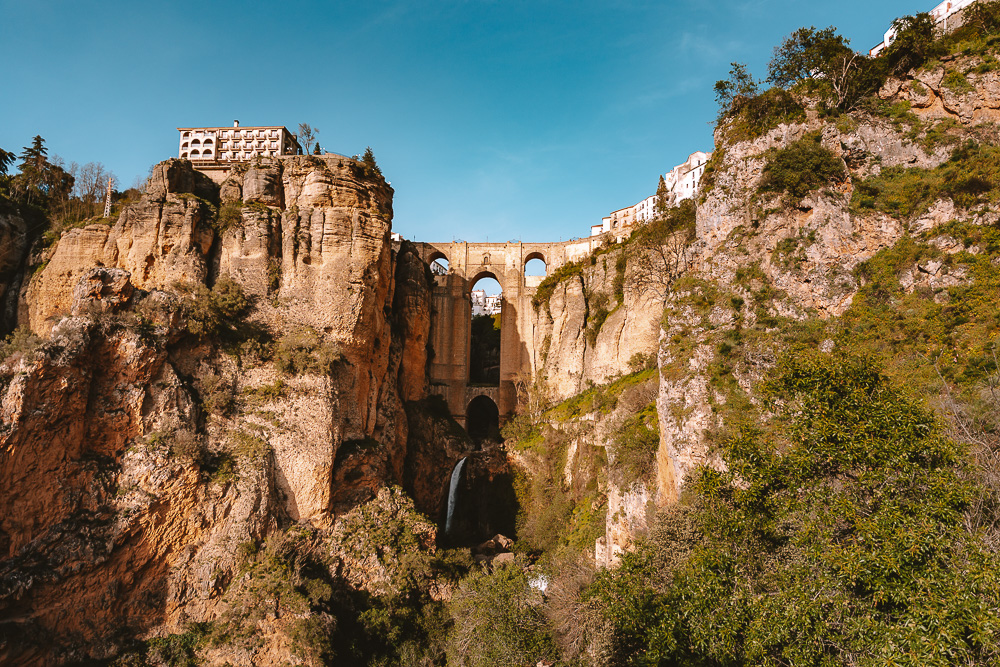
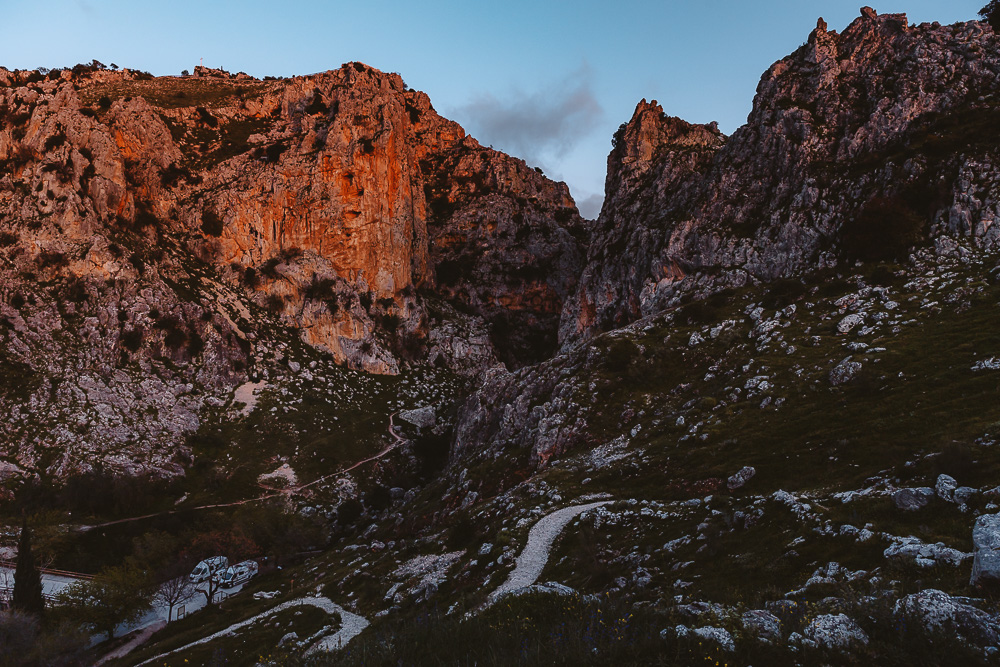
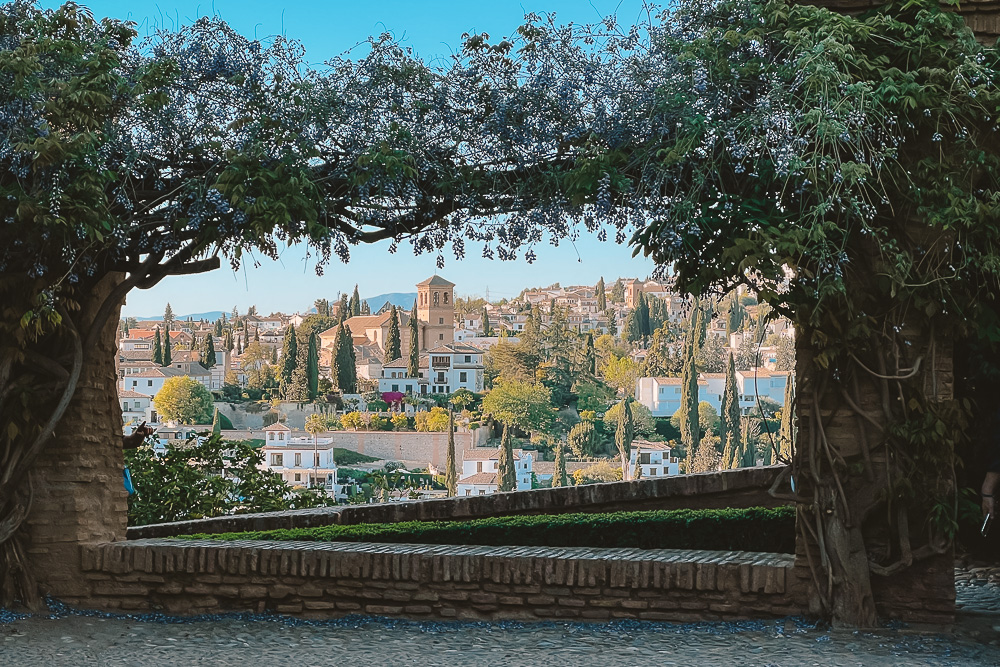
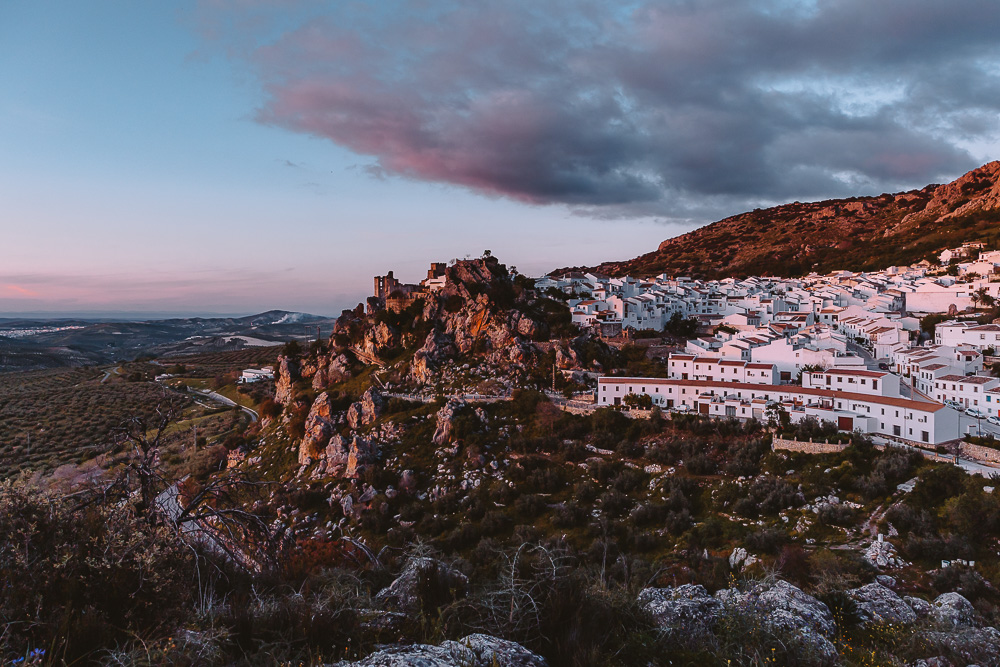
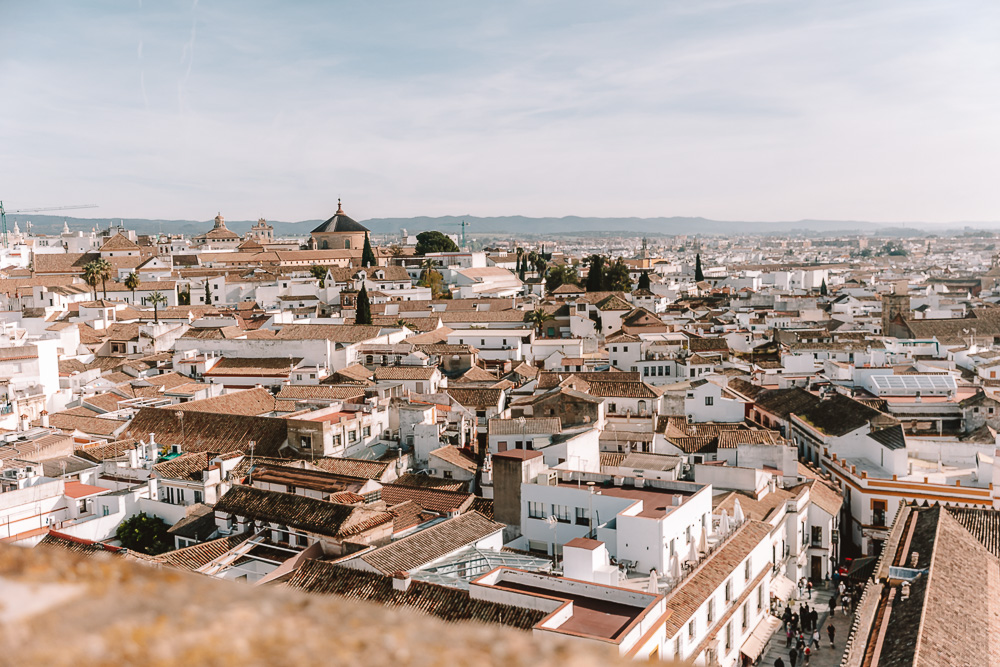
How to get there
There are a few international airports in Andalusia, including one in Seville and Almeria, the biggest one being Málaga. If you’re flying to Madrid or Barcelone, consider taking the train to Andalusia. There are many high-speed direct options that will get you straight to Málaga, Seville or Granada in a matter of hours.
Getting around Andalusia
The best way to experience Andalusia is by car. The region is vast and very remote, meaning you’ll have greater freedom to reach the small villages and rural nature if you drive.
Otherwise, trains link major cities like Seville, Málaga, Granada or Córdoba. However, you won’t be able to reach any of the white villages by train and only a few have buses running.
I recommend to rent your campervan through Van Break Malaga, with insurance included. Traveling with your home-on-wheels has plenty of perks including saving a lot on accommodations that can be expensive in big cities. This local company will provide you with everything you need to have the best trip in Andalusia.
Experience Andalusian cuisine
Andalusia is the birthplace of tapas, so there are plenty of traditional dishes to try in the cities. Don’t miss:
- Salmorejo: cold tomato soup
- Espinacas con garbanzo: spinach with chickpeas
- Croquetas: various (mushrooms, asparagus, cheese etc) filling wrapped in a fried potato
- Serrano ham
- Cazon de adobo: deep-fried marinated fish
- Pescaito frito: fried fish
- Tinto de verano: andalusian version of Sangria, made of red wine and soda
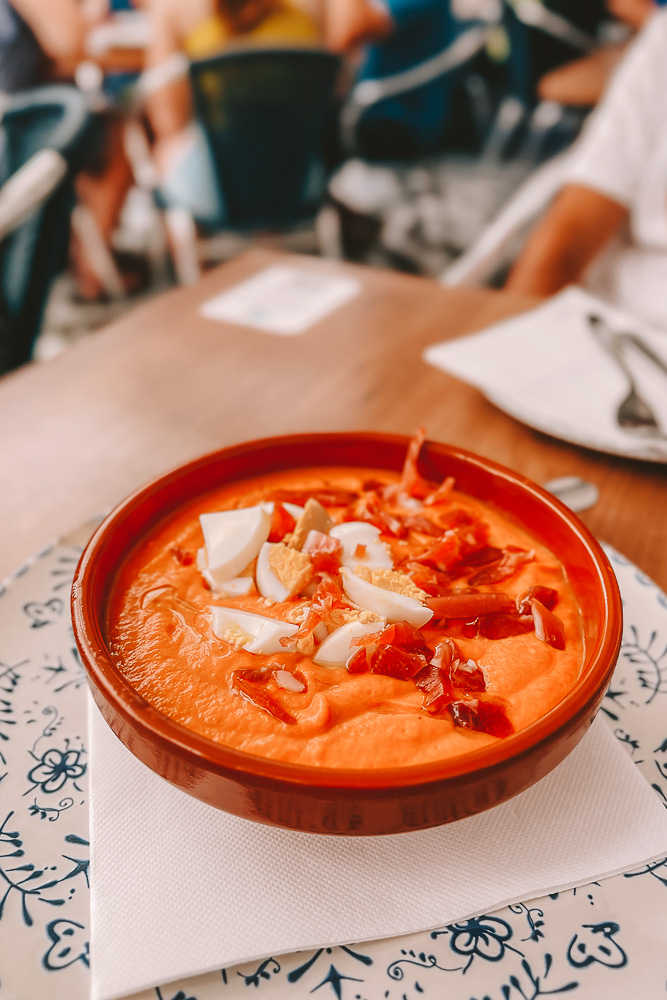
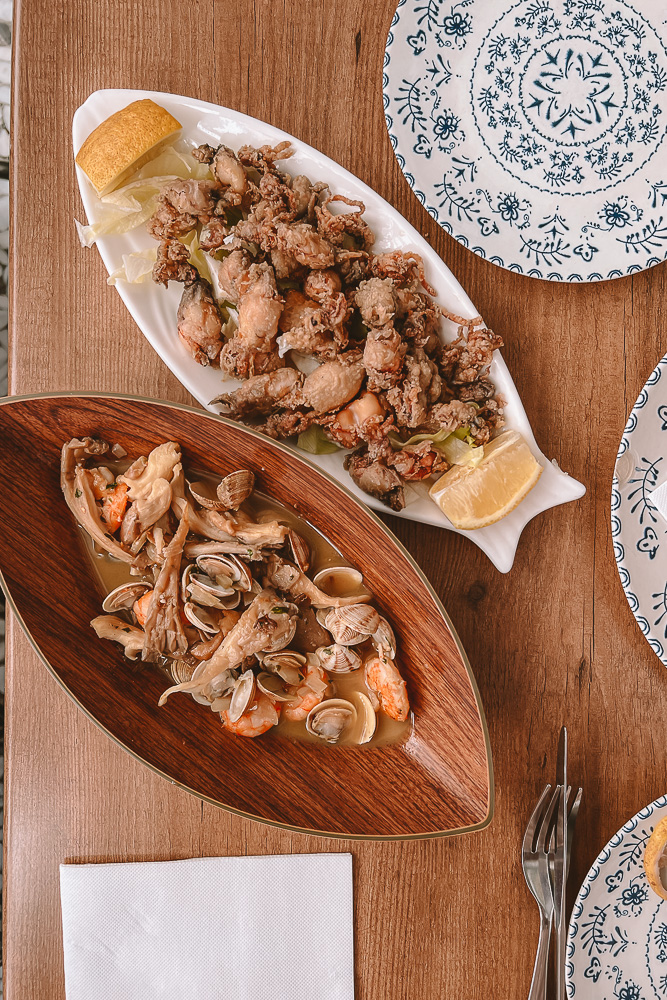
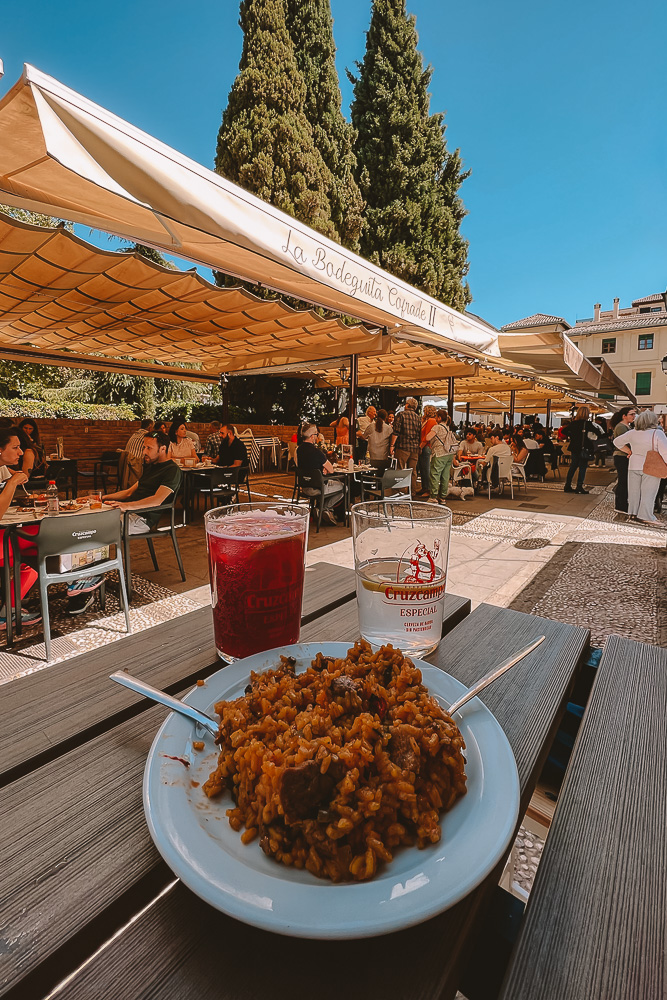

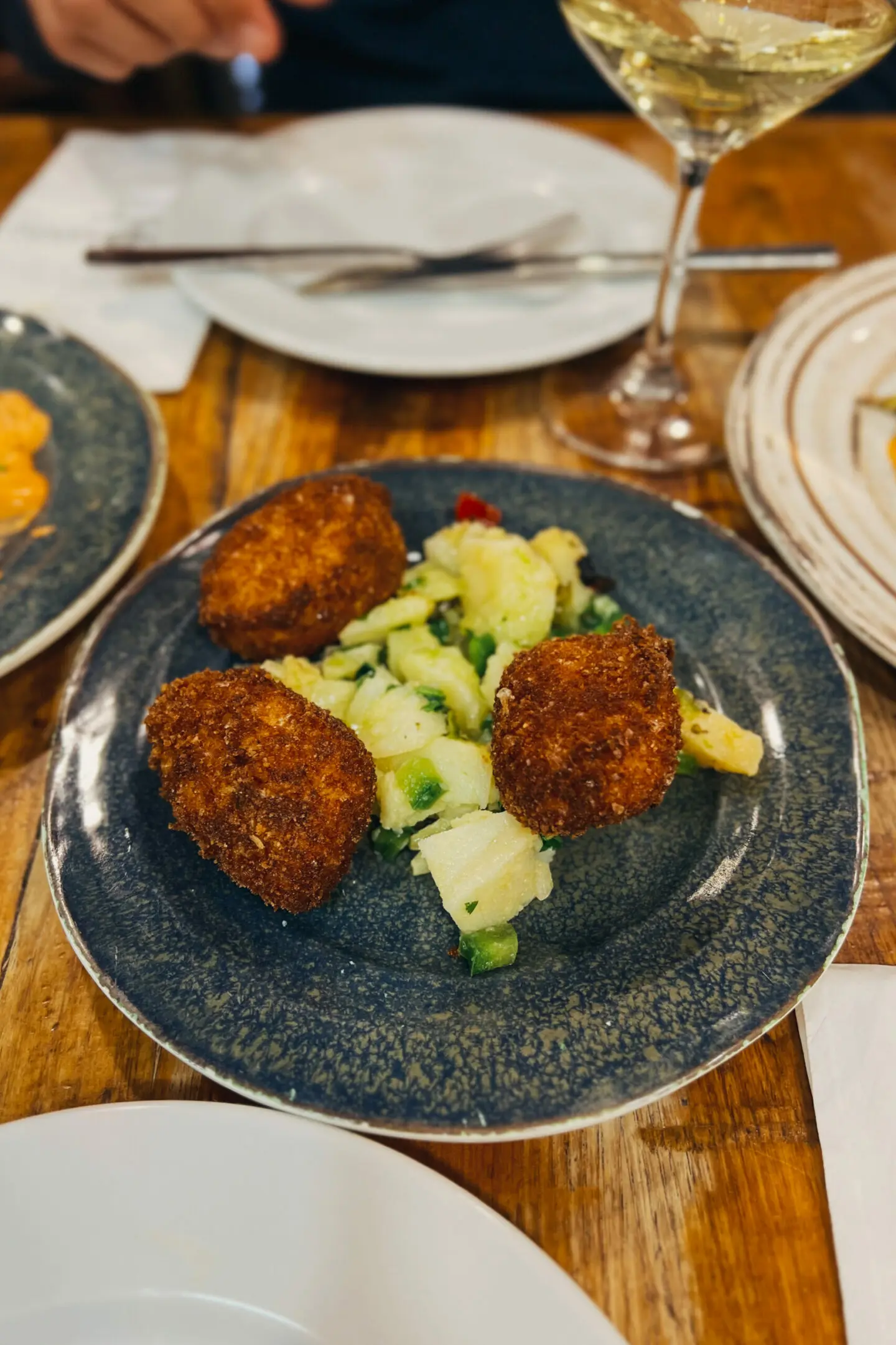
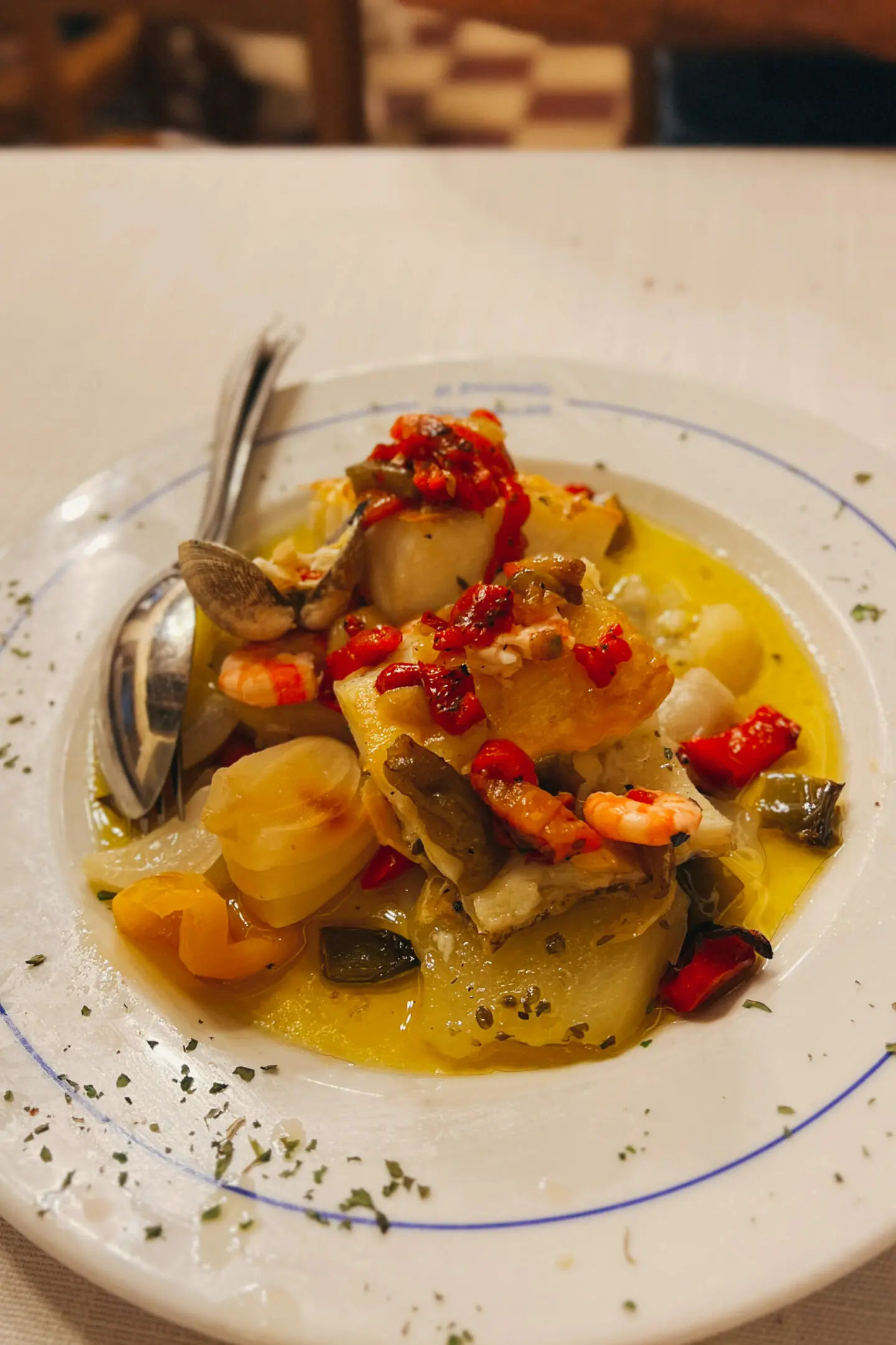

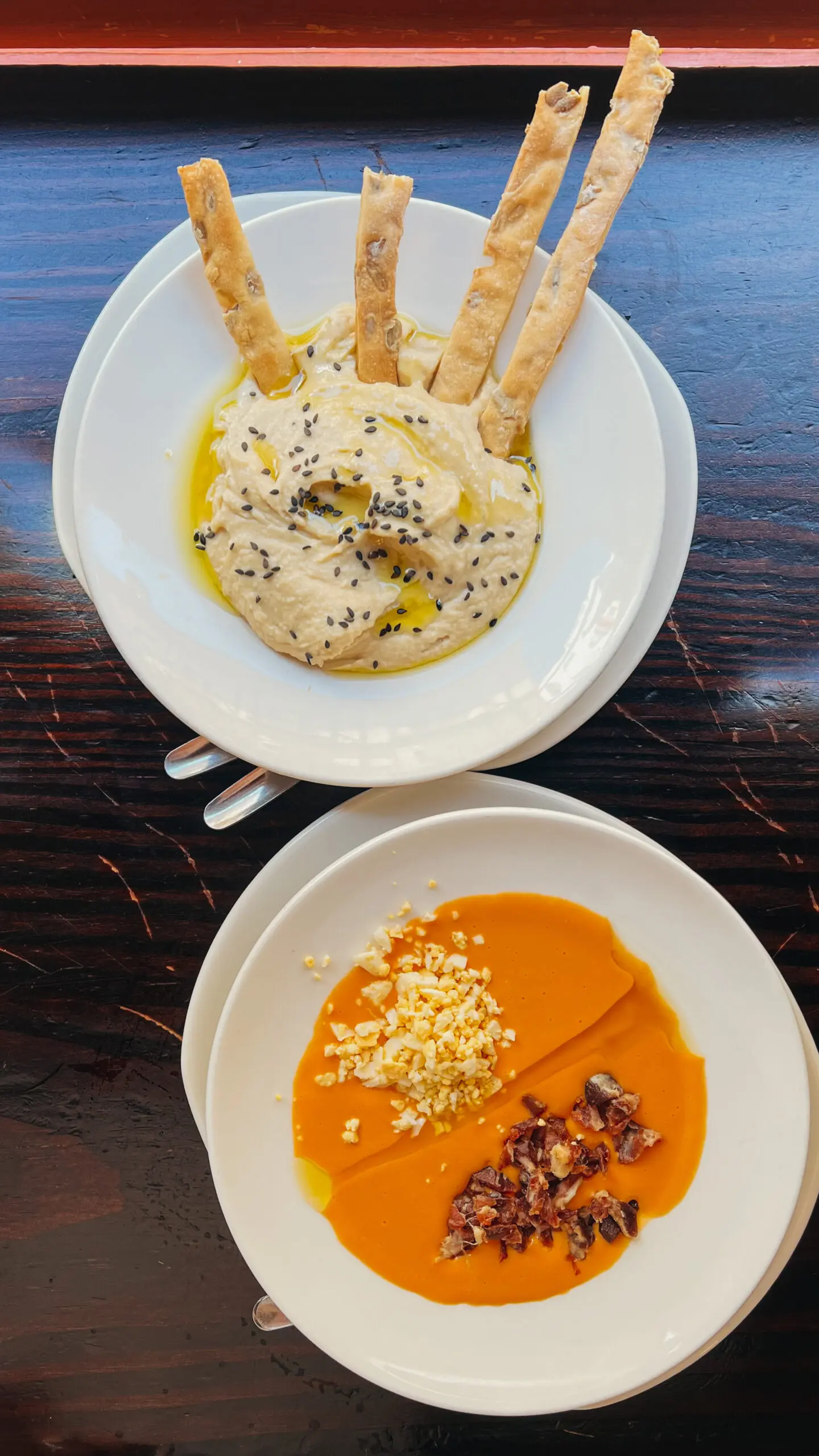
Things to know about Andalusia
Here are a few things you’d like to know about Andalusia to make your trip run a little more smoothly:
- Tap water is safe to drink so bring your reusable water bottle and travel plastic-free;
- Siesta time usually happens at the hottest hours of the day, somewhere between 3-4pm and 7-8pm (especially in summer). On Sundays, most conveniences are also shut.
- Public holidays: Spain is one of the country with the highest number of public holidays! This means there is always a fiesta somewhere so make sure to check ahead for shop, restaurants, activities and road closures.
- Bring extra layers if you’re traveling in the mountains and white villages, as it can get cooler in the evenings.
Andalusia is one of my favorite regions in Spain and definitely one of my favorite places to travel to in Europe! I hope this travel guide will inspire you to visit Andalusia and maybe to explore it in your campervan! I’ve put everything I thought would be useful for you to plan your best trip there. You can also check all of my stories highlights on Instagram. As always, feel free to ask me anything via the comments on this page or DM! Don’t forget to tag me in your stories and posts if this articles inspired you!
With love,
Marina
If you liked this post, pin it for later!

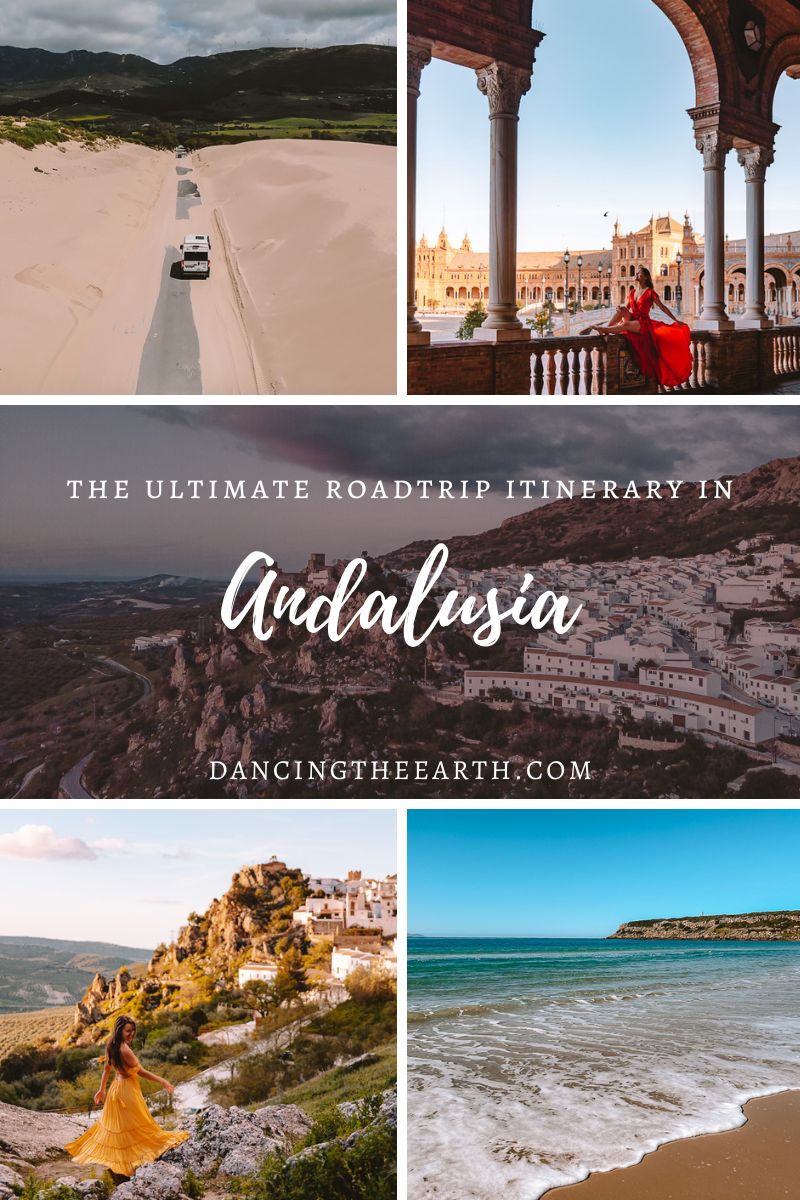
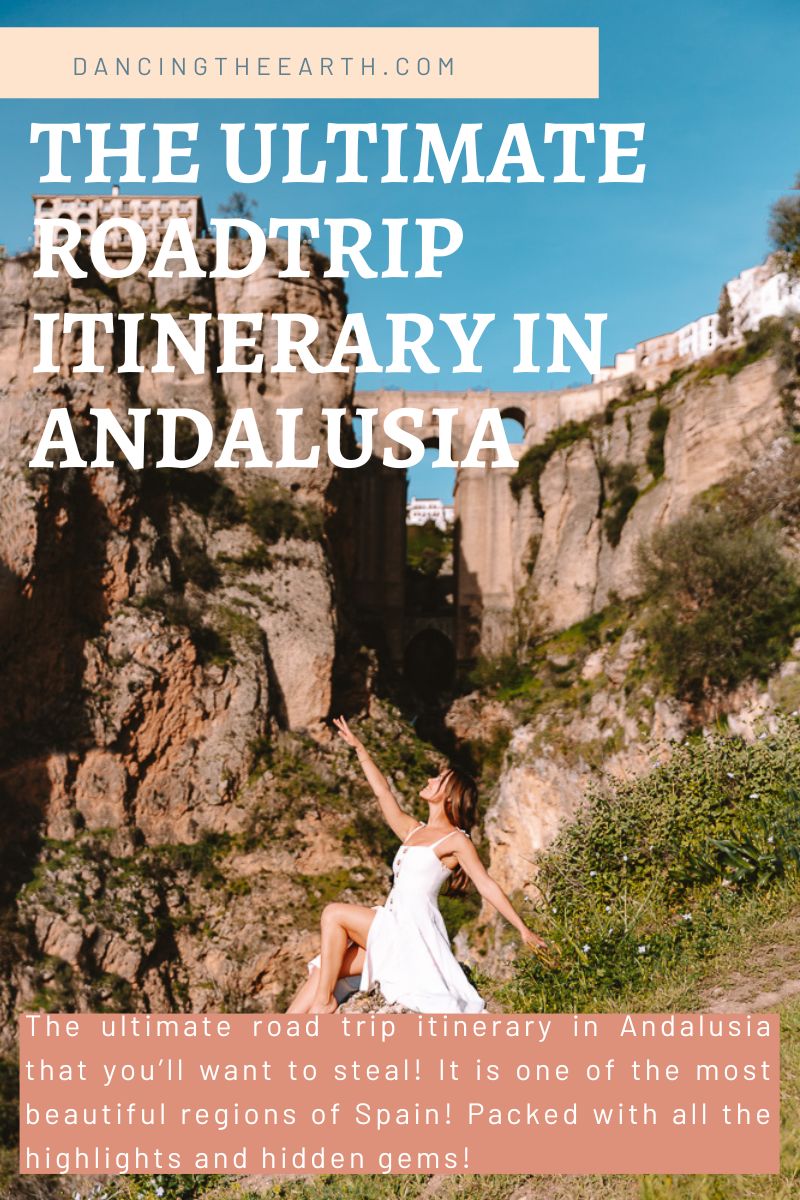
We’re always looking for new places to explore during the winter. Andalusia looks like a great one to add, given the weather and relative lack of crowds that time of year.
Author
Yes I would definitely recommend winter time or early spring / late autumn !
What a magical road trip! Iznájar looks especially beautiful! Andalusia just got bumped up my bucket list! Thanks for the great guide!
Author
You’re welcome! I really love it there 🙂
We have been to the Andalucia area in Spain a few times. Your itinerary is a great one to start with. And even includes a few spots we have yet to visit. Sure makes me happy we are heading back in the Fall.
Author
Aww I’m happy to read that! It should be a great time to visit in fall!
Hey, that’s a lot to see in two weeks! I’m glad I had two months – but we all see the world differently. Thanks for the memories.
Author
We did it all and didn’t think it was a lot! We also took time in freecamps we liked to just relax and enjoy the moment so it was a great balance 🙂 two months sound incredible tho ! 😍
Wow, stunning photos! I’ve never been to Andalusia but road tripping it sounds like a great way to explore the region.
Author
Thank you! I think it’s the best way to see it all (or at least most of it!)
This is such an interesting idea – road trip through Andalusia! These sound like really good location picks for exploring the region.
Author
I think it’s the best way to explore this region, which has so much to offer!
So many beautiful little towns. I would love to see them all!
Author
They’re all unique in Spain and so beautiful, really worth visiting!
Dear Marina, thank you for producing such informative and beautiful article! We will follow your route, hire the campervan, and explore the Andulucia area for the first time. I am going to look at your dresses too!
Author
That’s amazing! Hope you’ll have a great time exploring Andalucia! Please do let me know if there’s places where you would have like more details or if my explanations weren’t quite right 🙂 happy to update and improve!
Fantastic IItinerary. You packed in quite a lot. Lots of moving around but I liked it. Saving it for future use.
Author
It’s easier to move around with a van! If you have to change accommodation, it’s better to divide the region in a few different areas and spend 3-4 days in each 🙂
I remember watching a lot of glimpses of Granada in a k-drama, I fell in love with it. I so wanted to visit the place. I hope to…soon.
Author
Yesss it’s breathtaking!!! Hope you can visit soon 🙂
Your photos are so lovely and I really love the map! Great itinerary. I can’t wait to go back to this region of Spain, it’s been tooo long since I’ve been.
Author
Thank you so much! It’s one of my favorite part of Spain, I could go back every year!